
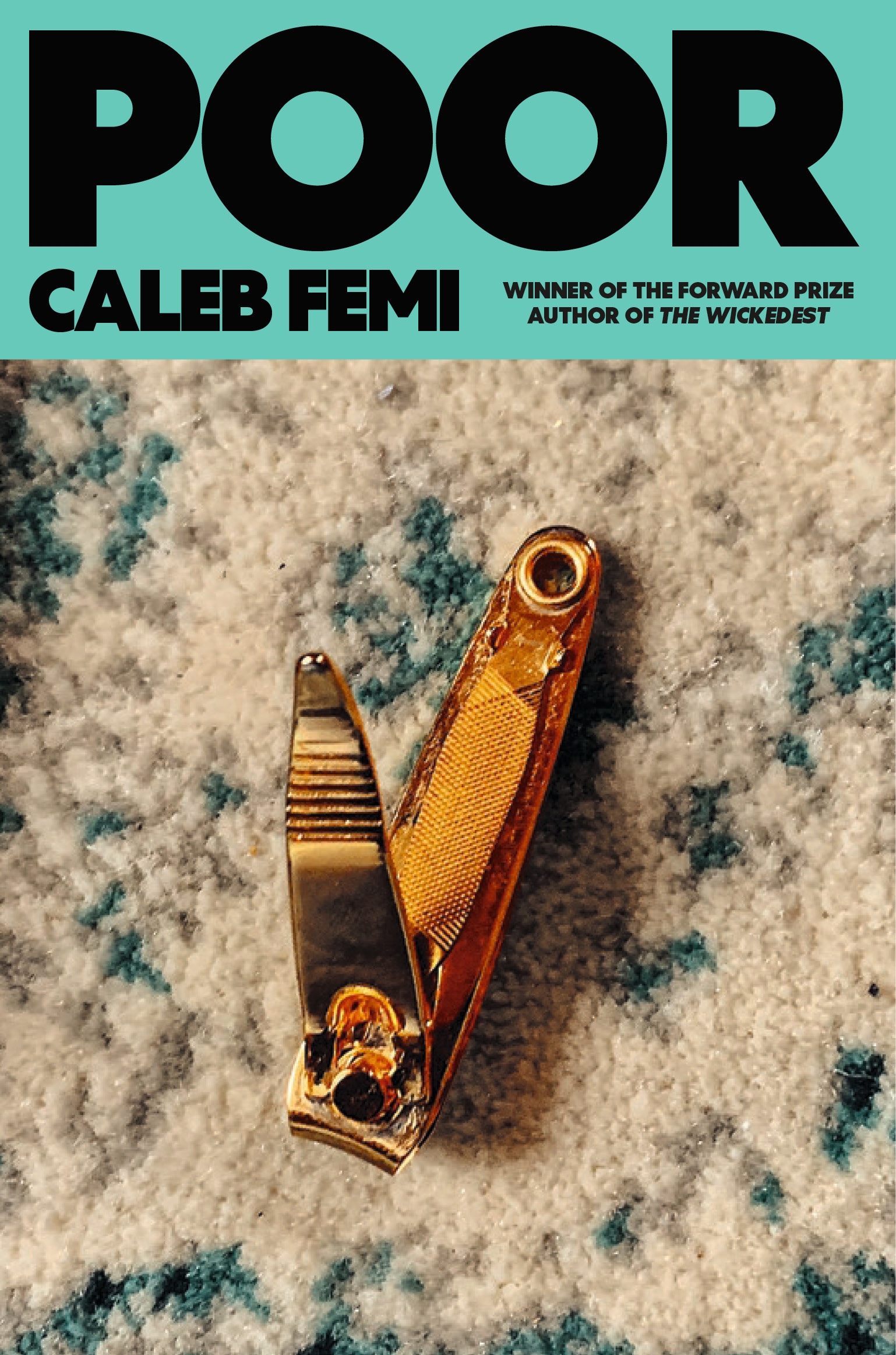
Nigerian-British poet, filmmaker, and photographer Caleb Femi’s debut collection, POOR, has already left an undeniable mark on contemporary poetry. Femi, the first Young People’s Laureate for London, saw the book first published in the UK in 2020. The book went on to win the Forward Prize for Best First Collection and received widespread critical acclaim, appearing on multiple year-end best-of lists across British media. Now, with the release of its American edition set for January 27th 2026, POOR enters a new phase of its life.
Deeds Magazine sat down with Femi to unfold the layers of youth, masculinity, and survival in South London that shaped POOR, and to consider how the work resonates in conversation with American literary traditions.
.jpg)
Caleb, welcome back! We were last in New York for the launch party of The Wickedest, when you mentioned working on five things at once. Before we unfold the US release of your debut, tell us, in your own words, what have you been up to over the past year?
I remember that night in New York fondly. Since The Wickedest launch, life has been a whirlwind of creativity. Over the past year I’ve been fully focused on getting my concept hub SLOGhouse off the ground. SLOGhouse is a creative space – a kind of ideas laboratory – where my team and I take concepts from a spark of inspiration through to full realisation. Most importantly, like everyone else in these challenging times, I've been learning how to breathe and find balance in a world that sometimes makes it difficult.
I remember how I felt when POOR was first introduced in the UK, and now reading it again, it is almost like revisiting an old friend. After five years and numerous awards, why do you believe it is important, now more than ever, for this work to be brought back to light and to an American audience?
It’s amazing to think it’s been five years since Poor first came out. Back in 2020, the book spoke to a moment and a place but the core themes have only grown more resonant since then. In the years that followed, we’ve all lived through some pretty seismic changes: a global pandemic, a louder global conversation about racial injustice, and ongoing struggles with inequality. Poor was always about giving voice to experiences of community, race, class, and hope within hardship. Now, more than ever, those conversations are alive worldwide, including in America.
Bringing Poor to an American audience at this moment feels timely and important because the themes in it aren’t just British – they’re universal. I want Poor to reach people who might see their own stories reflected or at least gain insight into lives that mirror struggles in their own cities. The issues of disenfranchised youth, of finding joy and magic in tough circumstances, of grappling with the legacy of structural inequality – these are as relevant in Chicago or New York as they are in London. Sharing Poor with American readers now, after it’s matured and gathered energy over five years, is like reopening a dialogue. My hope is that it sparks fresh discussions and connections in a context that, while different, has its own very similar echoes of the world I wrote about.
Looking back, I’m sure you feel as though you were a completely different person in 2020. If not, then at least a younger version of yourself. What is apparent to you now that wasn’t then?
The Caleb who wrote Poor in 2020 was hungry to express a very specific slice of life – I poured my heart into capturing my youth in Peckham, the pain and beauty of it. Now, five years on, I can say I’ve grown and my perspective has broadened. One big thing that’s apparent to me now, which I maybe didn’t fully grasp back then, is that there are even more wonderful things in the world to experience than I had imagined. Back then I thought I understood the breadth of life – the struggles and the joys – but traveling, meeting people from all over, and pushing myself into new creative arenas has shown me that my world is so much larger than I thought it was.
That perspective keeps me humble and excited for what’s next.
When I spent time in New York this summer, I was struck by how differently readers interact with books compared to Europe. Here, literature feels deeply community-based – from bookstore bars to book clubs and retreats. In Harlem, for example, you’ll come across authors who take to the streets not only to sell copies but also to interact directly with their surroundings. With that in mind, American readers are encountering POOR in a different cultural context. What conversations do you hope the book sparks here that might be distinct from those in the UK?
That’s a fascinating observation, and it gets me excited about Poor finding a home in this different literary ecosystem. Honestly, the conversations it might spark in the US are the great unknown that I’m really looking forward to discovering. Every community will interpret a story through its own lens. In the UK, Poor sparked conversations about council estates, youth clubs, and the specific dynamics of London’s changing neighbourhoods. In the US, I hope readers will bring Poor into their own community contexts – maybe it’ll resonate with people in the Bronx, South Side Chicago, or Oakland in ways that I can’t fully predict. I’m eager to see the book take on a new life with new layers and intersections in America.
One thing I’ve always intended with Poor is for it to be a conversation starter rather than a prescriptive statement. The book was meant to be part of a trans-global conversation about the experiences of marginalised communities, not a didactic text that tells people what to think. I didn’t write it to control or shape anyone’s narrative. I wrote it to share a piece of my world and invite others to share theirs in response. So if American readers start discussing parallels between Peckham and, say, Brooklyn or Detroit – or even if they debate differences – that’s fantastic. I hope Poor inspires people to talk to each other about their own communities. The best outcome is if it encourages community storytelling, people saying, “This reminds me of my neighbourhood,” or asking, “How do our experiences overlap or diverge?” Those are the organic, grassroots conversations I’m excited to see unfold.
POOR touches on subjects of belonging, grief, boyhood and much more. In your opinion, are there aspects of the American experience or literary scene that mirror the world you depict in POOR?
Absolutely. Even though Poor is grounded in the specifics of South London, it asks readers to zoom out and consider the collective experiences of working-class cities throughout the West. Many American cities share the same stories at their core. The book is, in many ways, an indictment of the same forces that shape urban life in America: the legacy of colonialism, the grinding gears of capitalism, and how those play out in architecture and environment.
Within Poor, everything is filtered through the framework of Black youth culture in a London estate. But if you strip away the place-names, the essence could be the story of kids in any number of American cities. There’s a shared resilience and creativity I’ve seen in both British and American youth communities. Hip-hop was born in the Bronx and found an echo in London’s rap scene – young people on both sides of the Atlantic use music, style, and language in similar ways to survive the concrete jungle. So yes, the American experience has many mirrors to what I write about. Readers in the U.S. will see parallels in the systemic challenges, things like over-policing, underfunded schools, or gentrification, and they’ll also recognise the joy and vibrancy that come with making the best of limited resources. The U.S. literary scene has long grappled with these themes too, so I think Poor enters a conversation American writers and readers are already engaged in, reinforcing that these struggles and triumphs transcend any one city or country.
British and American poetry traditions share a lineage but often speak in different cadences. What, if anything, do you admire or absorb from U.S. poets past or present?
I’ve always felt that I’m in conversation with poets from everywhere, and American poets have been a huge influence on me. In fact, in Poor I directly nod to a few American voices that mean a lot to me. I quote lines from poets like Joshua Bennett, Claudia Rankine, Nate Marshall, and Terrance Hayes within the book. Each of these writers brings something unique that I admire.
There’s a long history of British writers finding new meaning for their work when it reaches America, from Baldwin’s time in Paris to grime artists performing in New York. Have you felt that same sense of reinterpretation or renewal while bringing POOR across the Atlantic?
Yes, absolutely. Even as Poor is just now formally releasing in the U.S., I’ve already felt a kind of renewal in the process of bringing it here. It’s a bit like hearing a song you wrote being covered by someone else – you suddenly pick up on different notes. When I share poems from Poor with American audiences, I notice they react to things in ways that London audiences might not, and that in turn makes me see my own work differently. Certain references or slang that are commonplace in South London might prompt curiosity or a fresh understanding here. That reminds me that literature lives and breathes differently depending on where it lands.
If POOR began as a love letter to South London, what kind of letter does its U.S. release feel like now? A conversation, an invitation, or maybe a continuation of something larger between two creative worlds?
I’d say the U.S. release of Poor feels less like a single letter and more like I’ve entered into an ongoing conversation, one that crosses the ocean. It’s as if that love letter to South London has grown up and found a pen pal overseas. When Poor was just in the UK, it was my intimate message to my home. Now, bringing it to America, it feels like I’m opening that message up and saying, “Alright, your turn, how does this resonate with you, and what can you tell me about your home in return?” So it’s definitely a two-way conversation. American readers will bring their own experiences to it, so the book becomes an invitation to dialogue.
It’s also a continuation of a larger dialogue that’s long existed between creative communities in the UK and the US. We’re often grappling with similar core questions – like how we got here as a generation and where we go next. The release of Poor here adds another voice to that transatlantic discussion. It’s adding a London perspective into American narratives, and in doing so, it carries forward a shared story about working-class life, inequality, art, and hope on both sides of the pond.
When American readers land on the final page of POOR and close the book, what do you hope stays with them from literally a chapter of your life? Is it a feeling, a question, or maybe a kind of recognition?
More than anything, I hope they walk away with a sense of recognition – a feeling that, even if the specifics of my life in South London are different from their own story, there’s a common human heartbeat between us. Whether a reader is a young person in Atlanta or an elder in Seattle, I want them to recognise some part of themselves or someone they know in these pages. That recognition can breed empathy: maybe someone from a very different background finishes the book and feels like they’ve lived a bit of my life, or sees their neighbours’ struggles in a new light. That would mean a lot to me.
I also hope there’s a feeling of catharsis. Poor doesn’t shy away from grief, anger, or loss. I delve into painful memories and the weight of injustice, but I do it to unearth those emotions and share them. If a reader goes through those poems and feels a release then it’s done one of its most important jobs. And tied to that catharsis, I’d love if readers feel a surge of invigoration, a kind of inspired momentum to keep moving forward. Despite the heavy themes, Poor is also about hope and resilience, about finding magic in the margins. So ideally, closing the book leaves someone not in despair but galvanised, asking themselves what they can do in their own world or simply feeling less alone in their fight. Whether it’s a question about societal change or just the subtle uplift of having been understood, I want that final note to energise them. In essence, I hope Poor gives its readers a mix of recognition, relief, and resolve.
My final question is more out of curiosity on my end: out of all the photographs accompanying your poems, what led you to choose the nail clipper for the cover? And what does it signify to you?
Ah, the golden nail clipper, I love this question. That nail clipper is a humble, everyday object, something virtually everyone owns or has used. In the homes I grew up around (and certainly in my own household), a nail cutter was a staple item you’d find in a drawer or bathroom shelf. It’s mundane and ordinary, and that’s partly why I was drawn to it. I wanted the cover image of Poor to be immediately relatable – something anyone might recognise and have a memory of. At the same time, the nail clipper being gold is intentional.
For me, the gold nail clipper hints at finding luxury or value in the everyday. In communities that are economically poor, there’s still a rich sense of style and pride. People might not have much, but they often have one object that brings a bit of sparkle, a little symbol of aspiration or taste. A nail clipper works the same whether it’s gold-plated or plain steel, and that’s the point: making it gold doesn’t change its function, but it speaks to our desire for beauty and status, even in small things. So that image encapsulates a lot of what Poor is about, ordinary people with big dreams. It’s an everyday tool dressed up like treasure. I thought that was a fitting emblem for the book, and I hoped it would make people pause, maybe smile, and think about the mix of hardship and hope inside.
Related articles:
Exploring ‘The Wickedest’ at Caleb Femi’s Book Launch in NYC
3 Poetry Books You Should Read This Black History Month

To describe the atmosphere in the O2 Shepards Academy as electric feels like an understatement. That vibrant energy set the tone for Destin Conrad’s Love On Digital tour as it made its way to London before closing out in Manchester.
The R&B song took to the stage in a maroon jumpsuit with black gloves and black shades, exuding full superstar vibes before entertaining the crowd for an hour and a half. The audience's energy was electric, singing along passionately to hits from his debut album and previous EPs, creating an immersive concert experience.
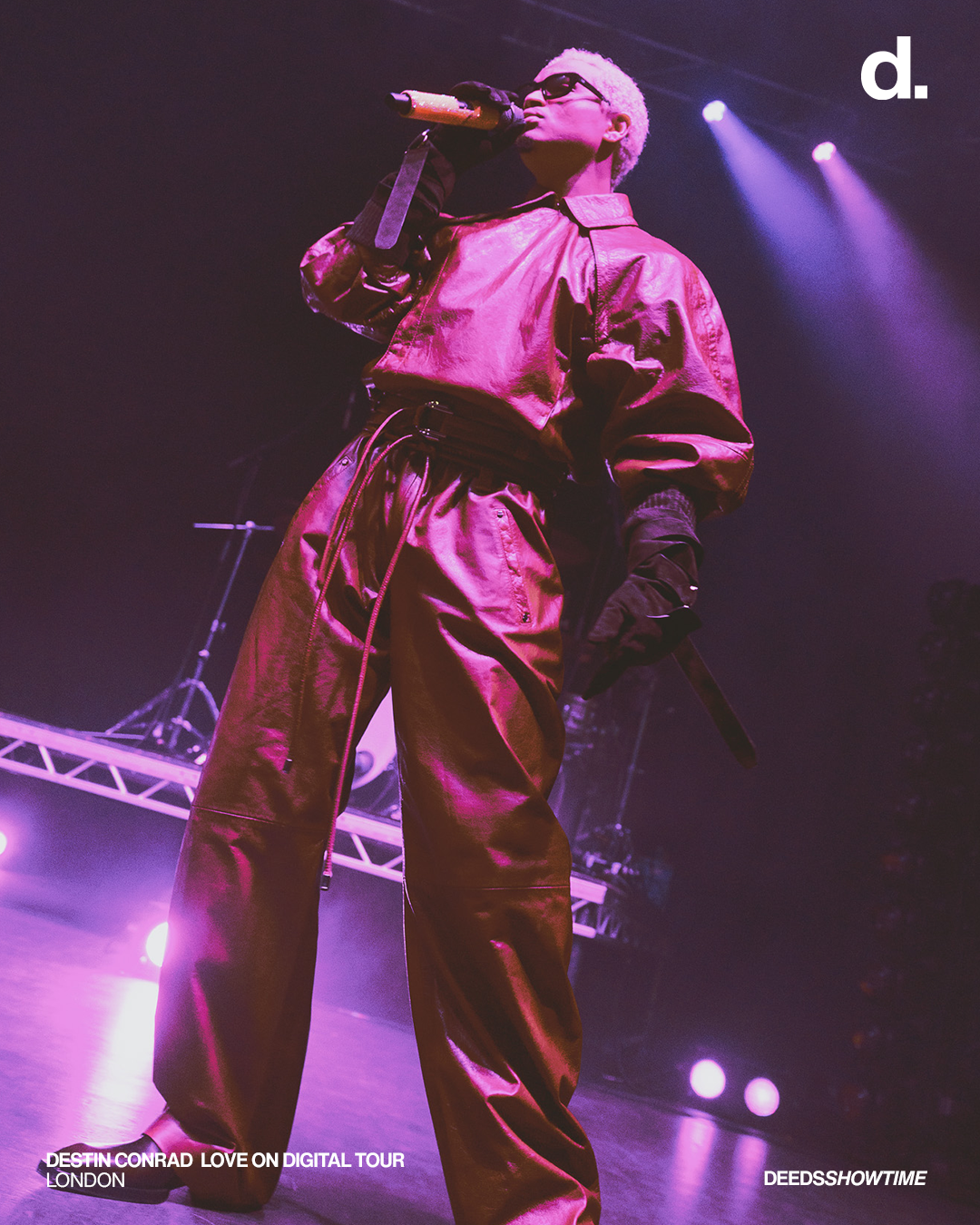
The last time Destin took to the stage in London was in 2024, as part of his Submissive tour, playing two nights at Camden's KOKO and making an appearance at the Recipe Festival. Returning to this moment, it feels like a significant step forward in his journey. With nobody else on stage besides his two-piece band, he brought everything to the stage, showcasing his development.
Before taking the stage, he was joined by Mack Keane and CARi, who served as the opening acts, warming up the crowd. CARI delivered a 30-minute set playing songs from her debut EP FLUX, including the tracks “Luvhiii”, Colder in June”, Bleeding”, as well as a cover of Ne-Yo’s “Closer”.

Opening the show with Mr E Destin, who performed several of his songs, the audience was fully engaged, singing along word for word. Moments of the show included album favourite “BAD BITCHES” which had the crowd singing at the top of their lungs, along with other hits like “JUMPIN”, "THE LAST TIME”, "DELUSSIONAL”, "PBS”, as well as “ ITS ONLY YOU”, "OUTTA CONTROL”, "BILL$ “, and "SAME MISTAKE”. Destin, who clearly appreciates London, was treated to not one but two guest appearances from friends kwn, who performed her EP standout “Do What I Say”, and Sasha Keable, who joined him fortheir track “AUCTION”.
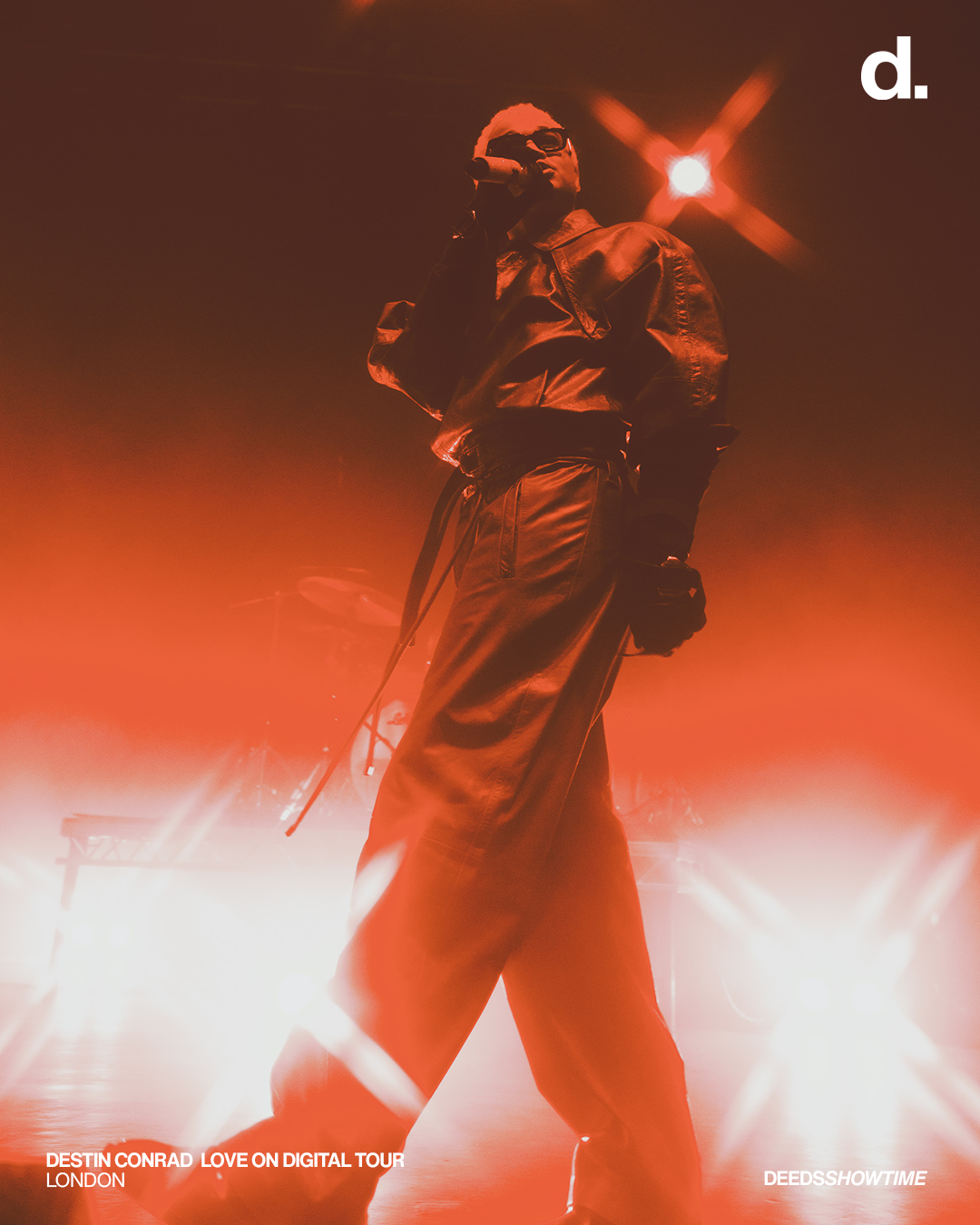
All in all, Destin’s show showcased his current position in the R&B space, as he delivered a well-worth-seeing performance of his GRAMMY Award-nominated album and let people know he has a lot more in store for where he is going.
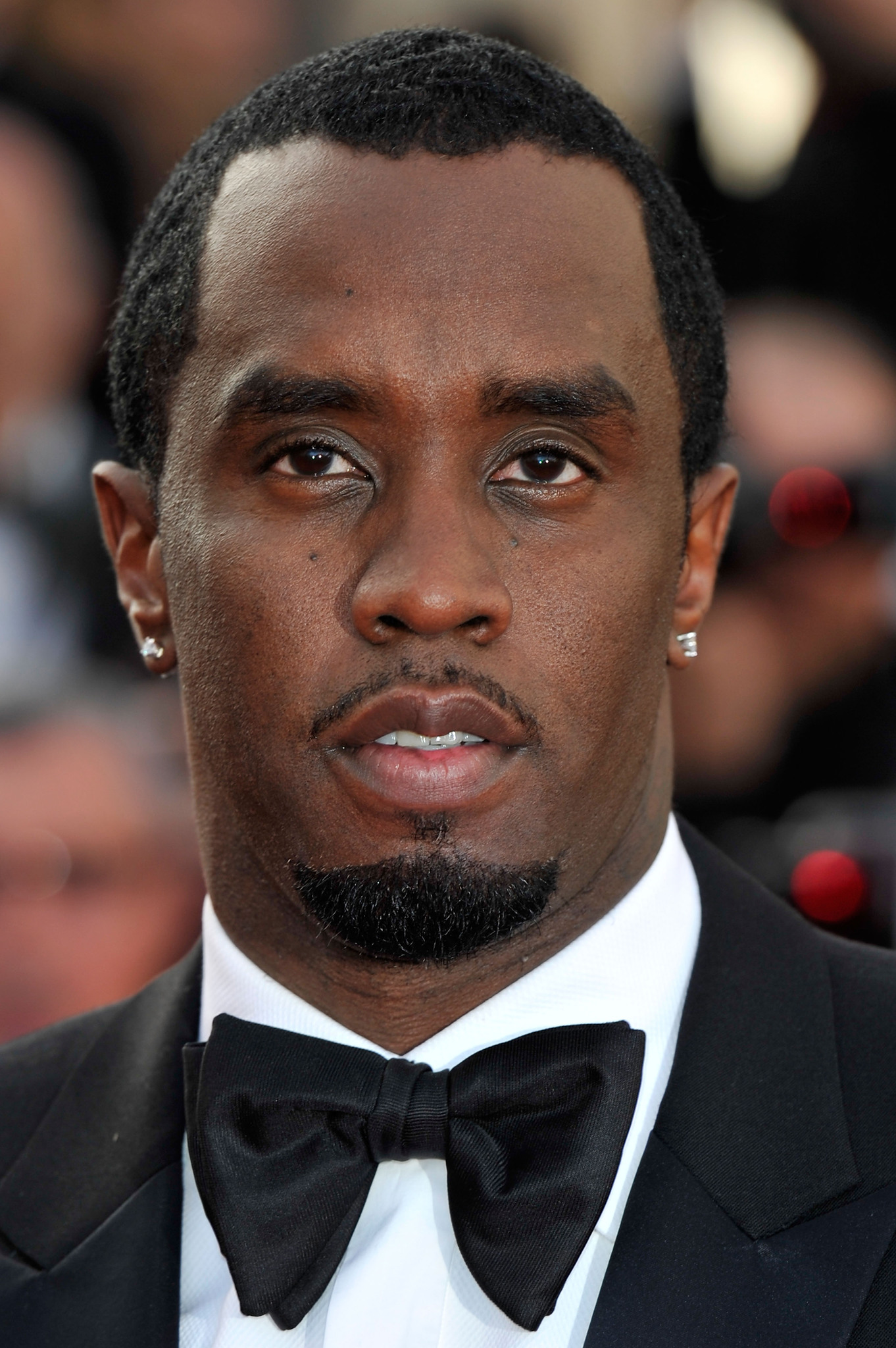
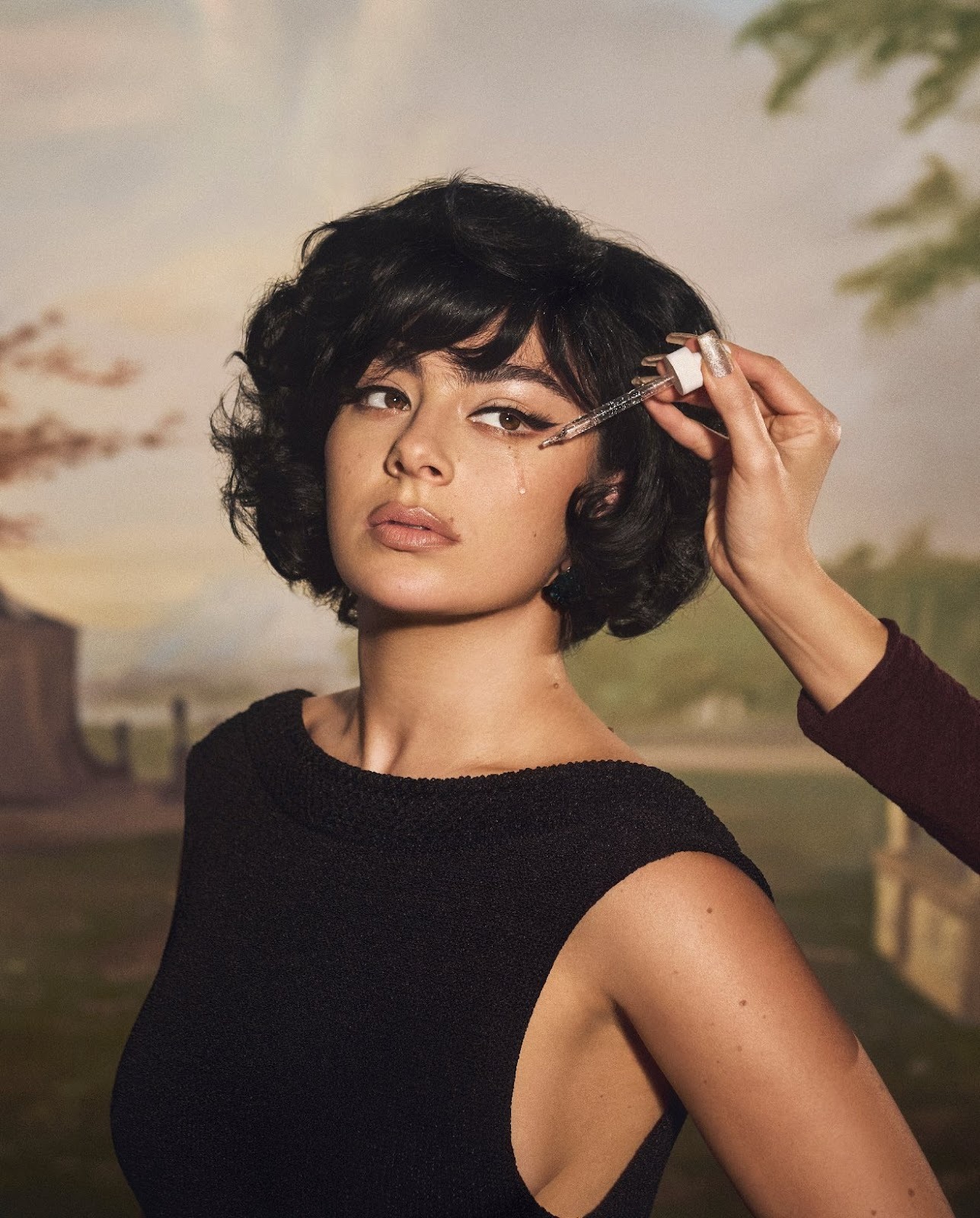
It’s something of a paradox: even as the year slowly grinds to a halt, as the drudgery of work slowly starts to give way to the lassitude of the festive season, the pop machine keeps churning at an even greater intensity. This week in pop culture, as usual, has brought a flurry of sizzling hot topics, many of which satisfy our primal desire for entertainment. But beyond this, many of the issues in this installment function as public reckonings of sorts, asking, urging, prodding us to ponder the society we live in. The welter of criticism lobbed at Timothy Chalamet is one such topic, bringing to the fore the internet’s tendency for mindless antagonism. Following a speech in which he praised his performances over the past few years, a critical mass of people began to call for him to show more humility. Others have been less charitable and have taken to calling him names. What’s especially confounding about this incident is that his charisma is what initially inspired his feverish following.
In this installment of PopTakes, I also interrogate and share my thoughts on an array of topics including the new Diddy series, the controversy stirred by an essay Charlie XCX published on her Substack, as well as others.
The Internet Reacts To The New Diddy Series
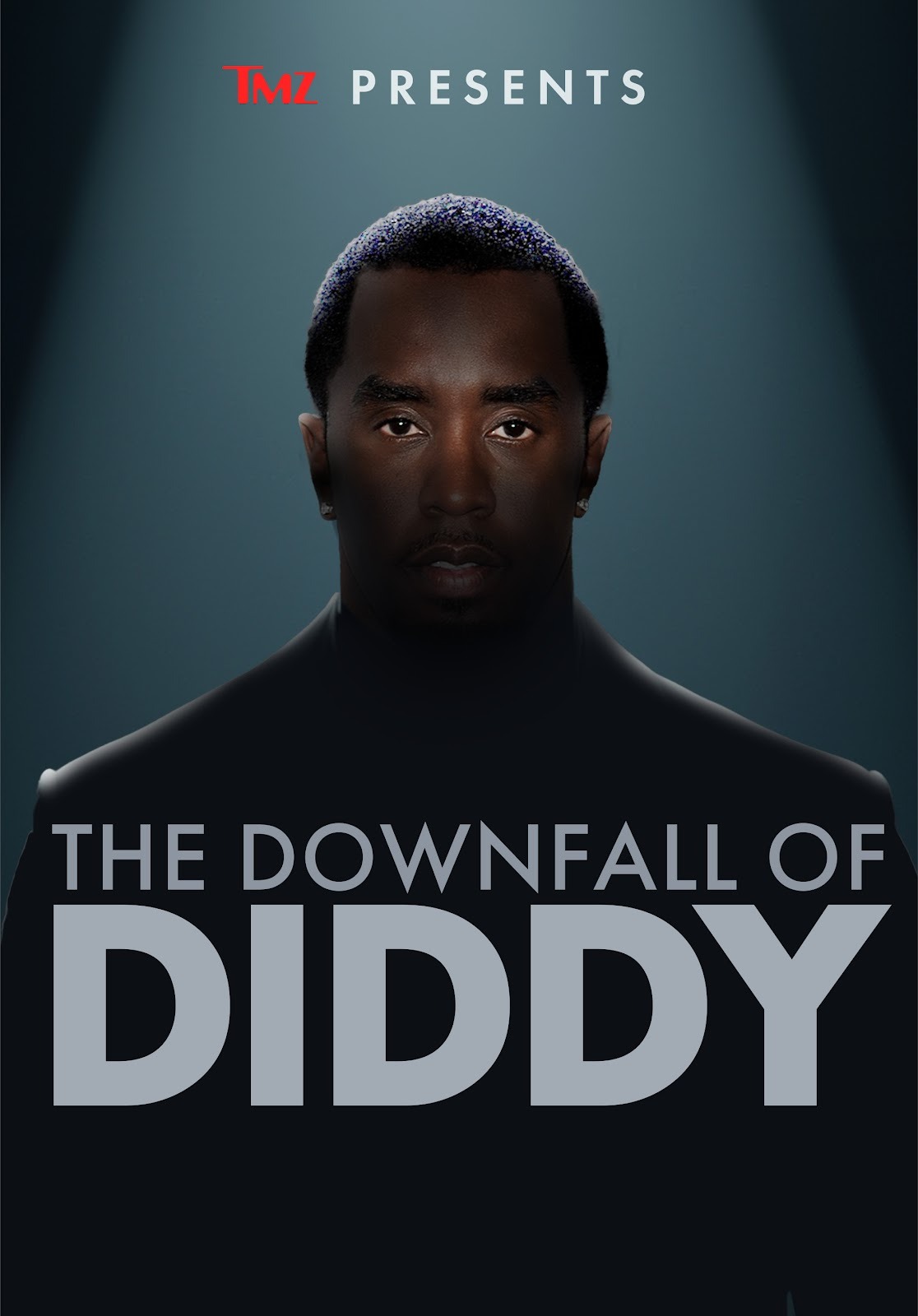
In the past year, we have collectively watched, with a mix of shock and disdain, as details on the range of crimes committed by Sean “Diddy” Combs have unraveled. The disgraced rapper and music business mogul is currently serving a sentence of four years and two months after being convicted of transporting individuals for prostitution. In the months leading to his conviction, countless clips revealing troubling behavior from Diddy surfaced on the internet, including one where we see him assault and drag Cassie Ventura, his long-term former partner, down a lobby. And yet, this new documentary—Sean Combs: The Reckoning—still manages to deal a heavy blow to whatever’s left of his reputation. In an article for The Guardian, Stuart Heritage writes: “Sean Combs: The Reckoning feels like the moment of no return for him. It does such a thorough job of laying out and backing up so many horrific allegations that his way back to stardom is surely blocked forever.”
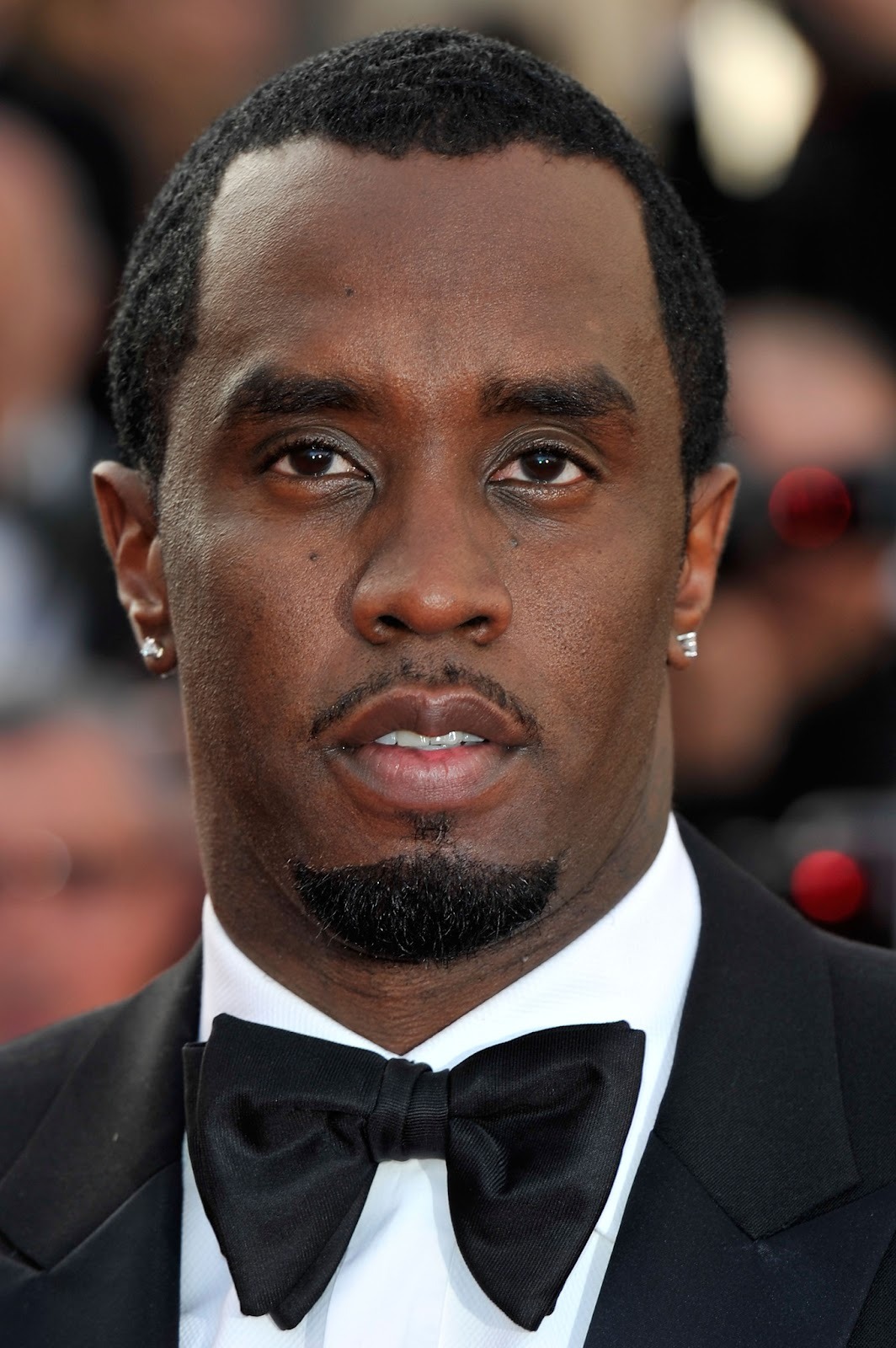
Diddy’s disgraced situation notwithstanding, some have still found ways to fawn over him. In a now-deleted tweet, popular Nigerian streamer and internet personality Shank Comics writes: “What I admire about Diddy is his perspective on the grind. His mind. The way it evolves. It's crazy! That was his talent. The ability to change or adapt. He just got lost in the pursuit of power.” After facing intense backlash, he summarily disavowed the tweet. “To be absolutely clear, I do not admire, support, or defend him in any way,” he writes in the statement. In the blitz of takes and counterpoints that have attended the release of the docuseries, my personal favorite has been a tweet, now-deleted by the way, which says something to the effect of Black people having exposed Diddy and R Kelly and that white people need to do the same with the Epstein files.
Social Media Picks Apart Charlie XCX’s Substack Essay
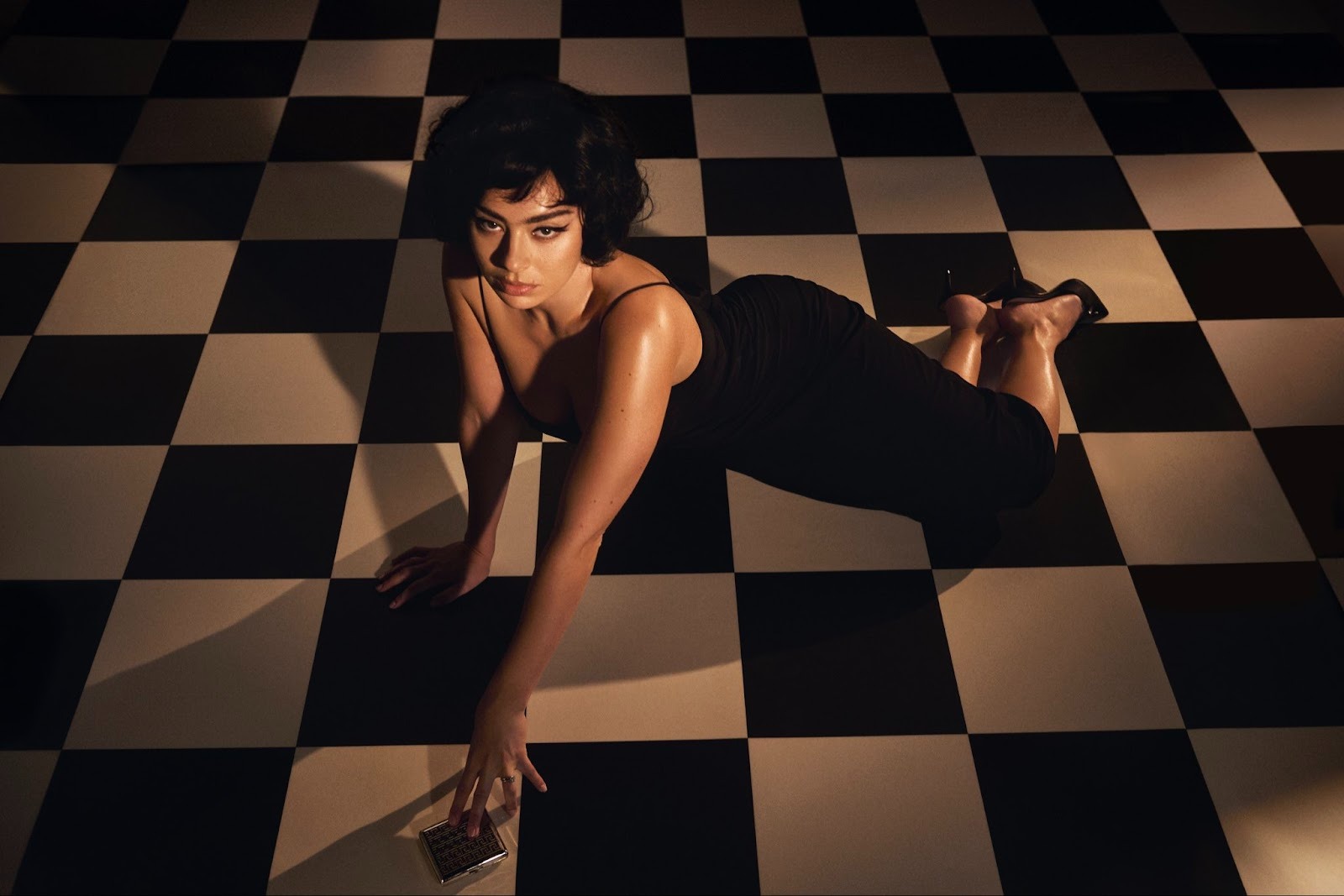
Everyone who really knows British Alt-Pop singer Charlie XCX knows she teems with ideas, interesting ones. Hardly a few minutes pass in an interview before she begins pulling at the frays of an exciting topic, displaying her characteristic iconoclasm. So her literary debut—if we can call it that—was in a sense only a matter of time. This week she posted on X an essay she titled The Death of Cool, in which she contends that coolness and commercial appeal are mutually exclusive. Put differently, she argues that one can be cool and popular. When the post popped up on my feed that Tuesday evening, I bookmarked it with the intention of reading at a more convenient time. That plan was disrupted prematurely when I began to notice hateful tweets about the essay. Contradictory, poorly edited, solipsistic, and self-serving are some adjectives her critics deployed.
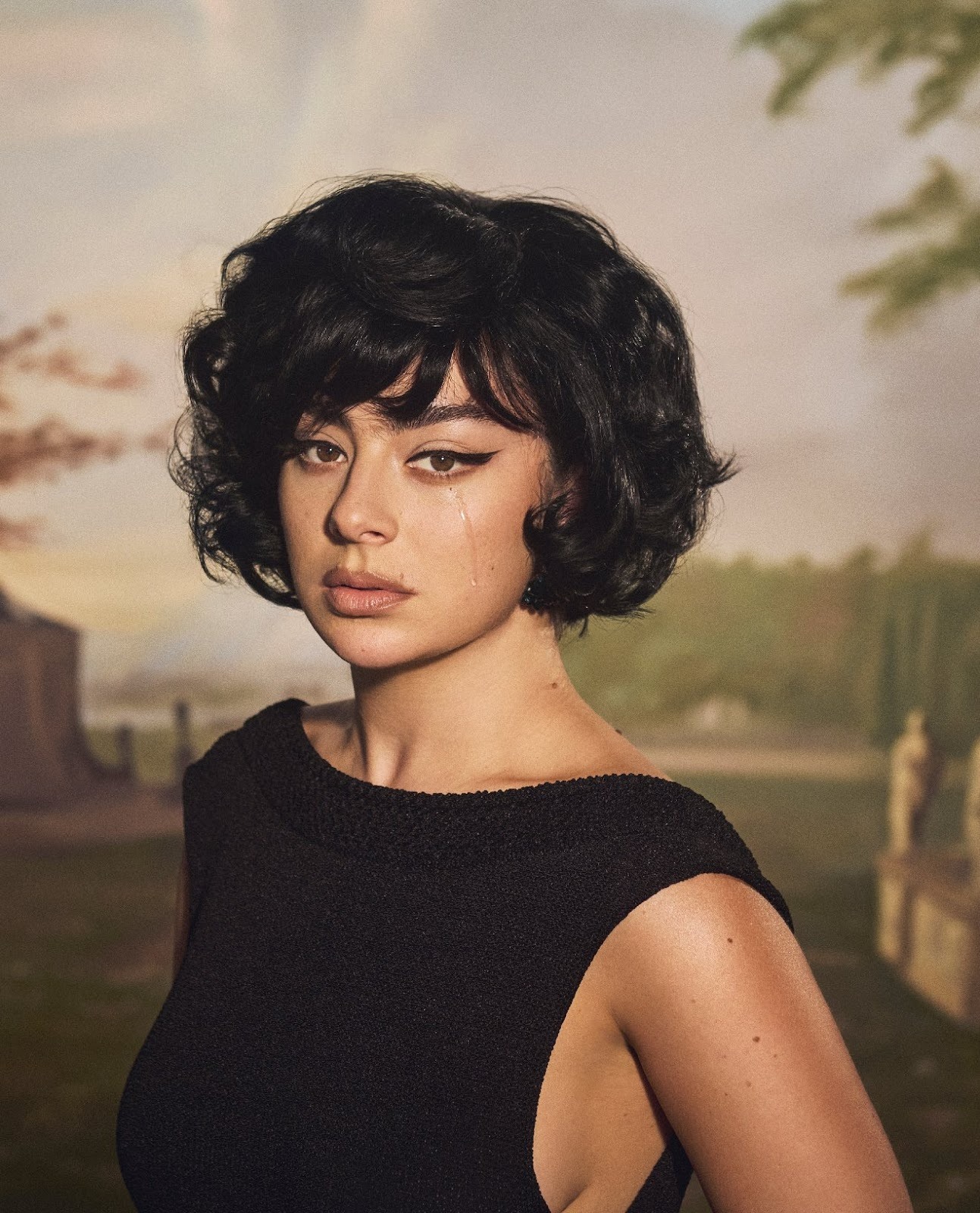
To determine if these critiques, however scathing, were warranted I hastily dove into the piece. Many of the sentences are hard to follow. Mostly because they run for so long and fail to incorporate proper punctuation. Some of the arguments she makes are either repetitive or contradictory. And yet, the essay is both exciting and insightful. Her premise—you can be cool and popular—holds. Meanwhile, the punctuation problems can easily be corrected by an editor. What I find problematic is the public’s tendency to withhold grace from people and monomaniacally focus on the negatives as opposed to giving balanced opinions.
Is Timothy Chalamet Proud or Confident?
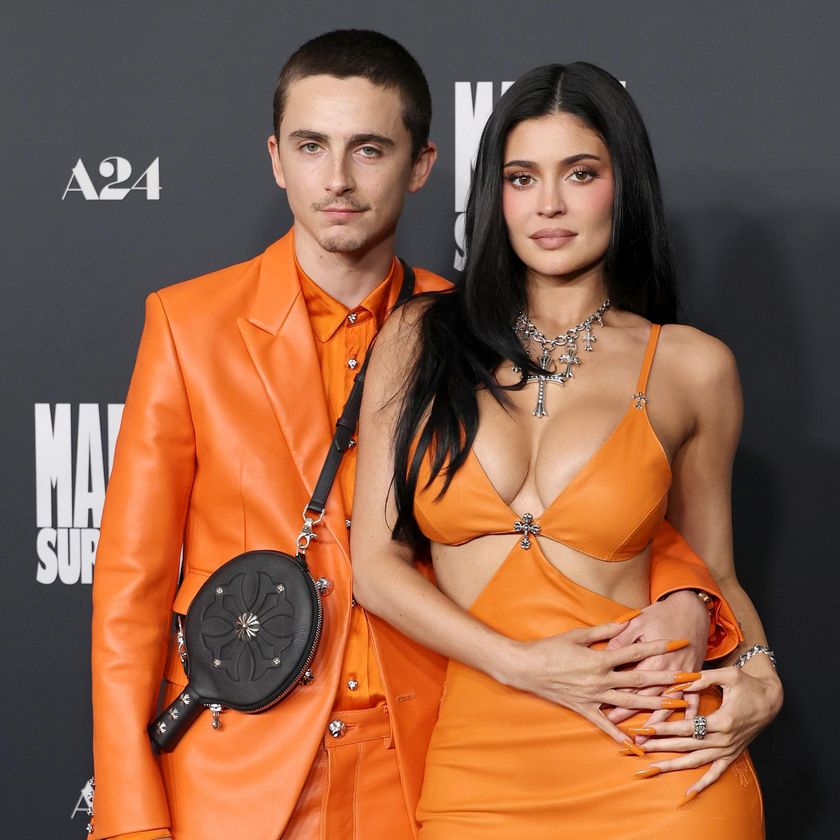
My answer to the titular question is “Who cares?” For a while now Timothy Chalamet has been on an electric press tour promoting Marty Supreme, a sports comedy-drama film produced by Josh Safdie. In it, Chalamet plays the lead character Marty Mauser, an aspiring ping pong champion. In an interview released this week, Chalamet waxes lyrically about his performance in the film. “This is probably my best performance, you know, and it’s been like seven, eight years that I’ve been handing in really, really committed top-of-the-line performances. And it’s important to say it out loud because the discipline and the work ethic I’m bringing to these things — I don’t want people to take it for granted. I don’t want to take it for granted. This is really some top-level shit.” Apparently, this rubbed many the wrong way, hence the allegations of conceit. A similar incident transpired in the wake of his Oscar reception where he said “I’m really in pursuit of greatness.” For some reason, people seem to be triggered when artists don’t put up the expected facade of meekness, which speaks volumes about the kind of society we live in today—one that prizes authenticity only when it's subject to our whims or preferences.
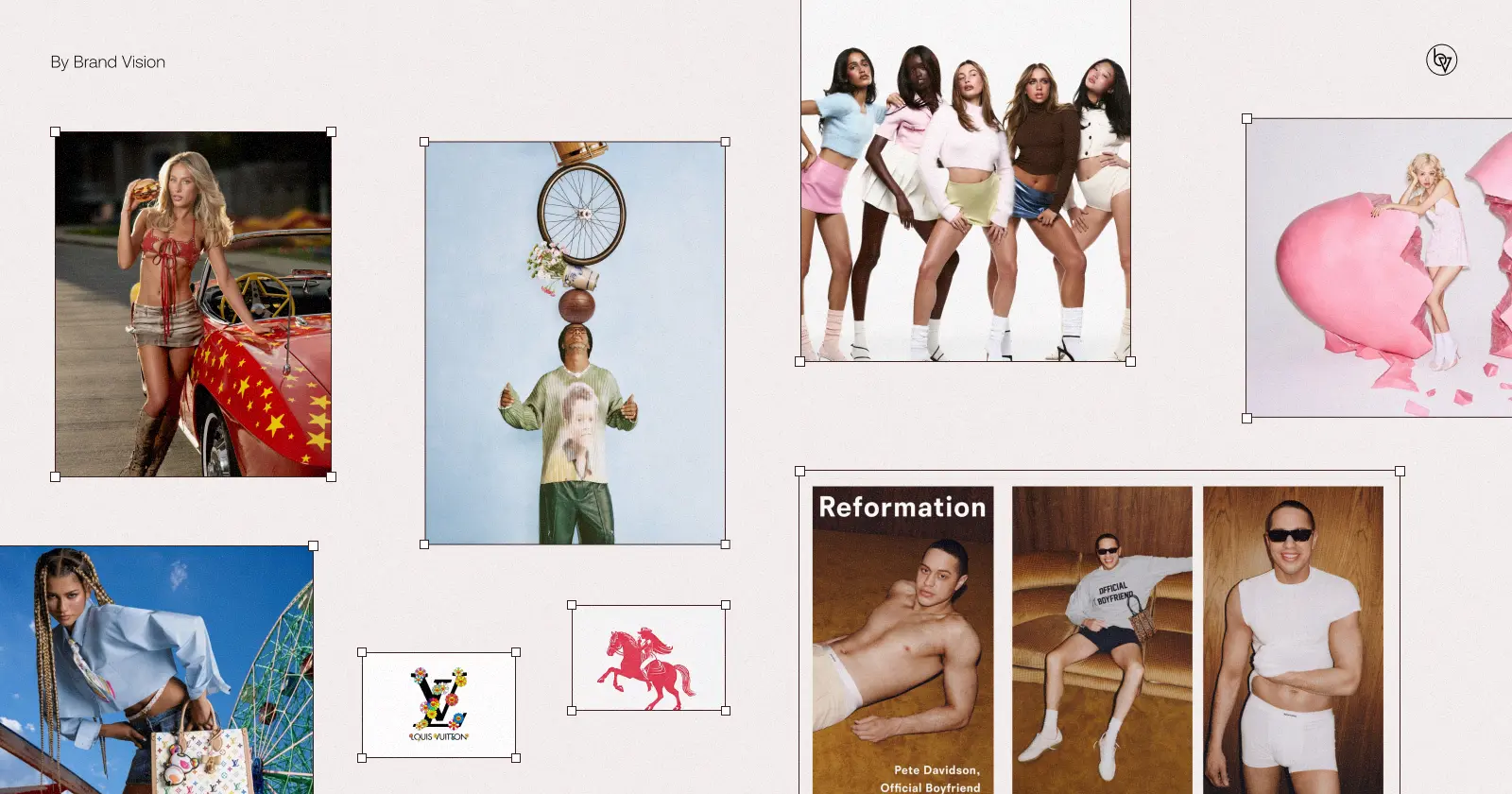
When we think about brand campaigns, we think of innovation, intrigue, and psychology, as well as other pragmatic strategies that enthuse customers to think and feel a certain way. The competitive nature of branding and the unpredictability of customer proclivities often force brands to create strategic and innovative ways to attract and sustain customer loyalty. These strategies don’t always work, but when they do, they bring unparalleled results that emphatically justify the time and resources invested. Below, we look at some of the various episodes of marketing ingenuity that propelled brand images to global reach and cultural relevance. We look at the brand campaigns that actually worked.
1. Spotify Wrapped:
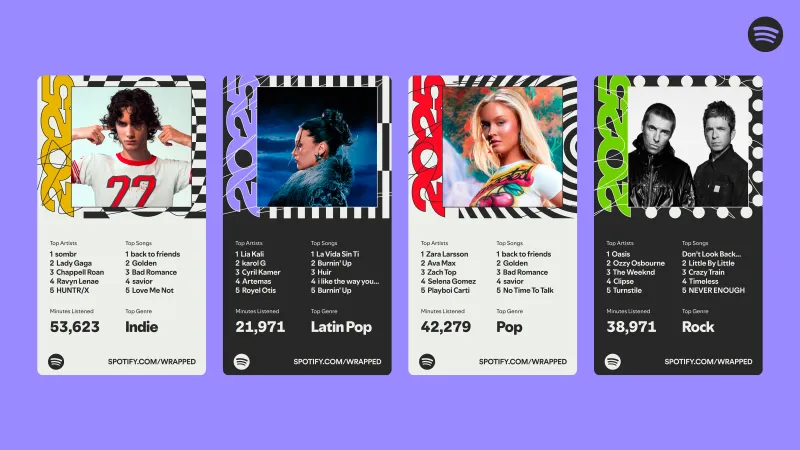
Spotify had an idea that eventually became a requisite annual activity for music lovers around the world. By compiling and curating user data into distinct, alluring categories such as “You’re in the top 0.5% of listeners” or “Your music personality is…”, Spotify found a way to effectively harness the interplay between identity, culture, and user data. Essentially, the brand found a way to compel listeners to actively engage with the app through massive organic channels, requiring little to no ad spend. The rationale behind this campaign is simple but effective—prospective and passive users are nudged through social online pressure: a compulsion to follow the crowd or be part of a distinctive, provisional social trend.
The ingenuity behind this campaign goes beyond branding theory and behavioural psychology; it also cuts across user-friendly interfaces and engineering predicated on making distribution channels seamless and carefully optimised for sharing across multiple social media platforms. The Spotify Wrapped campaign has managed to empathetically embed Spotify as an annual highlight in pop culture, making it an intricate part of our digital ethos. For the brand, this provides a buffer to keep conversations going and a foundation on which to layer future innovations.
2. Apple – Shot on iPhone:
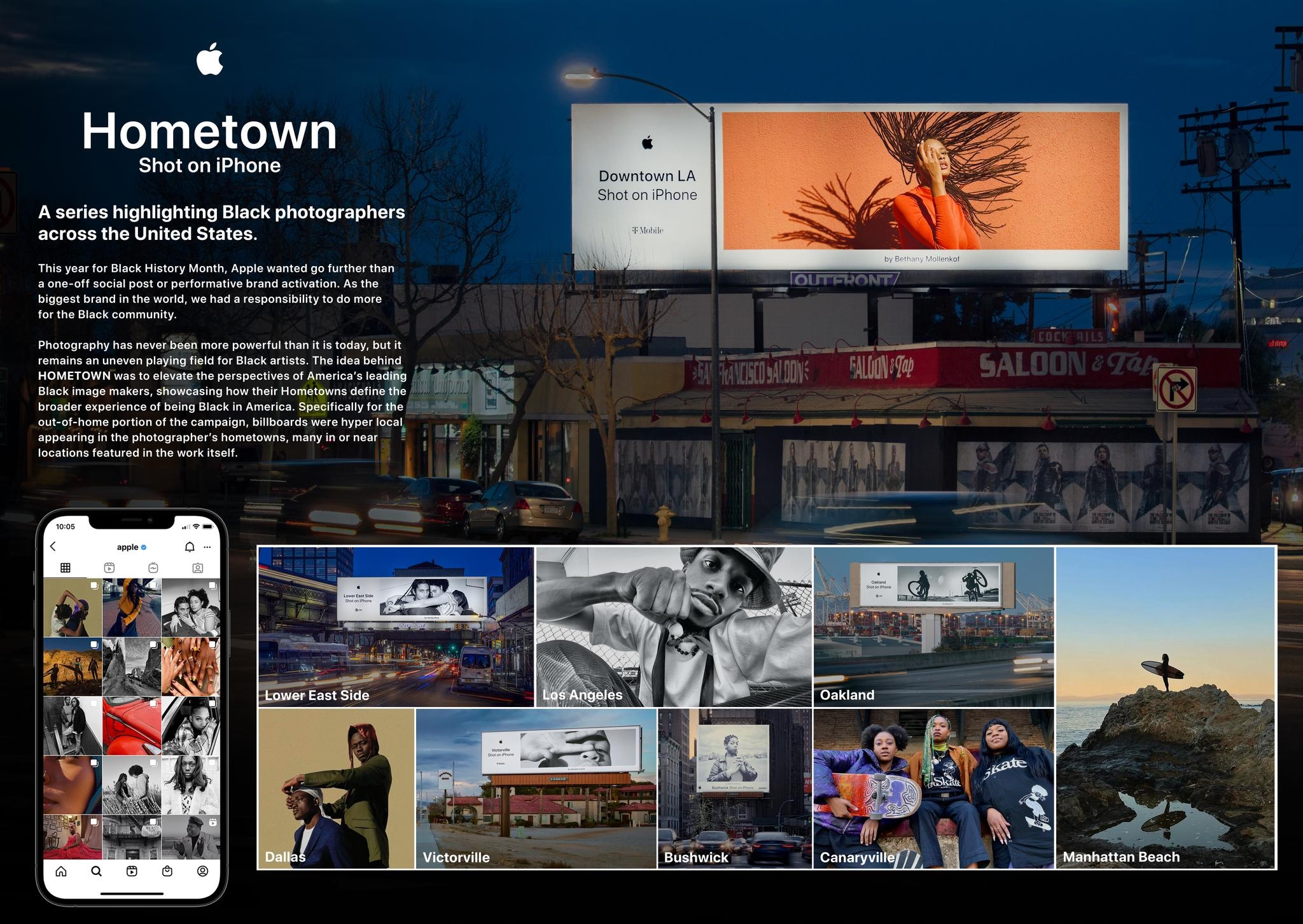
Shot on iPhone is a simple but effective, long-running global brand campaign that showcases videos and photos taken on iPhone devices, usually by everyday users. The campaign began over a decade ago and is predicated on highlighting and emphasising the iPhone’s camera quality. By centring the customer, Apple has managed to sustain and revitalise the campaign by letting the images speak for themselves.
This minimalist approach has expanded to include competitions, social media galleries, and professional creatives. The strategy earned Apple the Grand Prix for Creative Effectiveness at Cannes Lions, one of the advertising industry’s highest honours. By making customers an active part of the campaign, Apple effectively created a sense of belonging, expanding its product appeal into a symbol of creative identity.
3. McDonald’s – “Taste the Future” AR Experience:
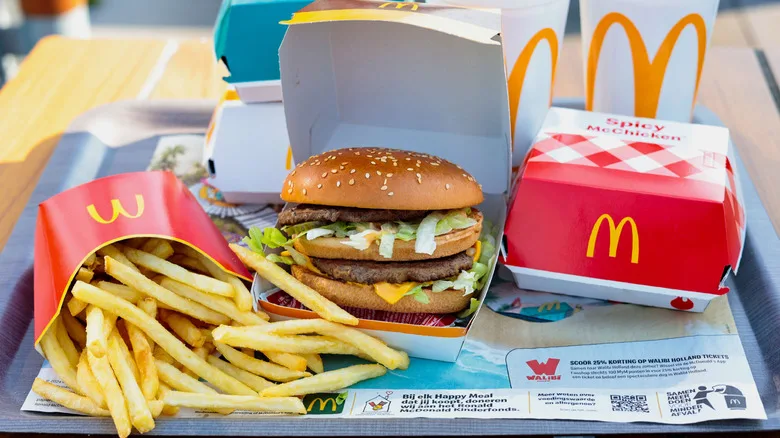
This campaign reframed McDonald’s as something more futuristic, fun, and participatory. It did not require downloading a game or visiting a designated location; instead, it was embedded within packaging and in-restaurant touchpoints. With the product as the entry point, the experience felt additive and interactive rather than disruptive.
The campaign was simple: consumers scanned QR codes or AR markers that transported them into a digital world of gamified interaction. Designed to reach younger, digitally driven audiences, the experience encouraged organic social sharing through striking visuals and easy-to-share media. With this campaign, McDonald’s aligned itself with contemporary digital behaviour, subtly modernising the brand without altering what people already love.
4. Nike × SKIMS – “Bodies at Work”:
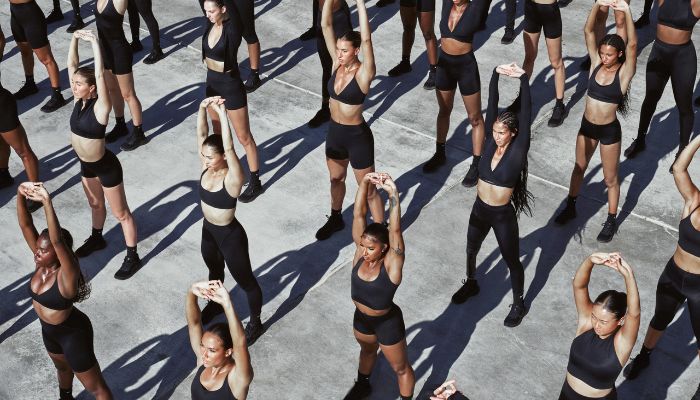
Nike consistently seeks collaborative experiences that further its goals of expansion, relevance, and cultural impact. In September, the brand partnered with Kim Kardashian’s SKIMS for the Bodies at Work campaign. This collaboration positioned NikeSKIMS as a chic new activewear line that blended Nike’s performance engineering with SKIMS’ aesthetic sensibility.
The appeal of the collaboration extended beyond the brand names themselves. Featuring athletes such as tennis legend Serena Williams and Olympic gymnast Jordan Chiles, the campaign made a bold cultural statement about strength, bodies, and women’s active lifestyles. By prioritising both performance and style, NikeSKIMS became a brand athletes did not just want to wear but also wanted to align with.
5. Pinterest × Emma Chamberlain – Sea Salt Toffee Coffee:
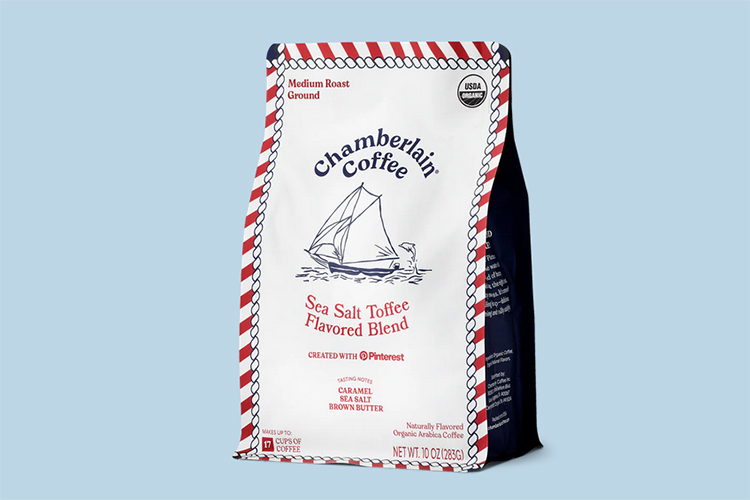
This campaign marked a partnership between Pinterest and Emma Chamberlain’s coffee brand, Chamberlain Coffee. It was Pinterest’s first-ever co-branded product in its 15-year history, and it proved highly successful. The flavour profile and aesthetic were inspired by the “Fisherman Aesthetic,” a visual trend combining rustic textures, coastal elements, and maritime imagery that brought the sea salt toffee concept to life.
The campaign was further amplified by Emma Chamberlain herself, who shaped much of the creative direction directly on Pinterest. By creating mood boards and visual inspiration on the platform, the campaign felt authentic and naturally aligned with Pinterest’s culture of discovery.
6. Dunkin’ × Sabrina Carpenter – Strawberry Daydream Refresher:
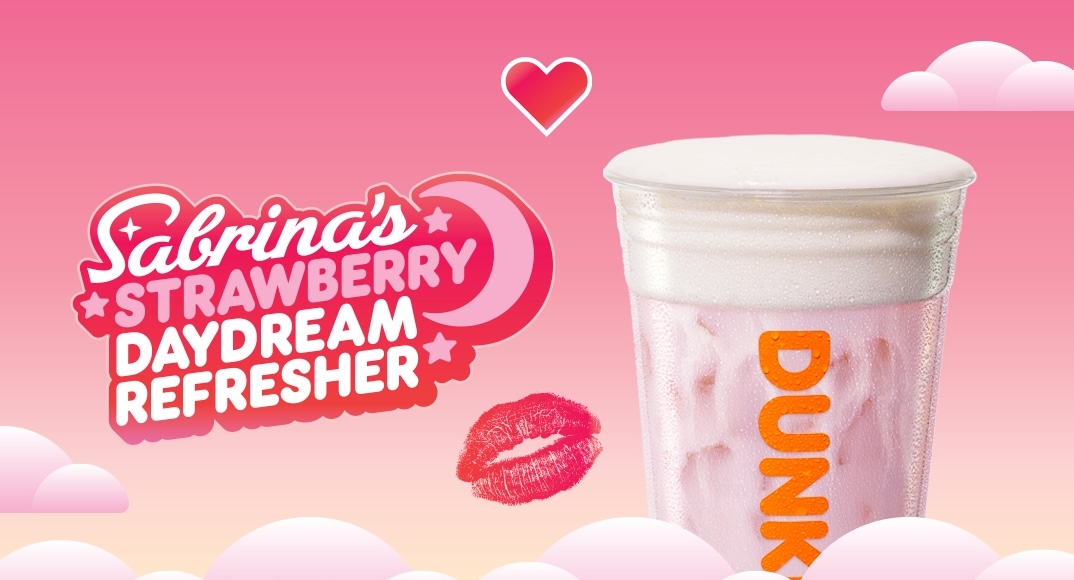
This campaign was one of Dunkin’s standout promotional highlights of 2025. Dunkin’ partnered with singer-actress Sabrina Carpenter to create a limited-time summer beverage called Sabrina’s Strawberry Daydream Refresher.
The accompanying commercial took a different aesthetic approach. Rather than a straightforward, typical advertisement, it was a quirky, retro-style piece starring Carpenter as a “Daydream Matchmaker.” Dunkin’ leveraged Carpenter’s substantial Gen Z and millennial fan base, fuelling ongoing brand buzz and affinity. The experience was made participatory through the “Daydream Hotline,” where fans could call a number to hear a message from Sabrina and receive an exclusive promo code.
By embedding additional elements such as merchandise, reward perks, and interactive experiences, the campaign became a compelling intersection of creative advertising and consumer engagement.
7. Louis Vuitton × Takashi Murakami Revival:

Louis Vuitton revived its illustrious partnership with Japanese artist Takashi Murakami to mark the 20th anniversary of their collaboration. The revival blended early-2000s fashion nostalgia with contemporary, next-generation aesthetics, extending its cultural relevance far beyond a typical seasonal release.
Zendaya’s involvement significantly amplified the campaign’s reach and appeal. Her presence helped position the revival as youthful and aspirational, embodying the brand’s values of boldness and global resonance. Beyond advertising, the campaign extended into immersive pop-ups featuring cafés, cinematic experiences, and collectable items, transforming the collaboration into a full cultural event.
8. Gap – Better in Denim ft. Katseye:
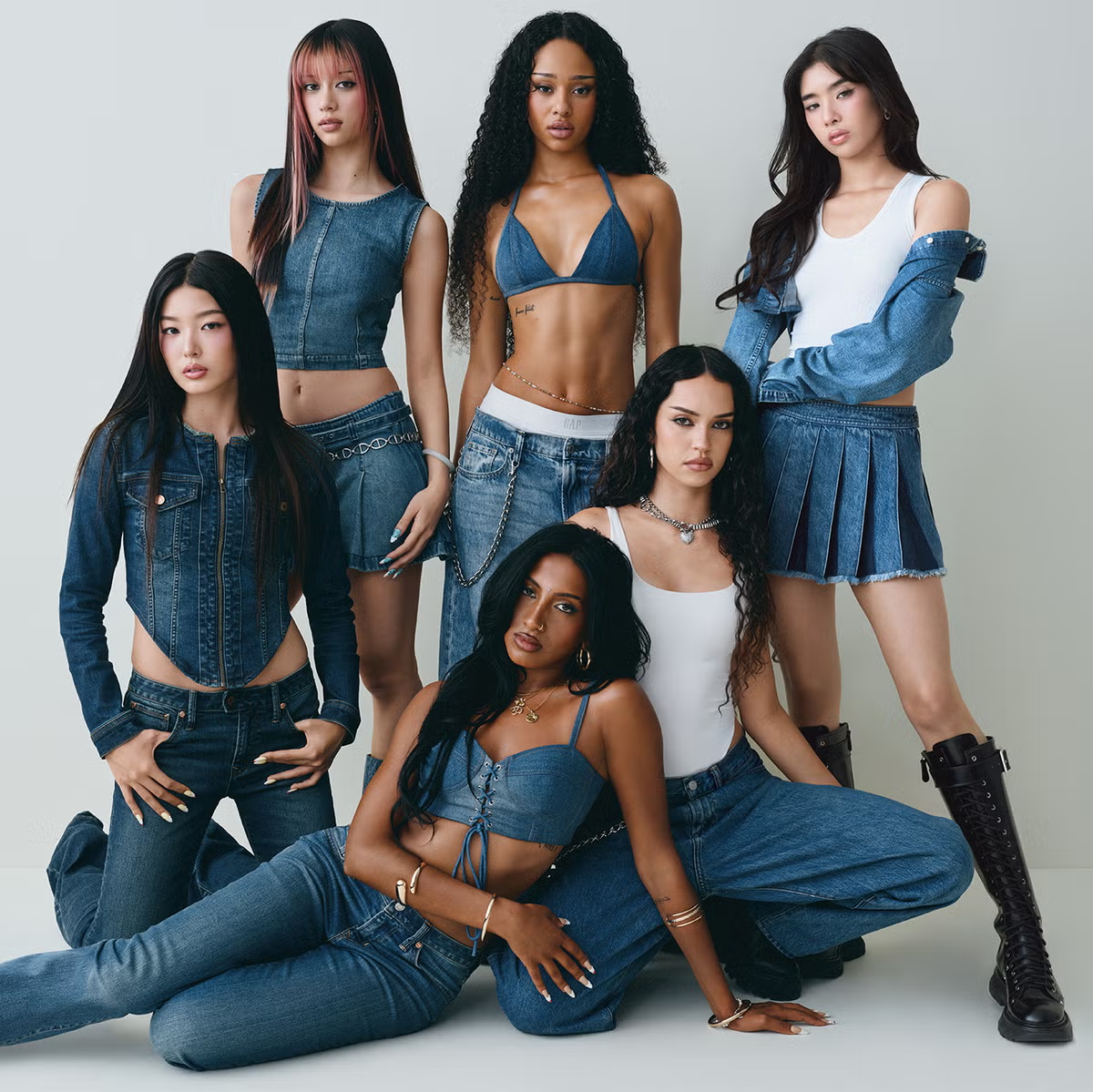
This campaign became one of the most successful fashion campaigns of 2025 by making denim culturally relevant again. Through a thoughtful mix of cultural timing, creative direction, and execution, the campaign reintroduced vintage denim styles, such as low-rise jeans, in a way that felt modern and desirable.
By leveraging Katseye’s growing cultural presence and social following, Gap infused the campaign with energy and credibility. The result was a cultural takeover, with viewership and engagement skyrocketing across multiple platforms.
These campaigns ultimately prove that effective branding is a composite of multiple factors, including strategic partnerships, cultural awareness, market insight, and an understanding of social dynamics. For the brands that succeeded in 2025, it is clear that they did not rely on gimmicks; instead, they built experiences rooted in the genuine interests and behaviours of their audiences.
The strongest campaigns do not attempt to do everything. They do enough—turning products into experiences, audiences into collaborators, and marketing into culture. These campaigns resonated with people, and that resonance is what made them work.
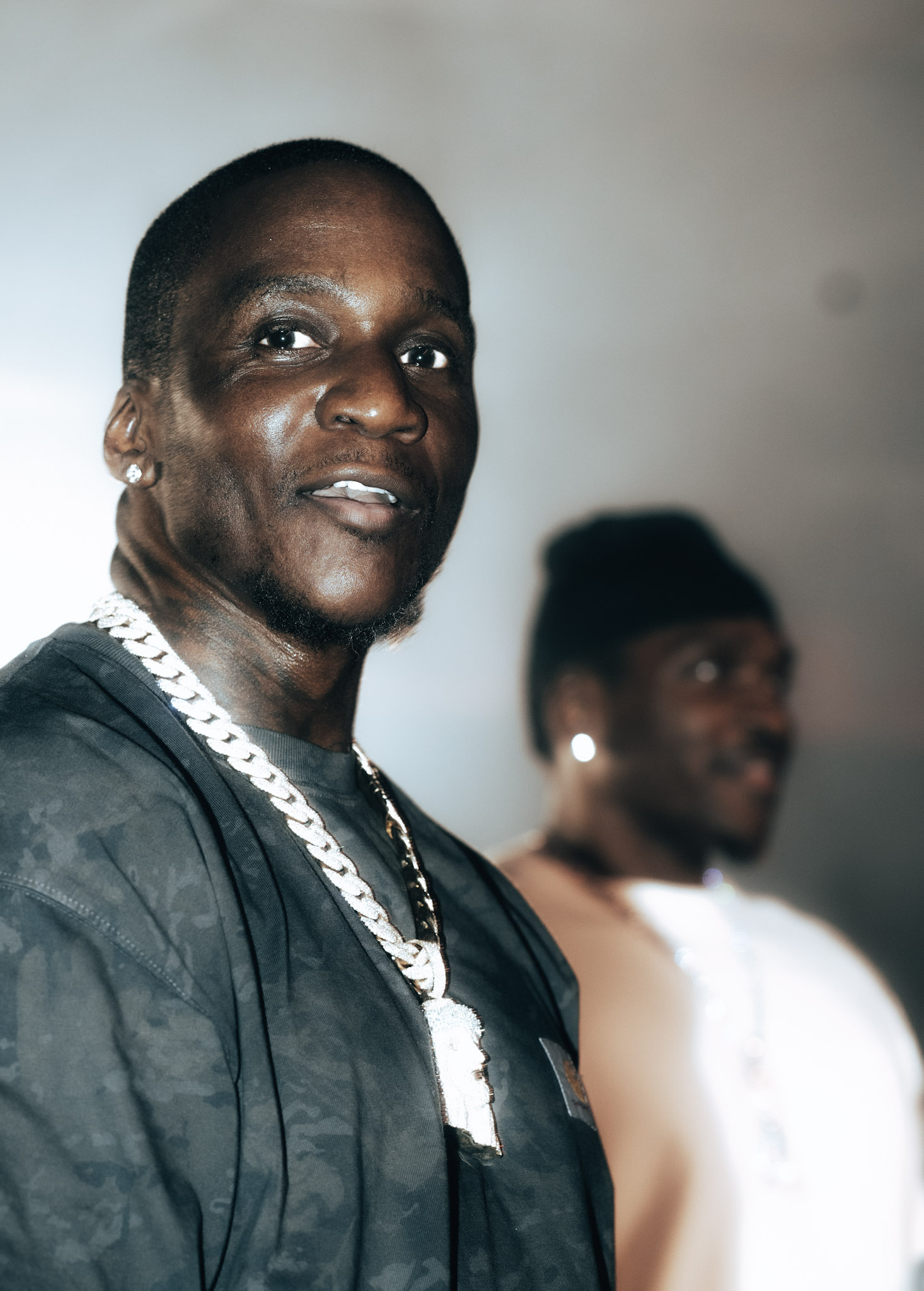
Deeds Magazine had the honor of covering Saint & Citizen two-day takeover during Art Basel Miami, and it was unlike anything I've experienced. Running from high noon until late into the night, Saint & Citizen delivered a masterclass in curation, a "fashion oasis" that felt miles away from the typical Miami hustle. It transported guests to a tropical, jungle-like sanctuary where you didn't just attend, you lingered. From the moment I arrived, the production whispered one word: Intentionality. Every aspect, from the specific curation of art on the walls to the duration of panels, down to the sonic journey of the DJ sets, was meticulously crafted. The team behind this vision understands that true luxury is found in the details.

The visionaries steering this ship are founders Paula Grant and Corey Edness (Co-founder and Chief of A&R/Creative Services). The C-suite driving this cultural vehicle includes Deondre 'Trakmatik' Collins (COO), Jareiq "JQ" Kabara (Chief Brand Officer), Marina Skye (Creative Director), and Joey Harris (Chief of Talent and Cultural Relations). These aren't just organizers, they're multi-hyphenate cultural architects who have spent years in the trenches of creativity. Their chemistry was palpable in the event's execution: seamless, vibrant, and deeply community-driven.
This year's programming was built around the theme "The Living Originals", a celebration of the artists, designers, musicians, and thinkers shaping culture right now. Giving them their flowers while they're here to smell them. Across two days of expansive programming, Saint & Citizen created a multi-sensory ecosystem where art, fashion, film, music, and design converged. In a cultural moment where audiences are starving for lineage and connection, this event responded by building a space where creators lead and communities feel anchored to something deeper.

The programming at the Rubell Museum offered a refreshing pause from the typical Basel circuit, nowhere more so than during the session with Ghanaian visual futurist Prince Gyasi. He led a thought-provoking conversation on his mission to "redraw the image of Africa for the rest of the world." For too long, the story of Africa that reaches the public has not been told by Africans. It's beautiful to witness the intentionality of this generation reclaiming that narrative, not from a place of force, but from empathy and understanding.
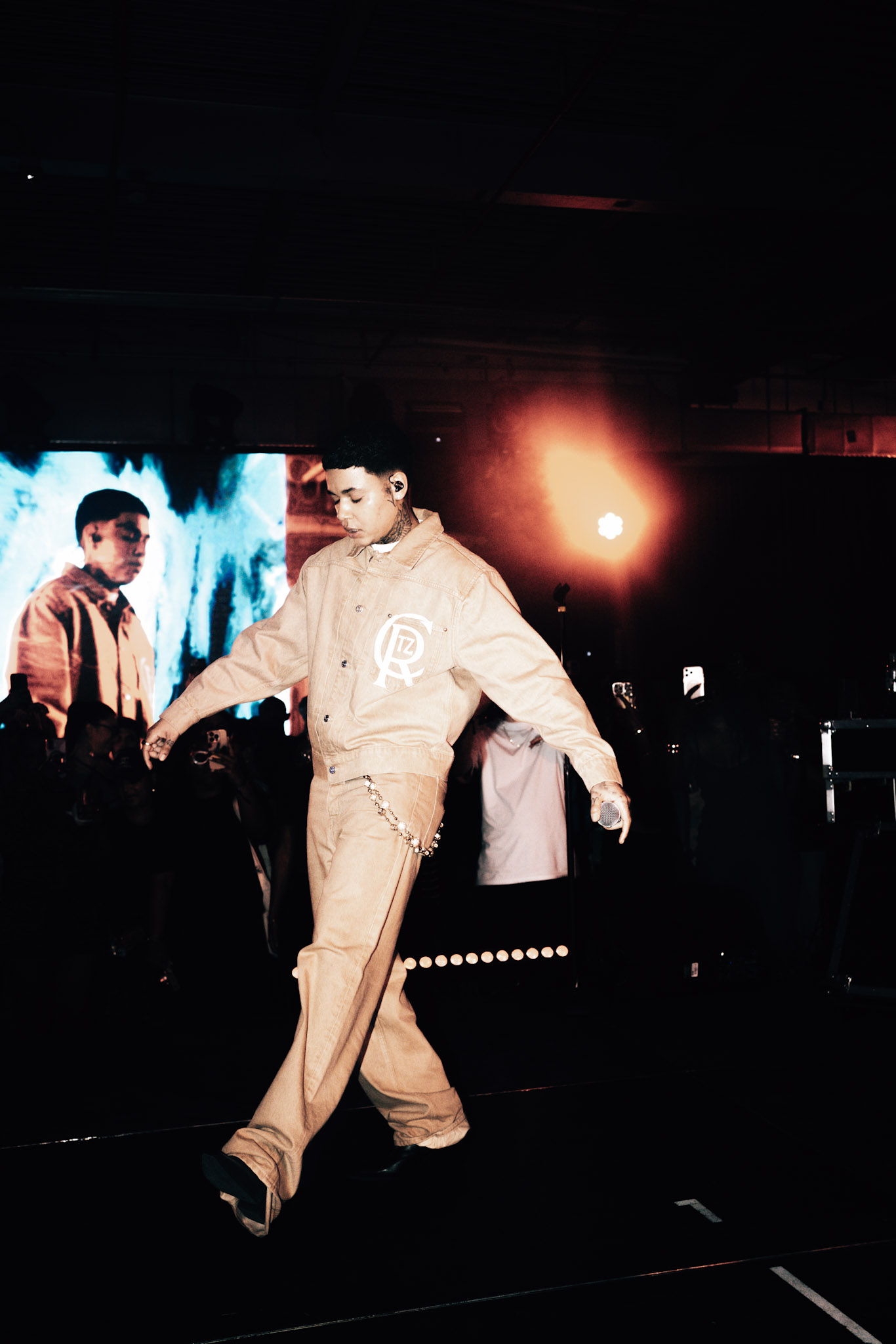
Gyasi's session highlighted that Africa isn't just "one thing." By sharing these stories authentically, the global scale can finally take notice and honor the rich culture and artistic visionaries emerging from the continent. The intellectual energy continued with actor Damson Idris joining choreographer Jamaal Burkmar for an intimate dialogue on storytelling and the role of film as prophecy. This depth was mirrored by celebrated South African artist Nelson Makamo, who grounded the event in legacy with a session on how memory and portraiture shape emotional landscapes.
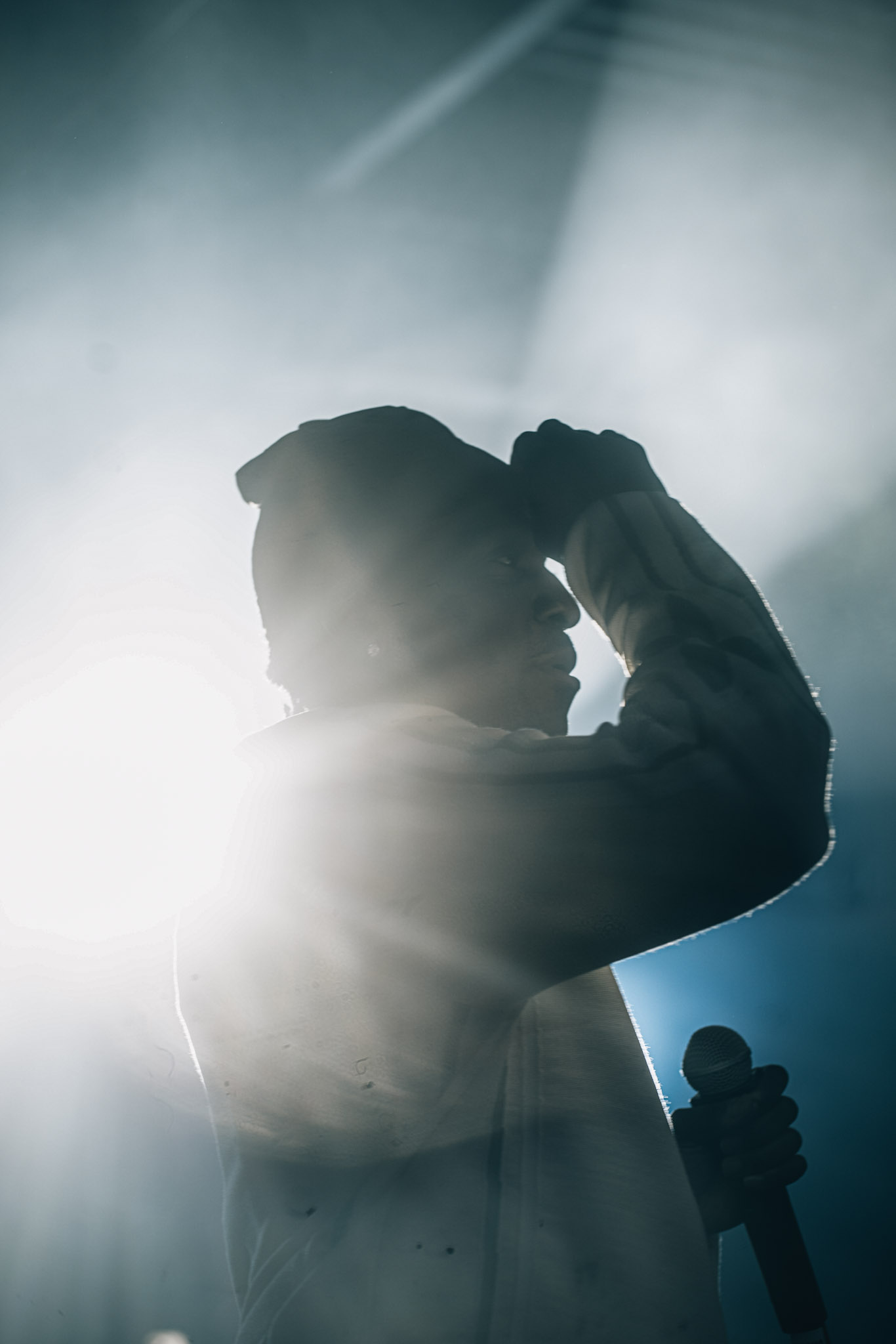
The conversation extended into the business of creativity with industry titans Emma Grede and LaQuan Smith, who dissected the nuances of cultural capital and the future of American luxury.
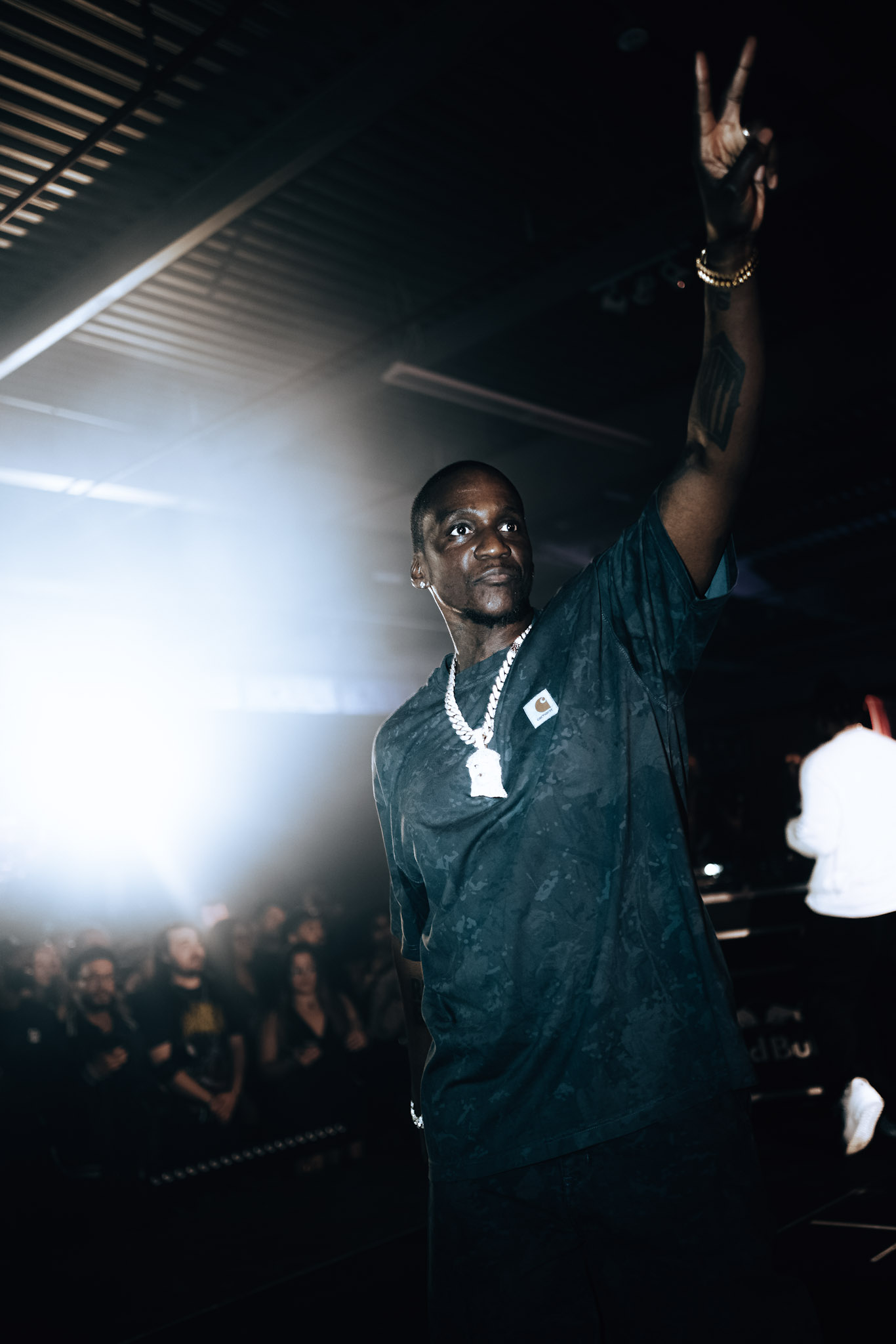
If the panels were the mind of the event, the music was its heartbeat. The reunion of Pusha T and Malice (The Clipse) was something far greater than a performance, it was a cultural reset. Seeing them on stage together was nostalgic, intentional, and undeniably powerful. The Clipse aren't just a rap group, they are fashion, they are visionaries, they are two individuals with something profound to say. Their impact spreads across different genres, races, and ages, and seeing them reunited reminded us that their art brings everyone together.
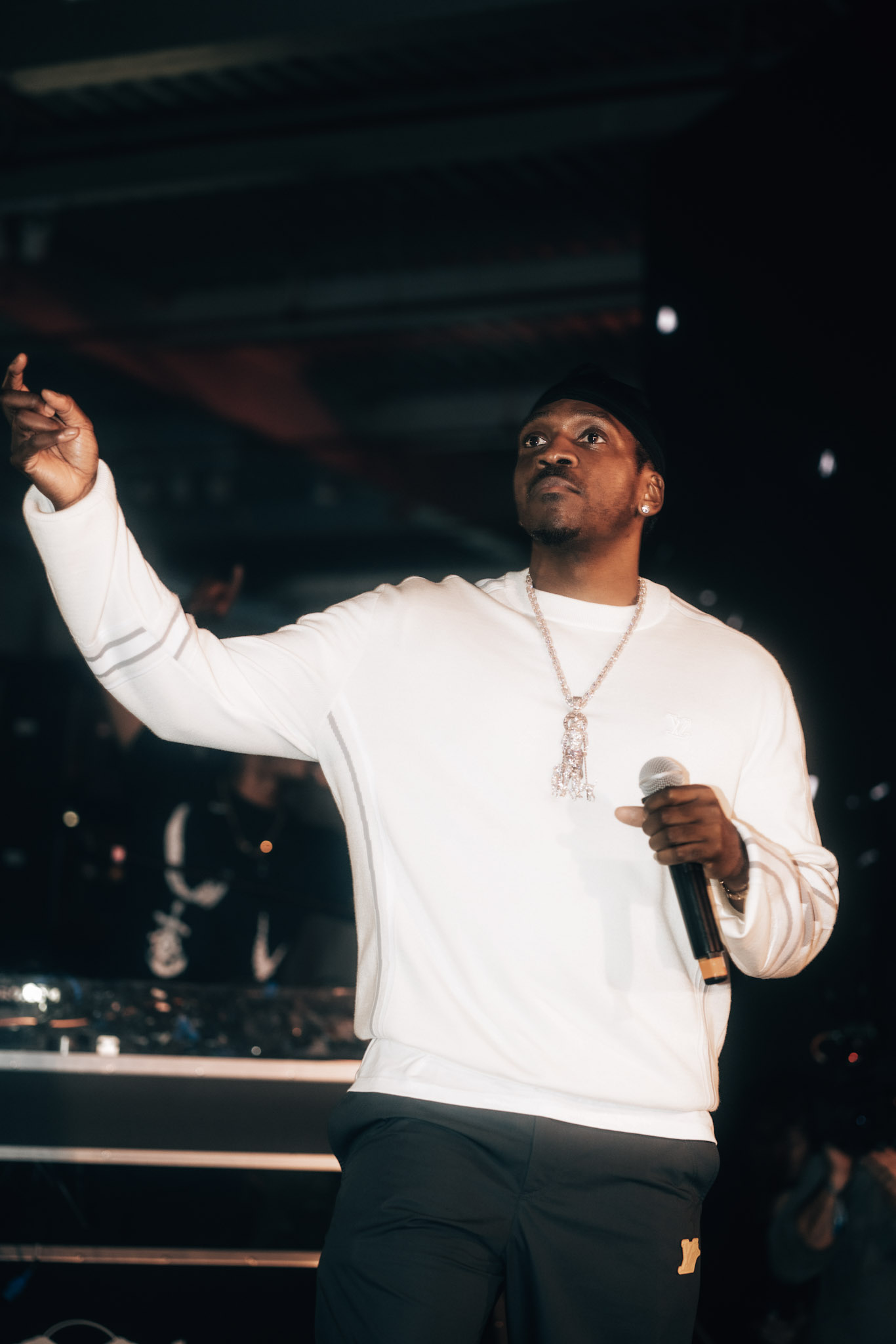
The energy remained high with global producer Kaytranada, who delivered a genre-blending set of house, funk, and hip-hop. Progressive R&B artist KWN took command of the main stage with a soulful performance of "Worst Behaviour," while DJ Spinall closed out the weekend by turning the venue into a massive dance circle. His high-energy, cross-continental set moved from Afrobeat to electronic, keeping the crowd locked in until the house lights finally came up.

Saint & Citizen is more than an event, it's a movement. It's a place that feels like home, where there's something for everyone to feel connected. You walk away feeling a richness, empowered to be more intentional in your own story and in every aspect of your life. It's a reminder that you don't have to wait for Art Basel to find this feeling, every day can feel like Saint & Citizen, wherever you're from.
Photographs by Danaér MENSAH @danaerxy

Picture this: a perfect 85-degree Miami night. Walking up to the venue on South Beach, the entrance was lined with Maseratis, Bugattis, and Bentleys, flanked by a fleet of black trucks. The marble structure set the tone before I even stepped inside. Descending into the plush, dimly lit space, the atmosphere hit immediately. Everyone dressed in their finest, champagne flowing, handcrafted Swiss timepieces glinting under low lights. This wasn't a typical industry gathering, it felt like an exclusive concert or private gala, high-energy and effortlessly luxurious.
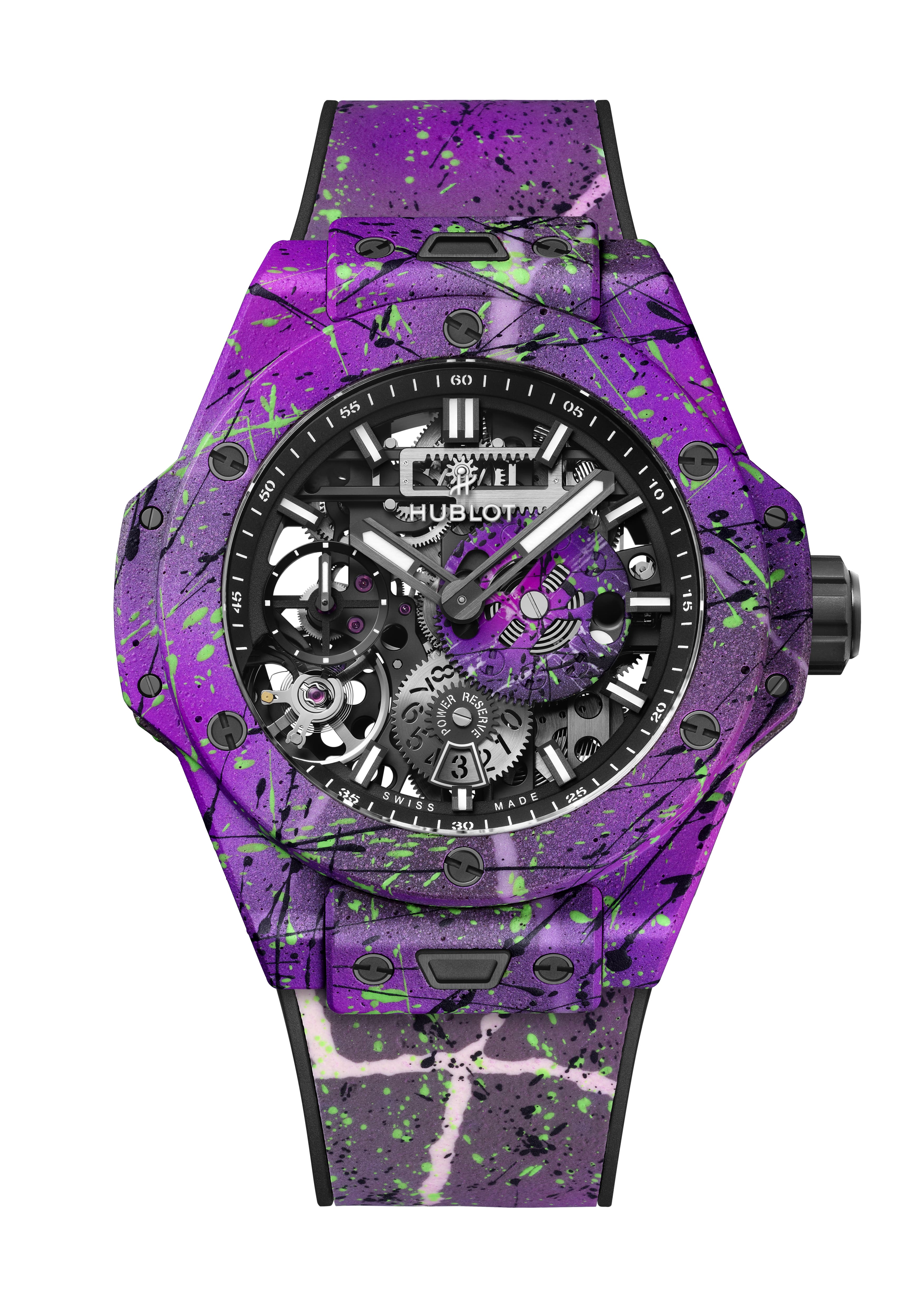
Luxury Swiss watchmaker Hublot took over the legendary Basement at The Miami Beach EDITION to close out Miami Art Week and celebrate the 20th Anniversary of the iconic Big Bang. The evening proved these watches aren't just timepieces, they're a lifestyle, a status symbol, an accessory that elevates any look.

The energy shifted when the night's headliner took the stage. 50 Cent is one of those artists who always delivers, and he didn't disappoint. He performed wearing a bespoke, one-of-one Hublot timepiece created specifically for him, featuring unique colors honoring his character in the upcoming Street Fighter film, a gold chess piece topping the dial (a nod to his Le Chemin du Roi champagne), and "50 Cent" engraved on the caseback. The ultimate flex: art and horology combined.

What stood out most was how Hublot captured a very specific vibe, blending raw, urban edge with sleek, sophisticated polish. The brand isn't afraid to take risks, mastering the ability to fuse two different audiences and create an entirely new lane. The result is watches with beautiful, vibrant colors that never lose their timeless, finely crafted feel. Hublot is one of the few brands that can accomplish this mix so seamlessly.

This philosophy was on full display with the unveiling of the Big Bang Street Art Collection. Available in four striking colorways and powered by the in-house Meca-10 movement, the watches feature cases made of composite concrete with "cracks" filled with UV-reactive luminescence, the perfect physical representation of the brand's DNA: bold and artistic, yet engineered to perfection.
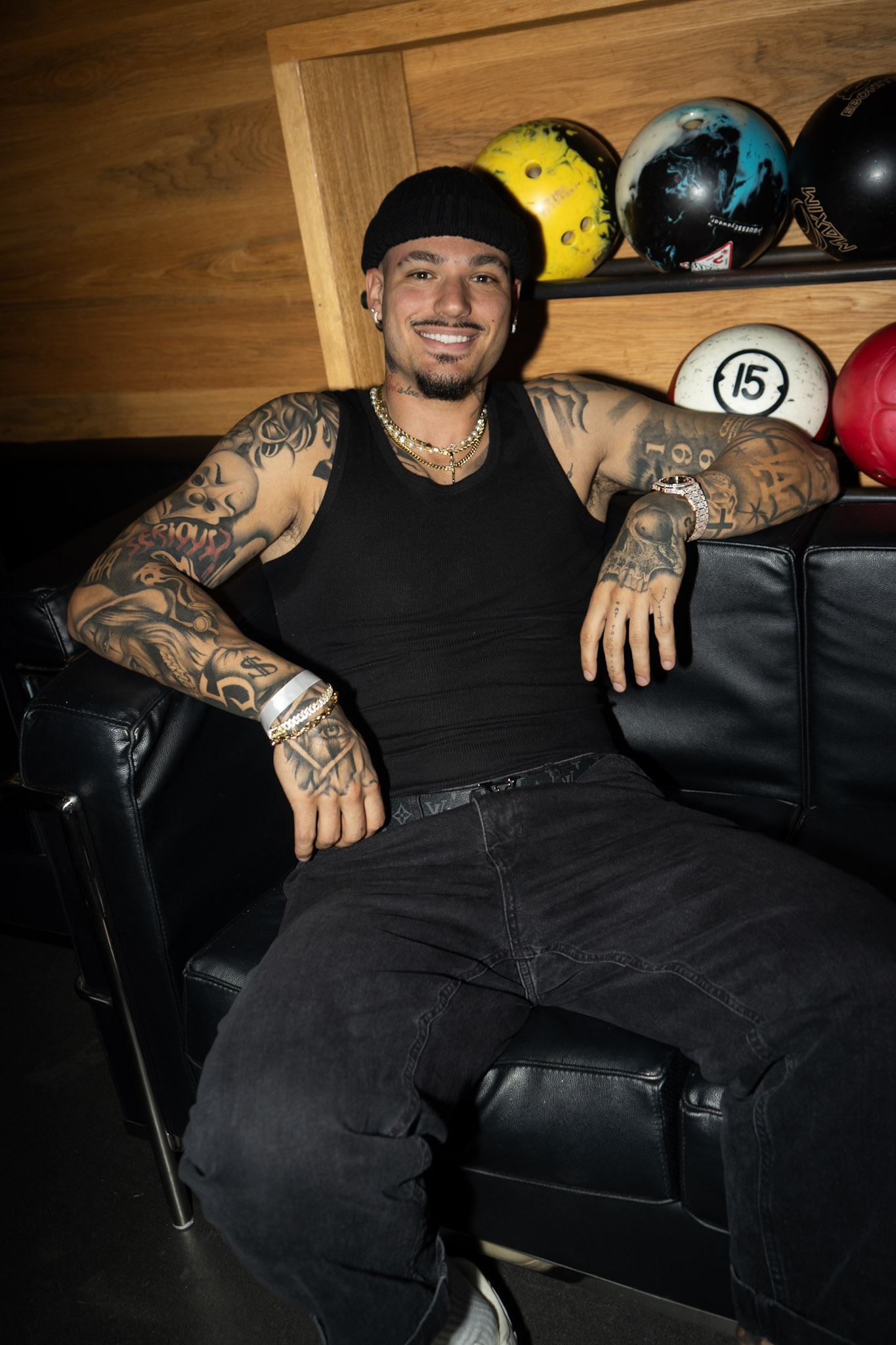
Notable attendees including Khalid, Marco Donatelli, Pepe Garcia, Leon Bridges, Diplo, Swae Lee, Ty Dolla $ign, and Sofi Tukker moved through the crowd, proving Hublot's audience is as diverse as it is influential.
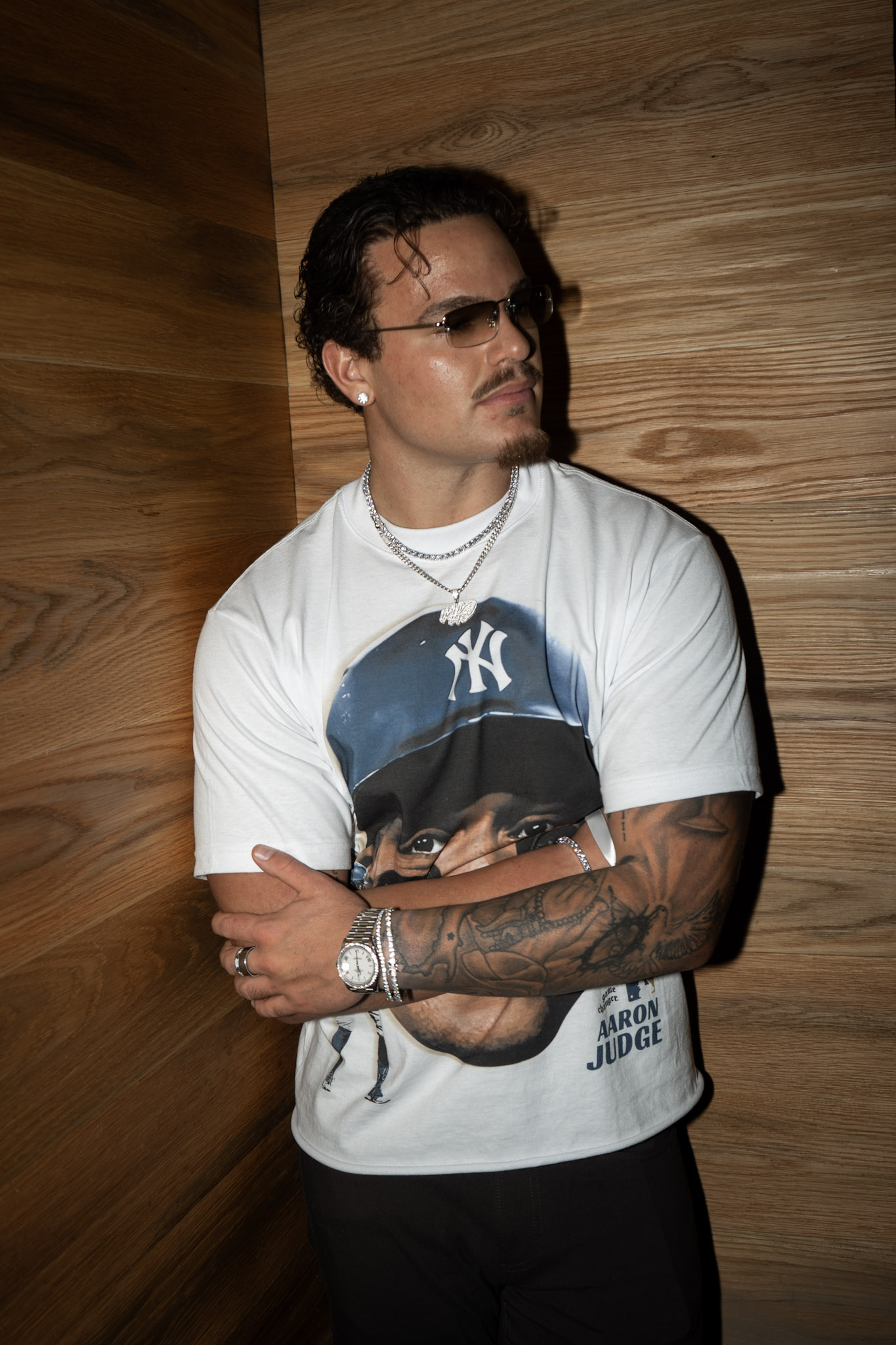
It was a refined escape from the usual hustle of the Wynwood Art Basel circuit. Hublot successfully transported that vibrant audience to the elegance of Miami Beach, merging two distinct worlds into one seamless experience. As the night wound down with MEDUZA on the decks, one thing was clear: Hublot continues to redefine what luxury watchmaking can be—unapologetically bold, impeccably crafted, and always unexpected.

Photographs by Bolanle Adebomi @signedlanle @lanlespov

For nearly two decades, YouTube has been an undeniable force in the global export of African music, collapsing borders, building communities, and amplifying voices through the power of visual storytelling. As African music continues its worldwide ascent, I sat down with Addy Awofisayo, Head of Music for Sub-Saharan Africa at Google and YouTube, to unpack her behind-the-scenes role, the shifting dynamics of Africa's global influence, and what she believes lies ahead for the continent's creative economy.
.jpg)
Awofisayo's work sits at the intersection of culture, technology, and advocacy. Her mandate is simple yet expansive: to champion African music, elevate its creators, and strengthen the continent's creative ecosystem across YouTube and the wider Google network.
"I work across Google's music ecosystem to ensure that artists, songwriters, producers, labels, collection societies, and others see YouTube as their platform of choice, or at least one of the platforms they rely on to share and amplify their creative work," she explains.
When asked what pulled her into the media space, she smiles, almost as though the answer has been waiting her whole life.
"I think for me, it didn't even start with music. I was fascinated by storytelling, and I was fascinated by the creative space. As a kid, I loved Tales by Moonlight (a classic NTA TV show). I never missed it, wherever I was, I always found a way to watch it. But I never really saw it as a career.
"I started in finance at Microsoft for about five years, then pivoted to healthcare consulting, then to public policy. And it was within public policy that I started getting introduced to media, and media as a policy area. I became fascinated by what you can do in the media and entertainment space. That's when I realized, oh, I can channel my storytelling passion and also create a system for creatives that allows them to thrive, that allows their stories to get out there."
Addy is a lifelong music lover, driven by a passion for storytelling, but her journey did not begin at YouTube. She moved across disciplines: finance, healthcare, policy, media, before stepping fully into the creative space. In her words:
"I was always curious about the space, about the creative economy, the intellectual curiosity about how the space came to be—how people monetize, how people own their content, their IP. I just kept learning and growing my knowledge, surrounding myself with people already in the space who were doing well. I was working with the YouTube Music team whenever an opportunity showed up, even though that wasn't my role. My role was non-music. My role was YouTube Creator Ecosystem."
.jpg)
Today, Awofisayo is a defining influence behind some of the biggest African concert livestreams on YouTube, from Burna Boy's historic sold out night at Madison Square Garden to Rema, Wizkid, and Asake's landmark O2 Arena performances. I ask her what drives these projects.
She leans in. "When Burna Boy sold out Madison Square Garden, there was so much noise online, but if you weren't there physically, you couldn't grasp the magnitude. I thought, This moment shouldn't be confined to the walls of MSG. People deserved to experience it."
At the time, livestreaming wasn't common among African artists. "Most artists saw YouTube as a place to upload music videos or behind-the-scenes clips. Meanwhile, artists in the US and Latin America were livestreaming major concerts. I kept wondering, why isn't this happening for Africa?"
She pitched the idea to Burna Boy's team. "It was all 'maybes.' Maybe it would create excitement. Maybe it would build FOMO for his next show. But they believed in the idea, and it changed everything. Not only did you have the people at Madison Square Garden experiencing it, you had millions of people globally experiencing it and talking about it. There was just a greater appreciation for the art, for the culture, and for the space."
.jpg)
We further discussed where African music stands globally today, and what comes next for the continent.
"There are two examples I use: K-Pop and Latin music. Seeing how far those genres have come, but also understanding the data—what helped those genres get even bigger is that people from their home markets have easy access to the music. The hindrance we have in Africa is that we still don't have a lot of people online. A lot of people are not yet on digital platforms. So even though streaming is a thing now, we are barely scratching the surface when it comes to Africa.
"When that barrier breaks and more people from the home countries of these artists can stream their music, that's when we're going to see a big boom, more appreciation, more monetization, more tours, and more opportunities for artists.
When asked about the toughest part of her work, Awofisayo doesn't hesitate. "Infrastructure," she says plainly. "Our market just isn't ripe enough. We're not there yet in terms of infrastructure, regulation, and the policies needed to support the creative economy or IP."
"That makes it really challenging for creatives on the continent who are trying to grow and build an audience. For instance, with internet barriers, you can't reach as many people in your home country. So to monetize digitally, you have to start thinking about your export audience because that's where your money will come from."
An example she gives is live events: "Even down to attending shows, it's hard for people to pay a high ticket price because you're only tapping into a fraction of the market. So when people say, 'Why not make it free or discounted?' Well, if you do that, how are you supposed to put on a great show? How do you pay the right cameraman, videographer, editor? It becomes a whole industry and infrastructural issue."
So how does YouTube help dismantle the idea of Africa as a monolith?
"YouTube gives everyone a voice," she says. "Someone in Uganda can tell their own story and show the world what being Ugandan looks like. Ultimately, the responsibility lies with us, Africans, to tell our stories the way we want them to be seen. We must be the ones pushing our narrative."
As the year winds down, I ask Addy what she hopes African artists focus on moving forward.
First, she emphasizes sonic identity. "There is so much diversity in African music, our beats, our tones, our instruments. Artists should lean into that. That's what makes us distinct. When you hear Latin music or K-Pop, you immediately recognize it. African music has that same richness. Really showing that off is important because that's what makes us unique. We shouldn't be afraid to tap into what makes us distinct."
Then she turns to collaboration. "I love what collaborations have done for African music. They allow artists to tap into new fan bases and introduce global audiences to our sound. Look at Rema and Selena Gomez, or Ayra Starr and Rauw Alejandro, these collaborations expand fan bases, open new markets, and introduce more people to African music who otherwise may not have encountered it.
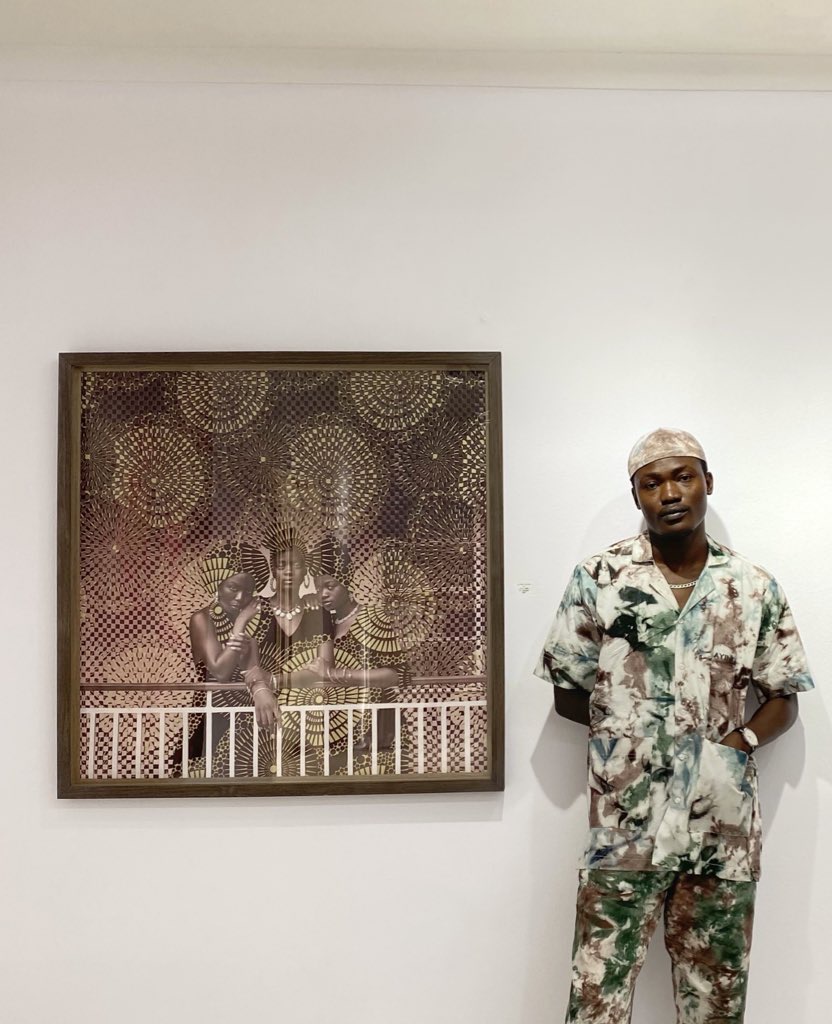
Ayobami Ogungbe is reclaiming narrative through thread, image, and texture. The Lagos based multi-disciplinary artist weaves together photography, traditional basket-weaving techniques, and collage to create visual stories that honor his coastal hometown of Badagry.
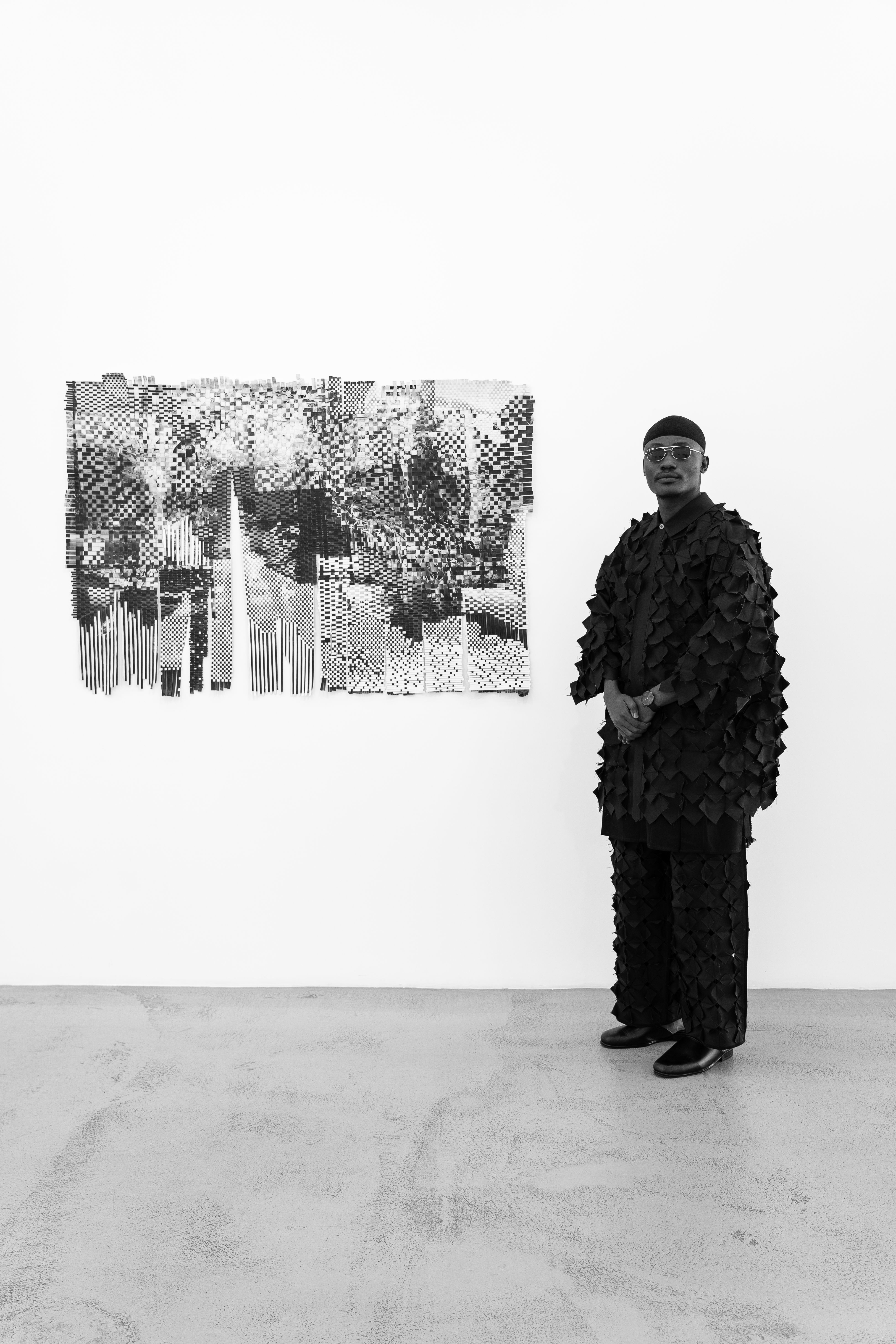
Ogungbe's practice is an act of remembrance and resistance. By incorporating indigenous weaving methods passed down through generations of Badagry's coastal communities, he creates a contemporary visual language that bridges past and present. His work asks us to reconsider what we know about West African history and whose stories have been centered, in the telling, or silenced. Through his art, Ogungbe is ensuring that the contributions of indigenous peoples are no longer footnotes but central chapters in our understanding of Nigerian and West African identity.

Tell us about yourself and your artistic practice.
My name is Ayobami Ogungbe, and I'm a multi-disciplinary artist from Lagos, Nigeria. My work combines photography, weaving, and collage techniques to tell stories about my community.
I picked up photography as a Mass Communication student at The University of Benin, studying photojournalism. Weaving, I picked up from the culture of my hometown, Badagry, being a coastal town, the people wove baskets and mats. I inculcated that into my practice to present a new contemporary visual language.

What themes or subjects are central to your work?
My practice is mostly centered around my hometown, Badagry, its culture and traditions, its very rich history, and contributions to what is the Nigerian socio-cultural landscape today and West Africa at large.

How does your practice connect to action and change?
My practice connects to action and change because it mobilizes a kind of re-documentation and re-engagement with history, with the aim of re-educating and re-platforming my hometown's contributions to the present. It centers the stories of indigenous peoples who have for long been sidelined for the most part, and it calls us to reexamine indigenous knowledge systems and how they can birth fresh contemporary ideas.
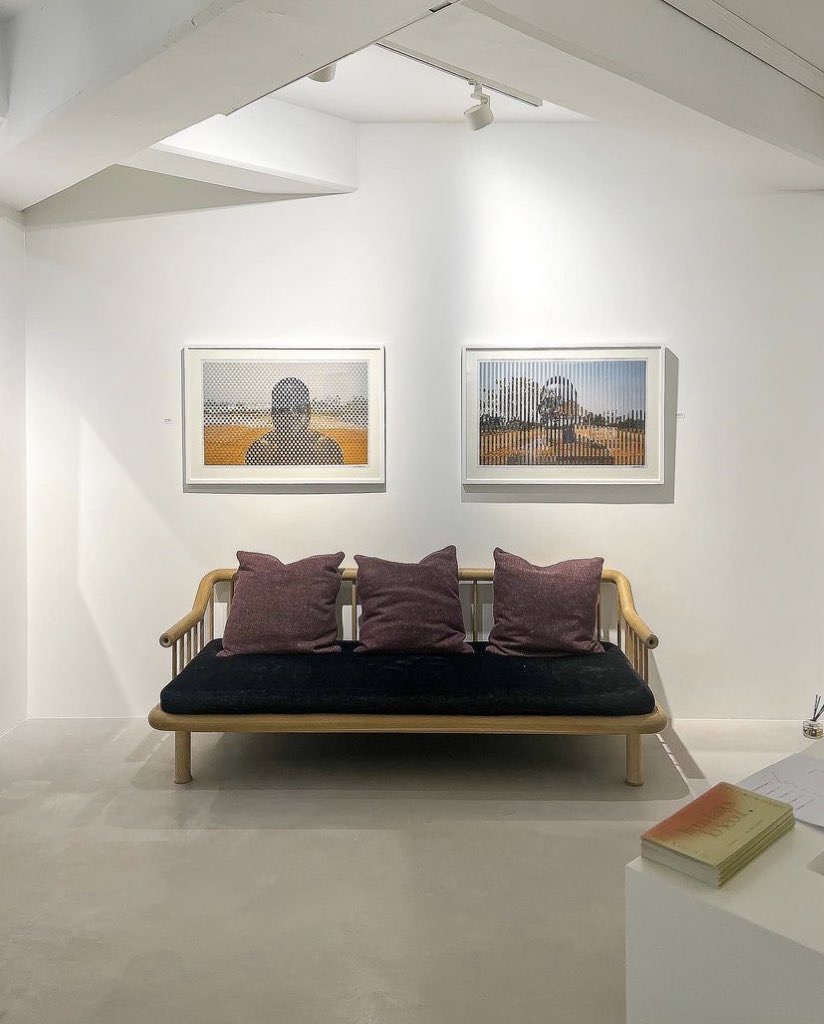
What do you hope viewers take away from your work?
My priority is to use my practice to inspire change. Art is a very powerful tool, and it can mobilize, educate, and give a strong sense of belonging and pride. These are things I believe we all deserve as viewers and makers of art. So personally, I would love my practice to at the very least touch lives positively, no matter how small.
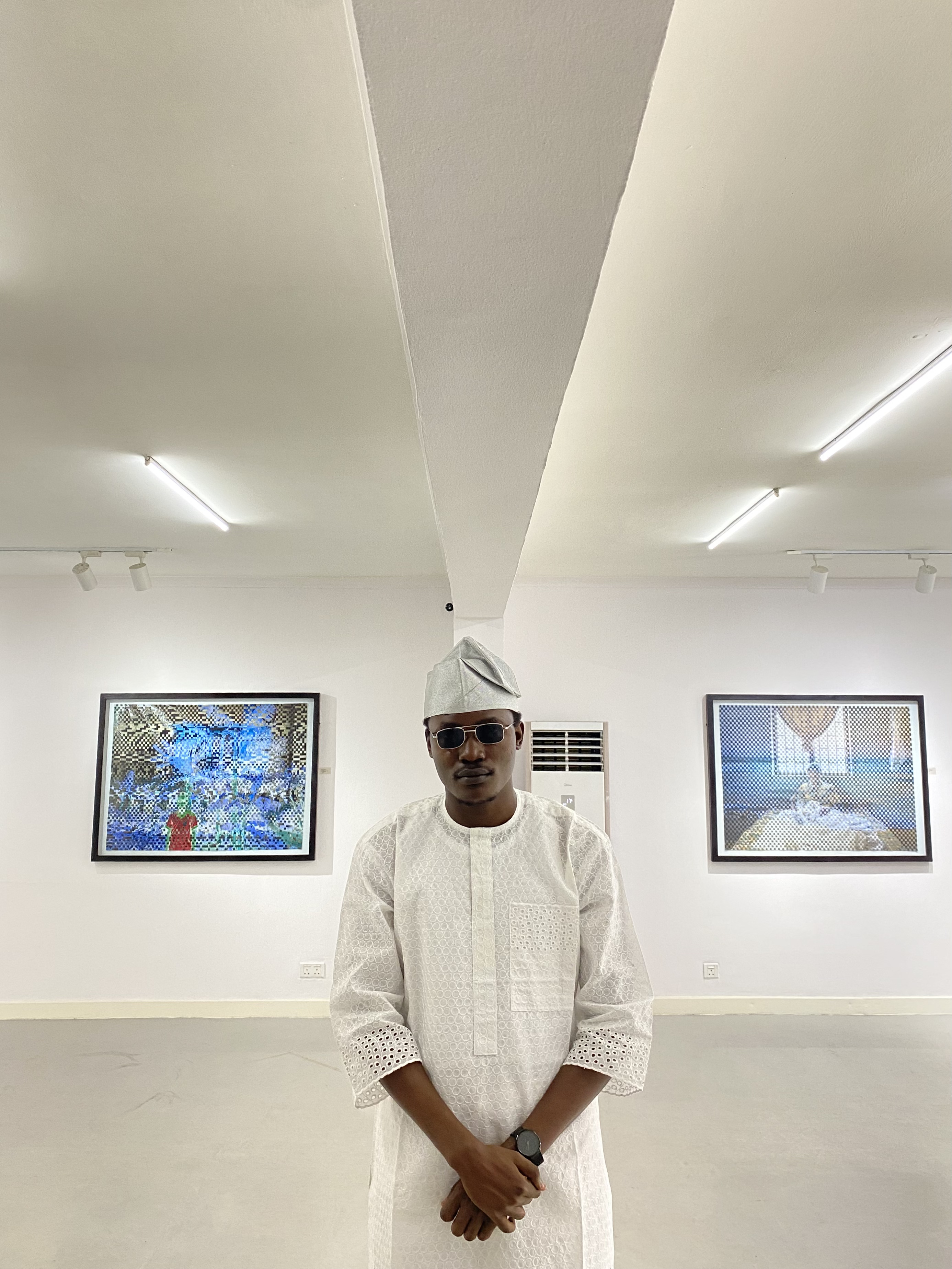
What's one thing you want people to know about your journey as an artist?
That I will continue to do my best.
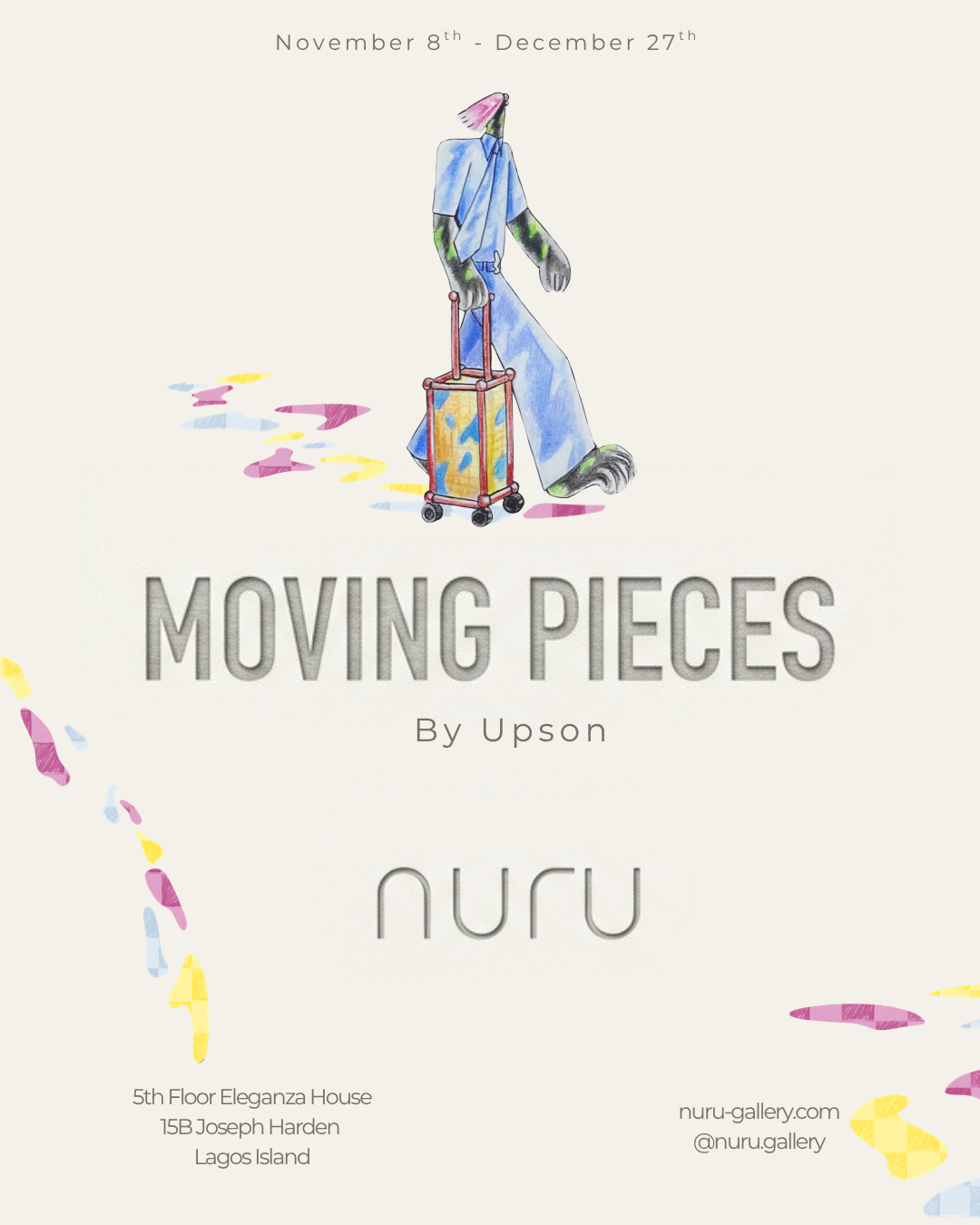
Lagos' Newest Art Space Debuts with a Psychological Journey Through Mixed Media
.JPEG)
A new chapter in Lagos' contemporary art landscape begins with MOVING PIECES, the debut exhibition at Nuru Gallery. Opening November 8th through December 27th, the show marks both the gallery's launch and a deeper creative evolution for artist Upson, whose work has become synonymous with the city's pop-culture zeitgeist.
.JPEG)
Founded by 25-year-old creative director Khadijah Okoya, Nuru Gallery positions itself as "a space for layered African expression", a mission statement that feels less more like a manifesto when you step into the seafoam-green floored space on the fifth floor of Eleganza House. The gallery's concrete ceiling and textured walls create what Okoya describes as an atmosphere of "floating between sky and structure," a deliberately childlike yet sophisticated environment that serves as the perfect canvas for Upson's world-building.
.jpeg)
The exhibition unfolds across five mixed media works: Pinterest, District of Financials, Wheels Are in Motion, Kaos at the Opera, and Graduation, each functioning as a chapter in what feels like a three-dimensional artist's monologue. This is Upson inviting us into his creative process, from the chaotic spark of initial inspiration to the final, deliberate brushstroke.

Pinterest, the exhibition's opening salvo, nods to the contemporary artist's digital reference library. Its brawling, energetic characters capture that pre-form moment when ideas still exist in beautiful chaos. District of Financials introduces something more narrative: an imagined Lagos ruled by two omniscient women, populated by characters driven by ambition and self-determination. The journey culminates in Graduation: both symbolic ascension and celebration of the artist's next creative threshold.
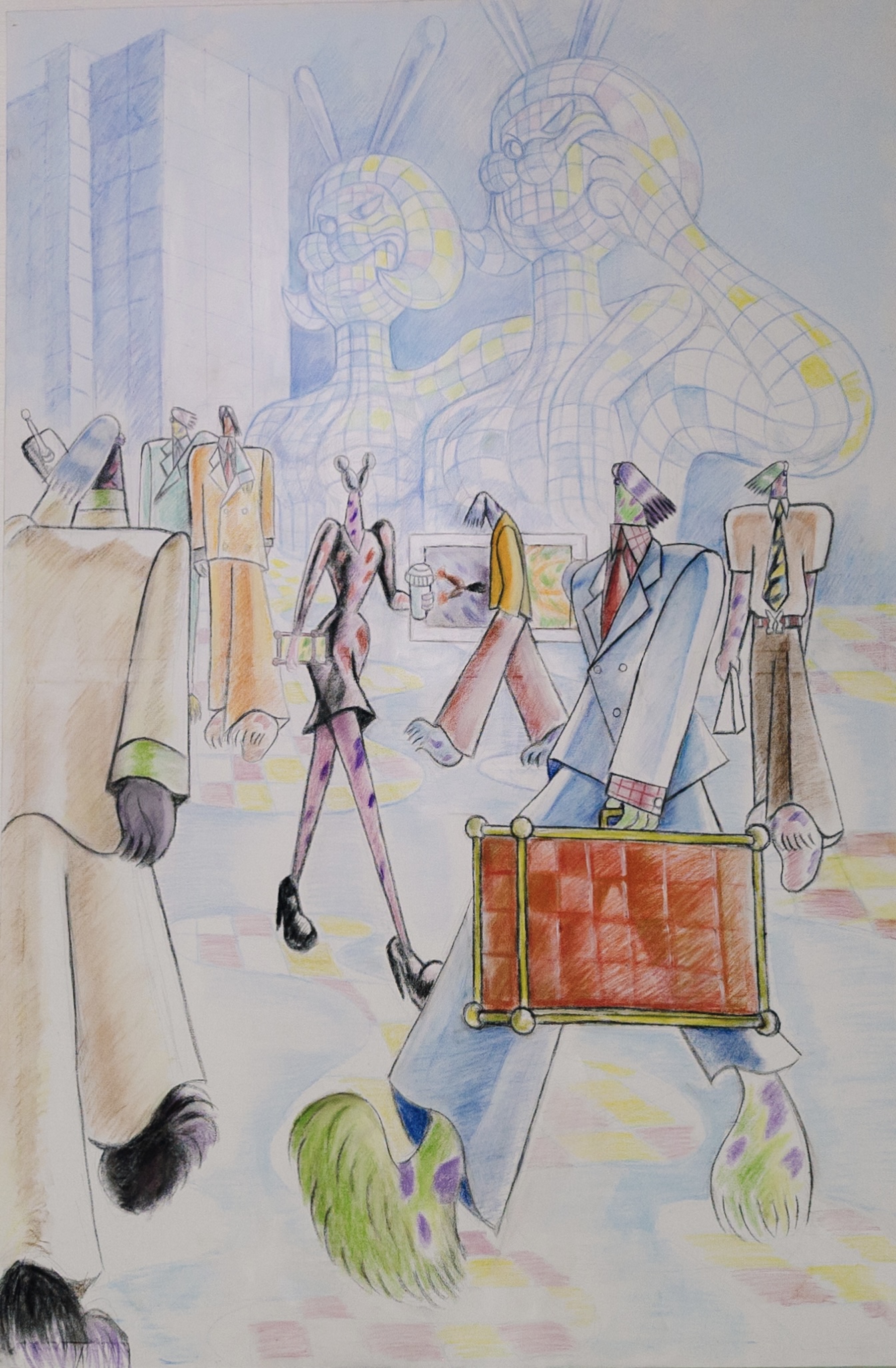
Upson's influences are worn openly: Yayoi Kusama's obsessive patterning, the tender monstrosity of Maurice Sendak's Where the Wild Things Are, the heartfelt creatures of Pixar's Monsters Inc. But what emerges through his evolving sketches, pastel chalks, and layered textures is entirely his own, a psychological landscape where wild things roam, monsters possess hearts, and fear collides gracefully with wonder.
.jpeg)
For those who've followed Lagos' creative scene, Upson needs little introduction. His long-running collaboration with musician Cruel Santino has produced some of the city's most distinctive visual work, including the first Flowers of the 1st Orchard manga and the complete visual identity for Subaru Boys: FINAL HEAVEN. Having explored digital art, illustration, graffiti, and painting, his practice remains driven by experimentation and hunger for new visual territories.
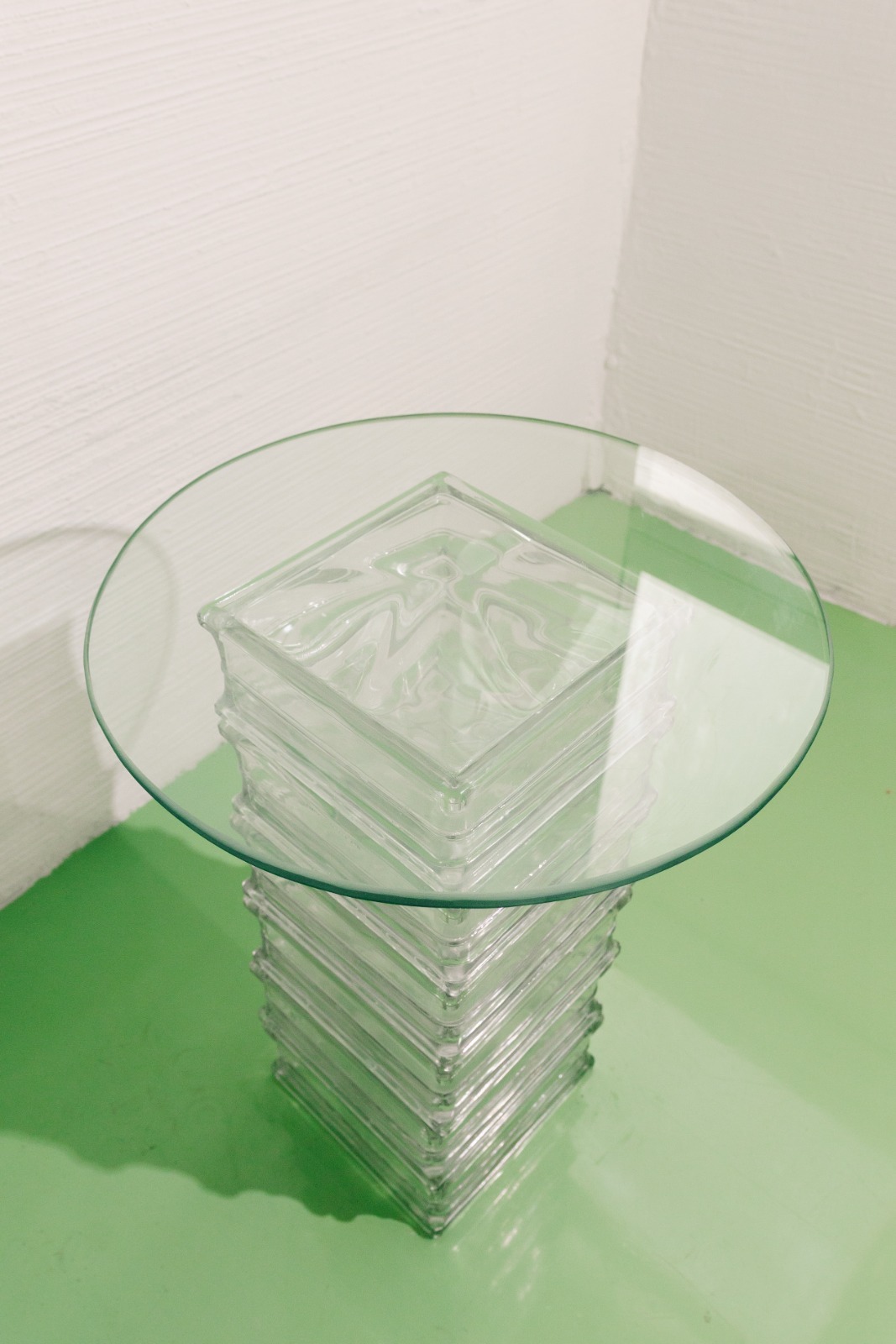
This exhibition, however, marks a turn inward, toward what the gallery describes as "deeper psychological terrain." Upson emerges as a defining voice within Lagos' current generation of artists exploring mixed media, anime aesthetics, gaming culture, and immersive world-building with equal parts whimsy and depth.
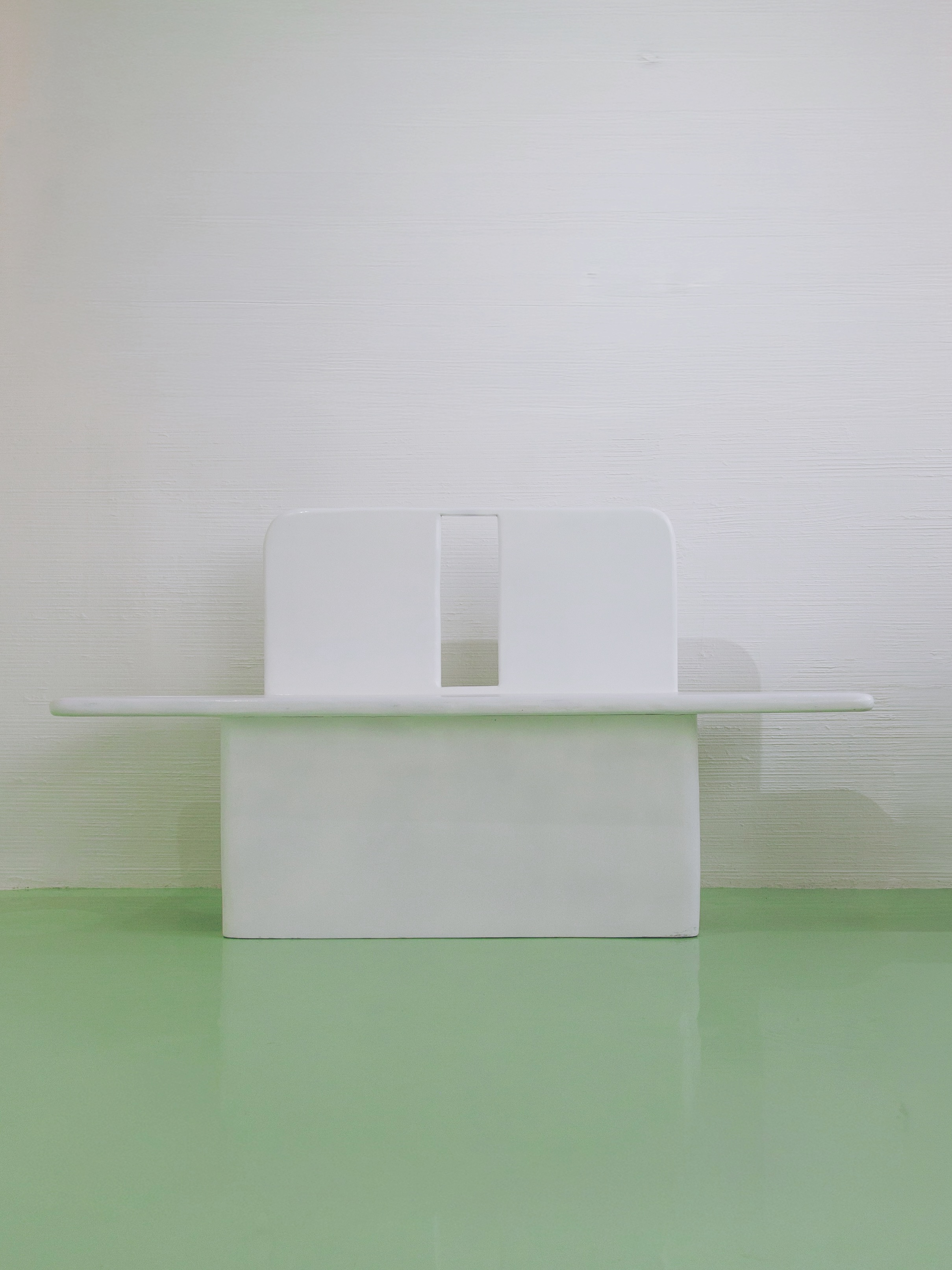
The exhibition also introduces Temitope El Shabbazz's V1 Bench, a sculptural seating piece that grounds the show with monolithic presence. Built from meticulously sanded layered wood components, the bench embodies what El Shabbazz calls his "desire for play"—an object that manages to be both timeless and tender, elegant and permanent.
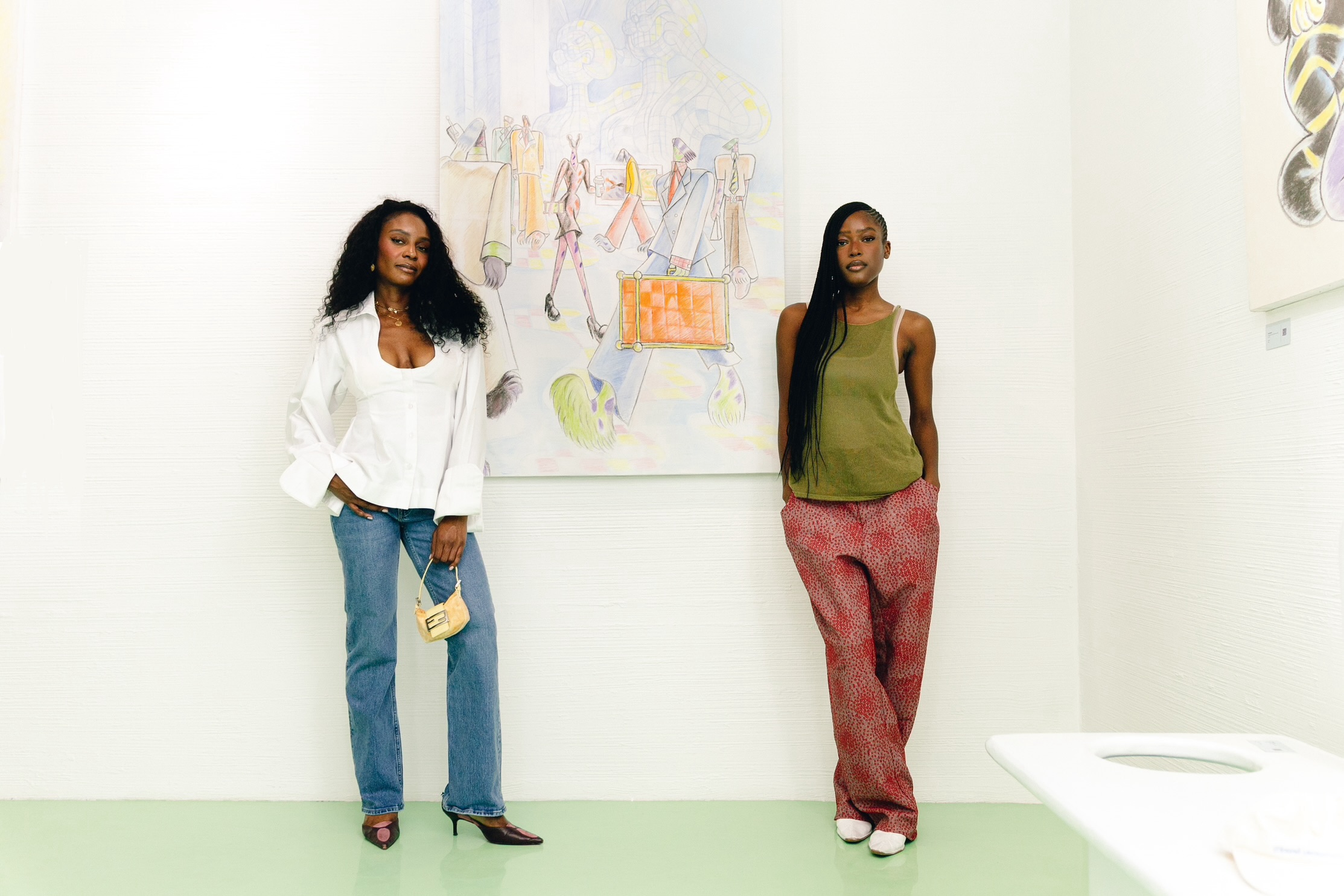
This collaboration between Nuru's in-house design arm Nuruhai, Upson, and Temitope creates what Okoya describes as "the kind of easy, instinctive rapport found in two childhood friends finishing each other's sentences—seamless and gently mischievous." It signals the gallery's broader ambition: to bridge creative direction, curation, and storytelling in ways that feel globally attuned yet distinctly local.
Created for younger, culturally attentive audiences ready to collect and preserve memory, MOVING PIECES positions Nuru Gallery as an intimate site for slow-looking, emotional resonance, and playful depth. In a city whose art scene continues to evolve at breakneck speed, this feels like a deliberate invitation to pause, look closer, and linger in the spaces between thought and form.
MOVING PIECES by Upson
November 8 – December 27, 2025
Nuru Gallery
5th Floor, Eleganza House
15B Joseph Harden, Lagos Island
Website: nuru-gallery.com
Instagram: @nuru.gallery
For press inquiries and private viewings, contact Nuru Gallery directly through their website or social media.

On March 13th 2025, I participated in a panel discussion where I told attendees that years ago, I set myself on a challenge to read a book from every African country–but I lied. The truth is I only ever bought a fraction of those books and read about three of them. For long, I forgot about the challenge altogether. It was only when I recognized how little I knew about the world beyond my immediate surroundings, that I hoped to revive this pursuit–and this time, share my reading list with others who might feel the same curiosity.
After the panel, a South African author who was also a fellow panelist and on a book tour at the time, asked me which book from his region I had read. For some reason, I could not utter one of my favourite childhood books, ‘Tsotsi’ by Athol Fugard. It hadn’t occurred to me that this book, although the story is set in South Africa, I had never considered it a South African book, per se. Somehow without knowing, I had created those invisible rules in my head about what classifies a book from a specific region.
In that regard, I began thinking of the rules that I wanted to apply to this reading list. Firstly, each author must be the originators of the country they represent. This means no settlers, no diasporic members, no bypassers, etc… Why? Without making this too political; representation matters. By mere coincidence, if a native reader were to stumble upon this article hoping to find an author from their own country, regardless of whether the storyline directly concerns that country, then this should be the place they can.
Secondly, all selected works must be novels. This means no memoirs, anthologies, short stories, or poetry collections. Why such a narrow scope? In my experience, I found that literary niches aren’t for everyone, and to really capture the collective voice of a country, I believe novels tend to speak from the soul of the community in a way a few forms do.
Finally, you will quickly notice that there are exceptions to the rule–or better said, some rules are meant to be broken. As I researched for this project, I realized not all nations have access to or have been granted English translations of their literary works. If this was the case, I must say I’d have far more interesting recommendations to offer. However, I am also aware that not everyone speaks French and if the goal is to reach a global readership, English editions are preferred.
Regardless of whether you agree or disagree with the selections, my hope is that you learn something new–because I certainly did. When we speak of resistance and especially in modern days, nothing rings as true as the AES coalition. I was genuinely surprised to learn how difficult it was to find a fiction story on the great Mali Empire, for example. Novels during the late Sankara’s era, or even an English edition reciting at heart the everyday life in Niger.
Now I know that there are hidden gems out there that for some reasons unknown to me, they did not appear during my research. And so, rather than presenting this article as the ultimate guide, or the one and only list you will find of a book from your country of origin, take this matter as an effort of representation, accessibility and a small step in the right direction; highlighting literature of the motherland and its authors whose voices emerge from it.
.jpg)
1. African Psycho - Alain Mabanckou (Congo)
If I were to create an imaginary hierarchy of African literature that I believe to be the best books ever written, then ‘African Psycho’ by Alain Mabanckou would be on top of the pyramid. There’s nothing more unsettling yet thought-provoking than to be forced into the mind of a psychopath of the Republic of the Congo (Not to mistake with Republic Democratic of the Congo) and coming to the realization towards the final chapter that this individual could possibly live among us. Despite Alain’s sentiment towards my country of origin, the Republic Democratic of the Congo, which reflects throughout his passages, it would be almost disingenuous of me not to recognize this book as what it is–a masterpiece in narrative.
.jpeg)
2. Things Fall Apart - Chinua Achebe (Nigeria)
It wouldn’t be an African literary list without Nigeria A.K.A the giants of Africa were not involved. Some may argue author Wole Soyinka or Chimamanda Ngozi Adichie to be a better representation; however, before you judge my final decision, just hear me out. If you were to select one book, one story, regardless of any series or era, then it would be without a doubt ‘Things Fall Apart’ by the late Chinua Achebe. This debut novel follows a Nigerian family in the pre-colonial era and shows how in its compelling narratives, they ultimately fall into the hands of their opponents. Besides the obvious groundbreaking storytelling, the passage of time is masterfully handled, keeping readers engaged until the very last page.
.jpg)
3. This Mournable Body - Tsitsi Dangarembga (Zimbabwe)
A read that truly shocked me during my earlier attempt at this challenge was ‘This Mournable Body’ by Tsitsi Dangarembga. I must admit that I knew nothing about Zimbabwe’s history prior to reading this book–and like the best stories do, this opened my eyes to an entire new world I had been unfamiliar with. This novel gives a glimpse into the life of an old Zimbabwean woman at the bottom of her luck. Her struggle to make ends meet and secure affordable housing is deeply woven with the country’s history and the social and economic conditions it faced after independence. Perhaps what is the most intriguing aspect of this book is the unexpected turn of events throughout this story, which seemingly transforms the main character who was for long placed at the sidelines of her own story, to the middle point of a totally different narrative.
.jpg)
4. The Scent of the Father - Valentin-Yves Mudimbe (DRC Congo)
Known to many as one of Africa’s greatest minds and Congolese author of ‘The Invention of Africa’, the late Valentin-Yves Mudimbe is a force to reckon with and that I’m afraid I’ve only become aware of his work far too late. Often overlooked in the literary world, his influence is still felt towards the newest generation of Congolese writers wanting to experience just a thread of his excellence. In this case, the exception to the rule applies. The reason I chose this book consisting of essays that I have yet to obtain and read is because of this quote from the description; “For Africa to escape the West, says Mudimbe, it must become aware of what remains Western in the very concepts and forms of thought that allow it to think against the West...” I believe ‘The Scent of the Father’ is only the beginning of a journey through Mudimbe’s large catalogue.
.jpg)
5. The River Between - Ngugi Wa Thiong'o (Kenya)
When it comes to an African pioneer who influenced my work the most without my knowledge, ‘The River Between’ by the late Ngugi Wa Thiong’o still echoes through me. From the very moment I wrote a poem sharing his title, to the time I had the opportunity to purchase this exact book at my own launch, Ngugi’s writing follows me wherever I go and I am still inspired by his words today. I couldn’t possibly do justice with an explanation as I am still unfolding what is a very hard read I must say; however, worth every drop of a tear. It explores the role of christianity forced upon by the early settlers and how this Kenyan tribe is torn to build a new form of existence not only in this period, but also in its future to come. I am of the opinion that if you can get through this work of art, then you can pursue any other works of Ngugi's.
.jpg)
6. The Beautyful Ones Are Not Yet Born - Ayi Kwei Armah (Ghana)
A father of African literature that I’ve surprisingly only heard of this year although I knew of this book years ago is ‘The Beautyful Ones Are Not Yet Born’ by Ayi Kwei Armah. Not to take away from any of his shine; however, for those who are intrigued, I read Ghanaian author Yaa Gyasi’s ‘Homegoing’ as part of the challenge. There’s something gravitating from the title of his debut novel alone, and when you find out that the story is about a man resisting temptations in a quest to preserve his integrity, a whole picture is revealed before you. Unfortunately, I believe Ghana is often overshadowed by their African cousins, namely Nigeria. Which is a fuss because this novel has awfully good reviews.
.jpg)
7. Neighbours - Lilia Momple (Mozambique)
This hits close to home for me because if it wasn’t for a friend that I made along the way who comes from Mozambique, it wouldn’t have sparked a curiosity in this country who I thought was French-speaking; however, it happens to be a Portuguese past colony. Where ‘Neighbours’ by Lilia Mompele fall in line is that it’s a murder story set in Mozambique where a rumour of foreign invasion causes torments to this group of households in the capital city of Maputo. From my understanding as a future reader of this book is that the story urges you to face the country’s complex past and its current state.
.jpg)
8. Allah is Not Obliged - Ahmadou Kourouma (Ivory Coast)
Perhaps a region that doesn’t make much noise in the literary world; however, is vastly known throughout the continent for its booming music is none other than Ivory Coast. I am glad to share ‘Allah is Not Obliged’ by the late Ahmadou Kourouma as I plan on reading this in the feasible future. The story is about a young Ivorian boy who, after his mother’s passing, is seeking a new life in a neighbouring country; however, has fallen victim to the war and is forcibly drafted as a child soldier. He must succumb to unimaginable adversary and it is with the famous words; “ALLAH IS NOT OBLIGED TO BE FAIR ABOUT ALL THE THINGS HE DOES HERE ON EARTH,” that he may find meaning in the suffering.

9. The Heart of Redness - Zakes Mda (South Africa)
As I mentioned before, it would be hard to beat my childhood favourite ‘Tsotsi’ with any South African book I may read moving forward; however, representation matters and certainly in a region with a rich history of destabilization by its settlers. When I came across ‘The Heart of Redness’ by Zakes Mda, it spoke to me. For now, I can not wait to make this read come true. A South African who went on exile during apartheid returns to his home country to find it anew. Followed by an eccentric love story, false promises of a tribe and a deep look at a terrain recoupling after blood was shed for centuries, I think it is a good look into the psyche and spirit of the new South Africa movement.
.jpg)
10. Woman at Point Zero - Nawal El Saadawi (Egypt)
I don’t think there’s a single writer that I’ve watched their short clips on the internet without ever reading their actual work more than this feminist anchor. So when it was time to rekindle this forgotten challenge, I set my eyes on ‘Woman at Point Zero’ by the late Nawal El Saadawi. Only the future will tell when I get the chance to read it. As an Egyptian woman born into a poor family in the countryside, manages to break the shackles of her childhood, she ventures into a life full of lessons. Every relationship she comes across becomes a harsh reminder that, and I quote; “the only free people are those who want nothing, fear nothing and hope for nothing.” The story ends with her finding freedom in her own form of tragic yet realistic ending.
.jpg)
11. Ghost Season - Fatin Abbas (Sudan)
I still remember when I first saw the cover of this debut novel in its German edition. Firstly, it must be said that I have a long deep love story with the nation of Sudan for I believe they are masters in poetry. Although that may be the case, I wasn’t as much familiar with their novels, which I believe would really allow outsiders to penetrate into the depth of its country. So this is a must in due time. ‘Ghost Season’ by Faith Abbas captures the nuances of artificial borders, whether it’d be physical, ethnically or religiously. As tension rises in a town between Sudan and South Sudan, a single dead body brings a group of different individuals there together. The story follows their journey at the midst of a civil conflict.
.jpg)
12. Call and Response - Gothataone Moeng (Botswana)
.jpg)
13. The Purple Violet of Ashaantu - Neshani Andreas (Namibia)
.jpg)
14. The Happy Marriage - Tahar Ben Jelloun (Morocco)
.jpg)
15. The Shadow King - Maaza Mengiste (Ethiopia)
Not to sound like a broken record; however, ‘The Shadow King’ by Maaza Mengiste was one of these few instances where I purchased the book for the challenge and never got around to reading it. As an apology to our beloved readers, I will share a short description instead. It is the beginning of WW2 where the current Ethiopian emperor struggles to defeat the Italians. Only when an orphan who works as his maid offers a plan to maintain their spirit that its people begin to see a glimmer of hope. Lyrically intertwined with Ethiopia's history and women empowerment, it serves as an homage to the forgotten female heroes of history.
.jpg)
16. Silence is My Mother Tongue - Sulaiman Addonia (Eritrea)
.jpg)
17. The Fortune Men - Nadifa Mohamed (Somali)
.jpg)
18. In the United States of Africa - Abdourahman A. Waberi (Djibouti)
.jpg)
19. Weeding the Flowerbeds - Sarah Mkhonza (Eswatini)
.jpg)
20. Baho! - Roland Rugero (Burundi)
.jpg)
21. A Girl Called Eel - Ali Zamir (The Comoros)
.jpg)
22. Three Egg Dilemma - Morabo Morojele (Lesotho)
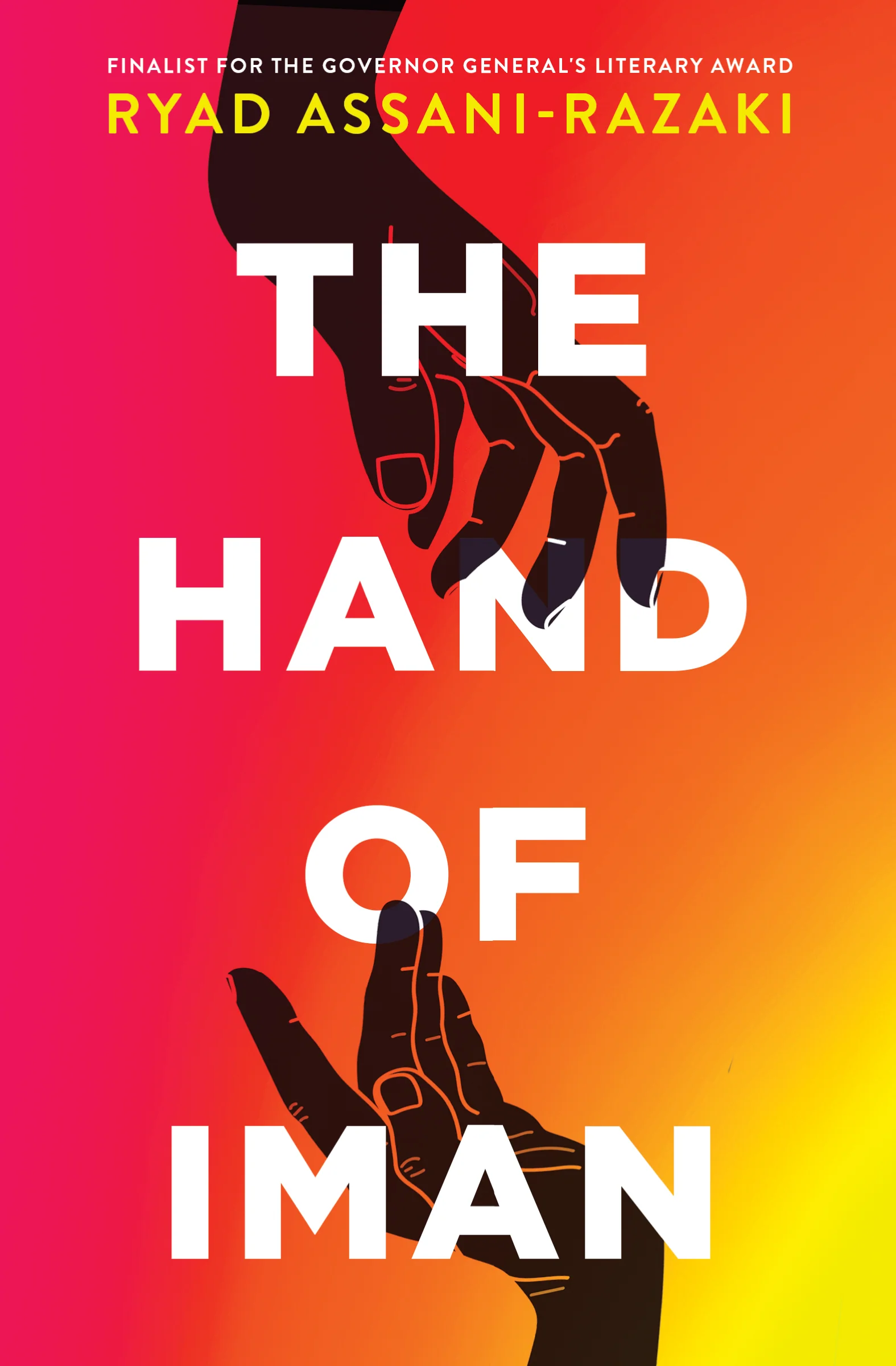
23. The Hand of Iman - Ryad Assani-Razaki (Benin)
.jpg)
24. Michel the Giant An African in Greenland - Tété-Michel Kpomassie (Togo)
.jpg)
25. So Long a Letter - Mariama Bâ (Senegal)
.jpeg)
26. Swing Time - Zadie Smith (Gambia)
From reading the book description alone, you wouldn’t think that it is a story that I’m particularly fond of; however, I have seen‘Swing Time’ by Zadie Smith everywhere that at this point, it’s a must read. It is a dangerous act to read a book solely because of its visual familiarity and it rarely occurs to me to be the case. Two dancers who happen to be friends with one who’s talented and the other is idealistic. What could possibly go wrong? I hope our Gambian readers will give me an E for effort.
.jpg)
27. The Fury and Cries of Women - Angèle Rawiri (Gabon)
.jpg)
28. The Ultimate Tragedy - Abdulai Silá (Guinea-Bissau)
.jpg)
29. Bound to Violence - Yambo Ouologuem (Mali)
.jpg)
30. Told by Starlight in Chad - Joseph Brahim Seid (Chad)
.jpg)
31. The Lazarus Effect - Hawa Jande Golakai (Liberia)
.jpg)
32. Radiance of Tomorrow - Ishmael Beah (Sierra Leone)
.jpg)
33. The Ardent Swarm - Yamen Manai (Tunisia)
.jpg)
34. Harraga - Boualem Sansal (Algeria)
.jpg)
35. My Friends - Hisham Matar (Libya)
.jpg)
36. And Crocodiles are Hungry at Night - Jack Mapanje (Malawi)
.jpg)
37. Edo's Souls - Stella Gaitano (South Sudan)
.jpg)
38. All Your Children, Scattered - Beata Mairesse (Rwanda)
.jpg)
39. By Night The Mountain Burns - Juan Tomás Ávila Laurel (Equaterial Guinea)
.jpg)
40. Co-wives, Co-widows - Adrienne Yabouza (Central Africa Republic)
.jpg)
41. How Beautiful We Were - Imbolo Mbue (Cameroon)
Who’s guilty of having books on her shelf that she never read? I guess that would be me. In all seriousness, ‘How Beautiful We Were’ by Imbolo Blue drew my attention the second I added it to my wishlist. In a fictional village, environmental disasters seem to take place throughout the childhood of a young girl due to the lack of care and greed of a dictatorial regime. The little girl grows into a revolutionalist, while it becomes her living mission to free her people.
.jpg)
42. The Lives and Deaths of Véronique Bangoura - Tierno Monénembo (Guinea)
.jpg)
43. So Distant From My Life - Monique Ilboudo (Burkina Faso)
When you think of the late Thomas Sankara and now-president Ibrahim Traoré of Burkina Faso, the lack of literature by Burkinabé about their history and English editions is not something I would have put two and two together. Thankfully, that is why Monique Ilboudo exists and ‘So Distant From My Life’ sounds as daring as an important story to highlight. A man from a fictional West African place becomes obsessed with the idea of migration. He endures the dangerous route across the Sahara to Morocco, where he is repatriated. His desperation leads him to the encounter of a French widower and as an opportunity unveils, tragedies continue.
.jpg)
44. Desert and the Drum - Mbarek Ould Beyrouk (Mauritania)
.jpg)
45. The Mourning Bird - Mubanga Kalimamukwento (Zambia)
.jpg)
46. The First Woman - Jennifer Nansubuga Makumbi (Uganda)
If you made it this far, even you must admit that I have an impressive collection of unread books. ‘The First Woman’ by Jennifer Nansubuga Makumbi is no different, sitting as a reminder of my shortcomings that can still be rectified in the future. The story follows a young Ugandan teenager who can no longer stay silent about the void she feels inside and demands that her family give answers about the absence of her mother–the woman who brought her to life. To quote; “Her search will take her away from the safety of her prosperous Ugandan family, plunging her into a very different world of magic, tradition, and the haunting legend of 'The First Woman'”.
.jpg)
47. Afterlives - Abdulrazak Gurnah (Tanzania)
.jpg)
48. Beyond the Rice Fields - Naivo (Madagascar)
.jpg)
49. Eve Out of Her Ruins - Ananda Devi (Mauritius)
.jpg)
50. NATIVE DANCE An African Story - Gervásio Kaiser (Sao Tome and Prínciple)
.jpg)
51. The Madwoman of Serrano - Dina Salústio (Cape Verde)
.jpg)
52. In the Net - Hawad (Niger)
This is a bit of a sensitive spot to me because Hawad does not identify as a Nigerien although he was born in what is a modern Niger territory. At this stage, I had to make the difficult decision to still highlight the poetry collection ‘In the Net’ as an exception to the rule due to the fact it is one of the few English editions I came across in this region. Despite the controversy, I have a deeply new-found love for Niger as I spent my summer in New York with an auntie who even showed up to my book presentation in Harlem. It would have been an incomplete list without the giving nature of the Niger people that I’ve come to adore.
.jpg)
53. Contes et poèmes des Seychelles - Antoine Abel (Seychelles)
As they say, beggars can not be choosers and although, I do not believe it is a necessity for every author to translate their work in English, boy did Seychelles sure made it a challenge to me [laugh.] This poetry collection ‘Contes et poèmes des Seychelles’ by Antoine Abel may not appear as a treasure find now; however, only for those who learn to appreciate Google translate in due time.
.jpg)
54. White Can Dance too - Kalaf Epalanga (Angola)
Once again, the world will never get to witness the sweat, blood and tears I had to endure just to find ‘White Can Dance Too’ by Kalaf Epalanga. As a nation that shares past history with my country of origin the Democratic Republic of the Congo, Angola and its people have a special place in my heart. To obtain and read this book when time sees fit would be interesting to view how much we align and differ due to a shared history.
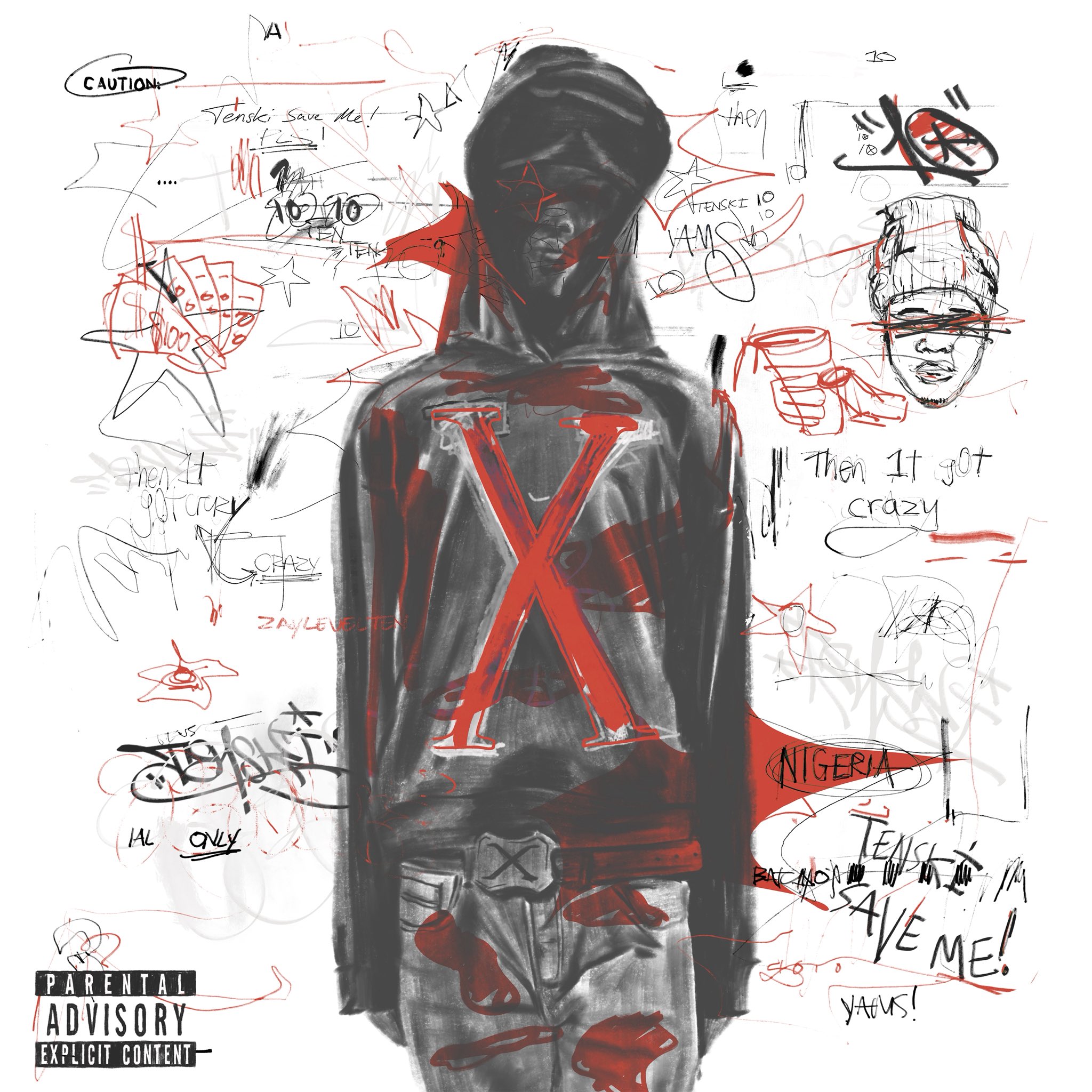
As someone who discovered Zaylevelten in February this year, when he released Watching Me, I consider myself one of his early fans. (Earlier fans, those who found him through before 1t g0t crazy or l0cked 1n—tapes he released in 2024—might chafe at this characterization.) Lying on my bed, one cool evening after work, I performed the distinctly 21st-century ritual of scrolling through X, the platform formerly known as Twitter, dutifully scanning its interminable sea of text and visuals for my latest dopamine hit. After what felt like 5 minutes I stumbled upon a snippet that stopped me in my tracks. “‘Watching me’ out on all plats,” the caption read. In the video, which pulses with the slightly off-kilter and grimy feel we often see in US and UK underground scenes, two guys dressed in all black outfits prance around over a discordant track. The clip is fashionably upbeat. The aspect ratio is distorted so that every person or object looks unnaturally long and lyrics in the font of Charlie XCX’s Brat haphazardly pop up on the screen. I was immediately arrested by Zaylevelten’s but even I couldn’t predict his surreal rise this year.
Since then, I’ve assiduously followed his blistering rise. Zaylevelten’s every release has sent shockwaves throughout the pop landscape, seemingly consolidating his base and strengthening the resolve of his antagonists. No more intense has this endless cycle of polarization been than in the days and weeks that followed the release of then 1t g0t crazy, a smorgasbord of tracks that foreground his distinctively Nigerian interpretation of Trap music, which he auspiciously released on the first of October this year. All of this has culminated in the deluxe edition of the project, cheekily titled then 1t g0t crazier. Indeed in this spruced-up edition, things get more intense. then 1t g0t crazier tops up its original version with the addition of four new tracks, two of which feature Odumodublvck and Mavo.
One of the chief pleasures of then 1t g0t crazy is its textured exploration of contemporary youth through a decidedly Nigerian lens. Consider, Guide Pass, a standout track on the project. Here he trains his attention on the familiar situation of friendships coming to an abrupt end as a result of the change in fortunes of a member of the friendship group. In the song’s overture, he addresses whispers of rancor between him and a friend, clarifying that he has no problems with anyone, he has simply transcended the friendship. “No be say we get issue I don pass you,” he intones.
Other times he’s more cavalier, nonetheless his unbridled swagger persists. In Pawon, a callback to Olamide’s single of the same title, he conjures a decadent scene. Inebriated and throbbing with virility, presumably at the cusp of sexual relations with a woman, he sings: “Upstairs. Make she climb up. I don high up. I no fit calm down baby climb up,” he raps. Abruptly, the song cuts to a different scene. Here he’s faced with a different dilemma: he has just received a lump sum and is pleading with his interlocutor not to forget the password. As with many other Hip Hop acts he often dawdles along moral boundaries, exploring subjects such as fraud, sexism-addled sexual relations (pun very much intended), and drugs. Depending on what moral standards you uphold, some of these themes might come across as off-putting. And yet, his ceaseless interrogation of morally questionable themes, paired with his sensibility for slang and unbelievably smooth flows, confer his music with frisson. Listening to the project feels a bit like being in the first flush of youth, feeling like the world is your oyster and nothing is beyond reach.
The four new additions on then 1t g0t crazier crackle with this familiar frisson. On Isa Lot, an ode to his, apparently, immense level of swagger, he regales himself and his audience with syrupy smooth flows and, occasionally, poignant lyrics that can catch one off guard. Between exuberant boasts and hilarious quips such as when he raps “Lamba anytime I’m yearning with a thot,” he sneaks in lines whose playful delivery might belie their depth: “Soft life from a hard life/ Tenski now my music don dey massive.” Wuse Tu, featuring Mavo and Lowzy, is similarly exhilarating. It’s just a shame that Idanski, which was already close to perfection, is undercut by a lackluster, bluster-riddled verse by Odumodublvck in the remix.
Earlier, I expressed astonishment at Zaylevelten’s increasingly rapid rise to fame. If a recent tweet he made is any indication, he also shares in this astonishment. “If someone told me I’d have over 5 songs touch a million streams by the end of this year I woulda called cap, we’ll keep going crazy I love y’all,” he writes. In explaining his rise, several theories abound. And yet, the most compelling one remains that his ascendancy owes something to his intrepid exploration of subjects that deeply resonate with young adults today.
.png)
Across the vast belt of the Sahara and Sahel — from Niger to Chad, Sudan to Somalia, and across Mauritania — lives the fictional nomadic people known as the Khal’rin. Their entire creative identity is built around camel-hair art, an expression shaped by desert life, spiritual memory, and survival.
They say:
“The desert gives the camel, the camel gives the culture.”
.JPG)
Legend says that the first Khal’rin artist, Sahelah the Weaver, survived a fierce sandstorm by burying herself in a tent woven from camel hair. When she emerged the next morning, the wind had carved natural patterns into the fabric — shapes that resembled dunes, stars, and desert spirits.
Inspired by this “gift of the wind,” the Khal’rin began trimming, weaving, and painting camel hair as a way to communicate with the desert and honor the animals that carried them through it.
To this day, every Khal’rin child is taught:
“The wind shapes the hair, and the hair teaches the hand.”
ART FORMS OF THE KHAL’RIN
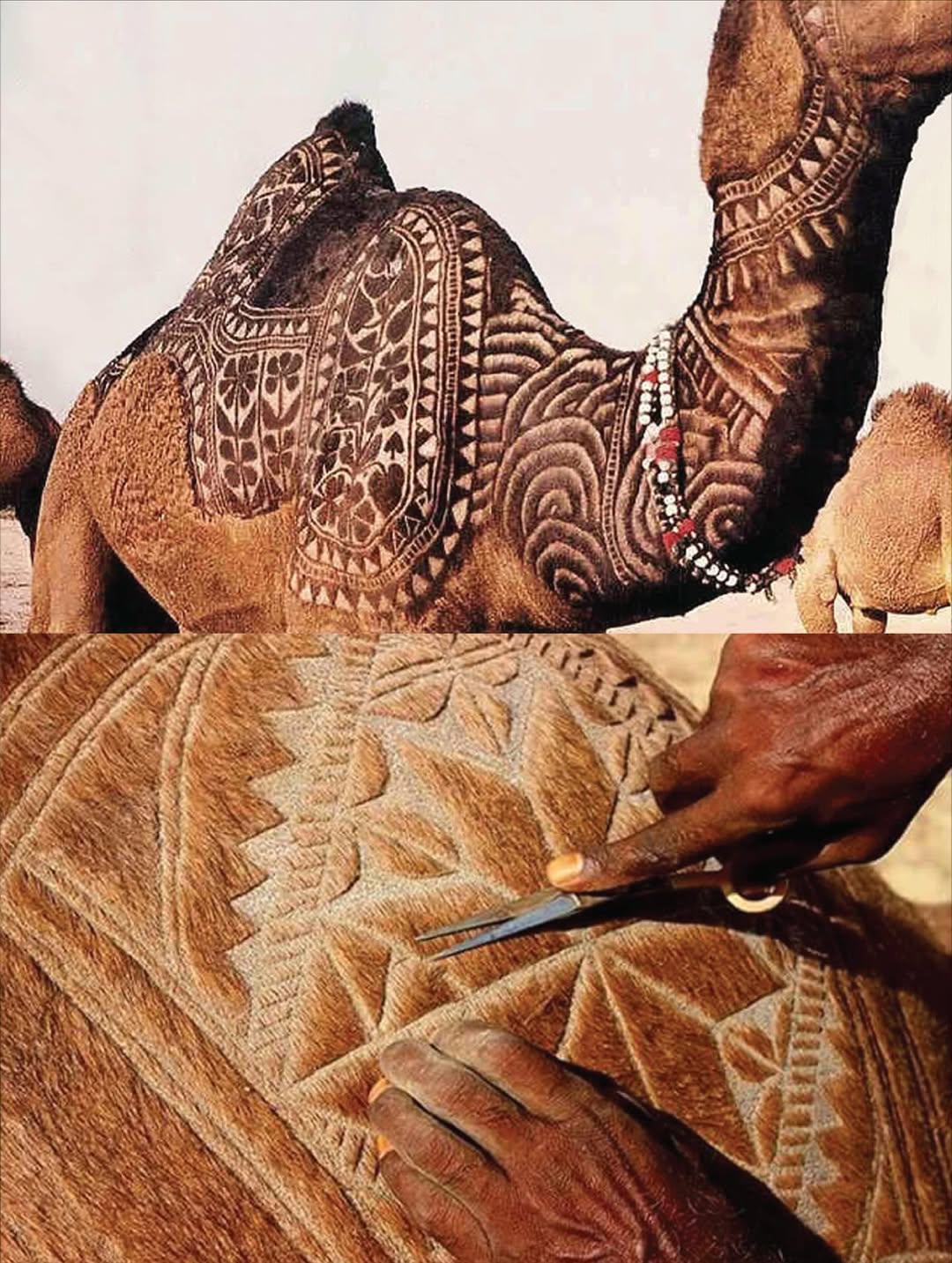
The most respected practice is shaving detailed patterns into the coats of living camels a tradition echoing real practices seen in parts of Sudan and Somalia.
Motifs include:
Camels become walking tapestries, carrying the stories of their owners.
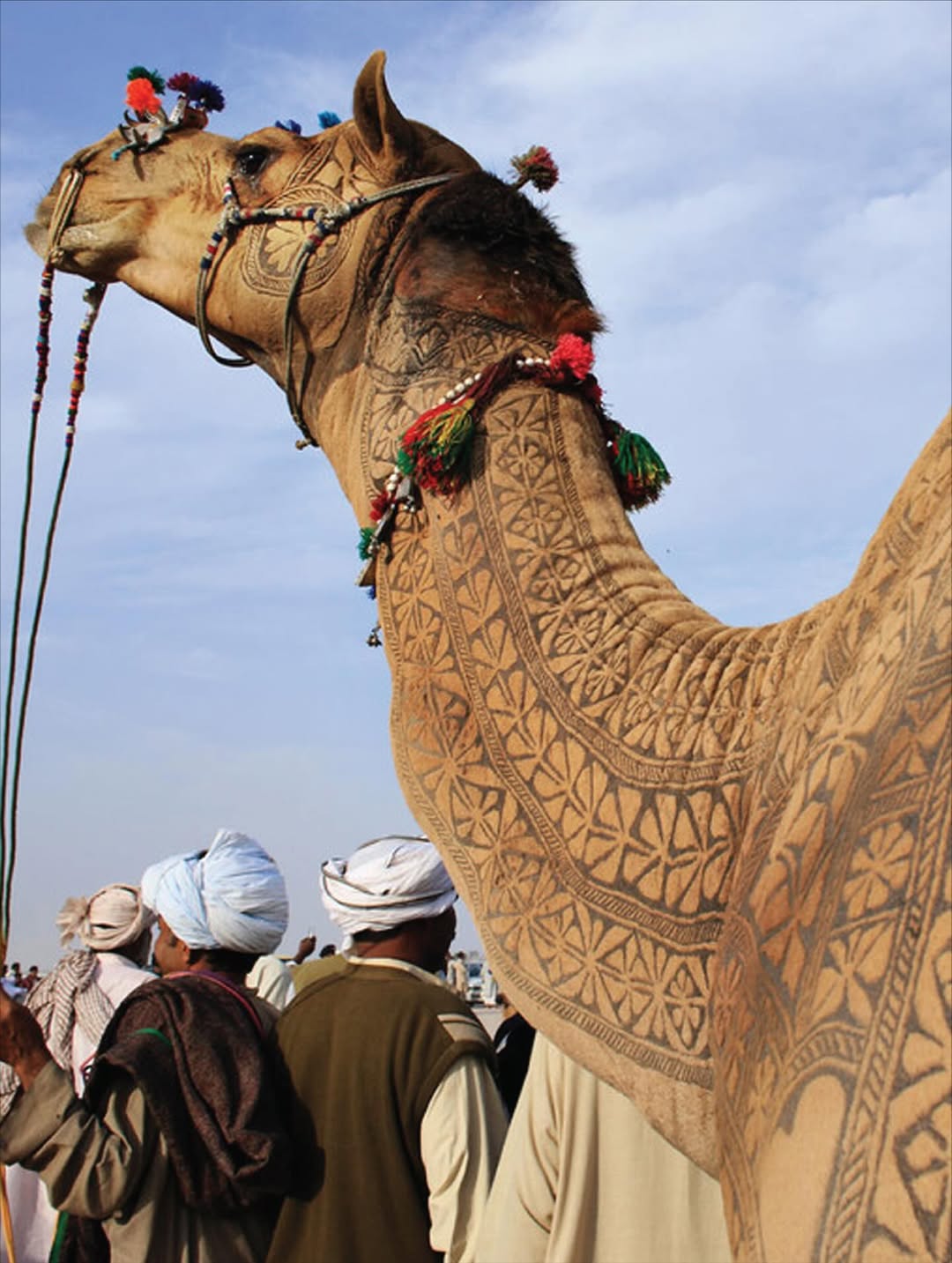
Tents, shawls, and robes are woven from soft camel underhair, with patterns that act as coded messages — blessings, warnings, and clan symbols. This craft, influenced by weaving traditions in Mauritania and Niger, carries deep meaning through every motif.
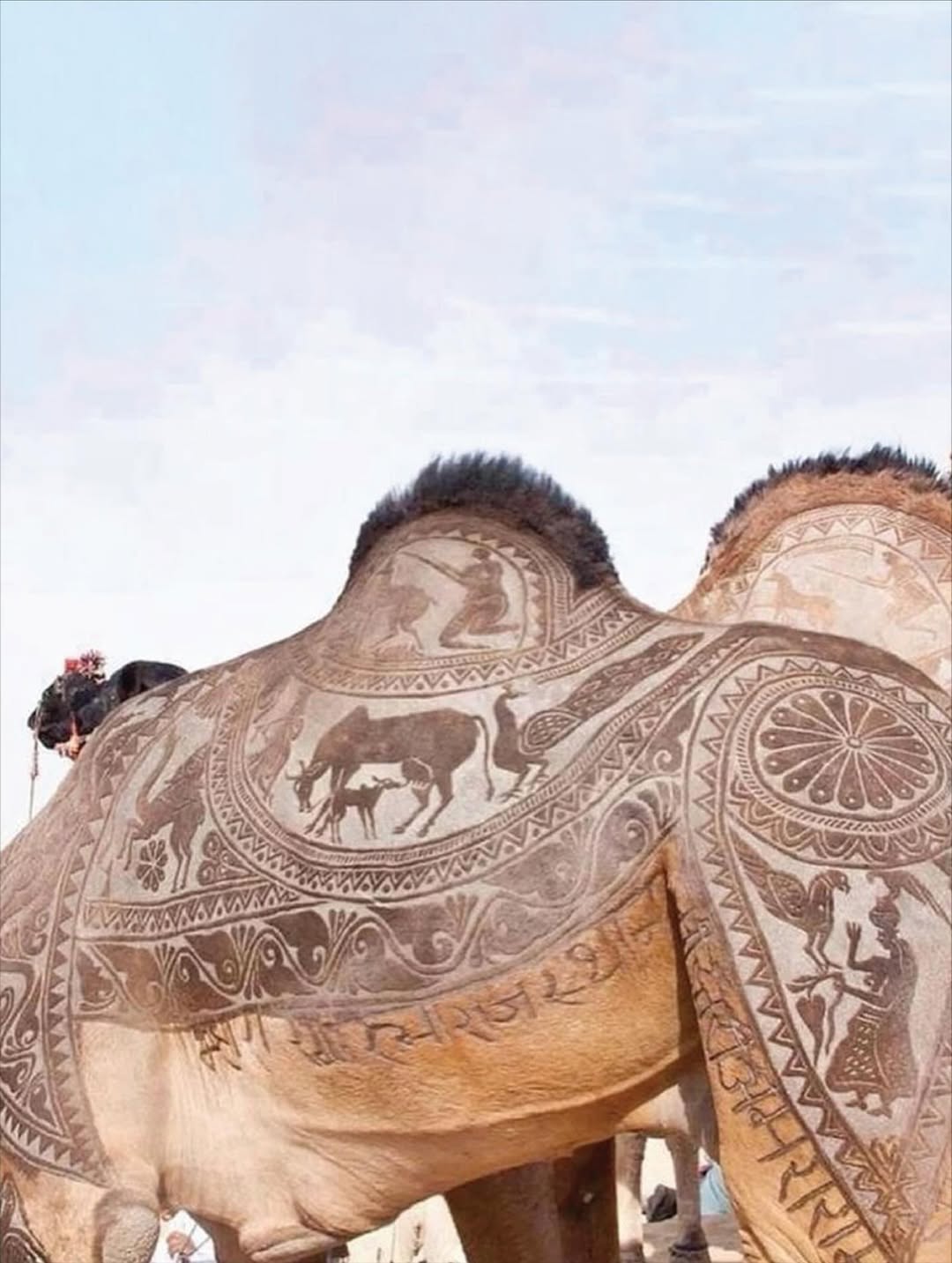
Camel hide is stretched, dried, and painted. When lit, the lanterns cast shadows of dunes and spirits, used during festivals and night journeys.
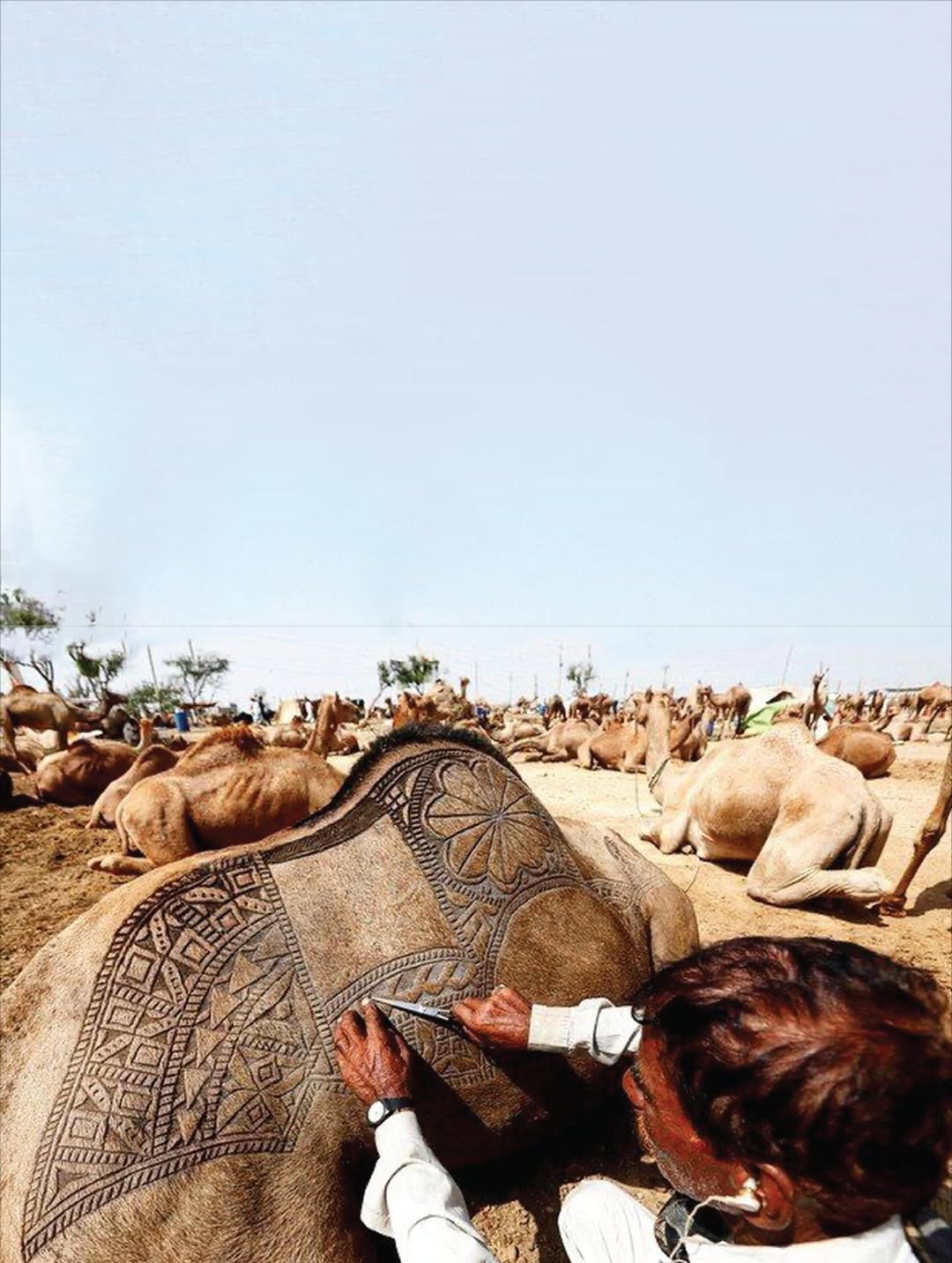
During rites of passage, camel manes are dyed with natural pigments seen across East African nomadic cultures:
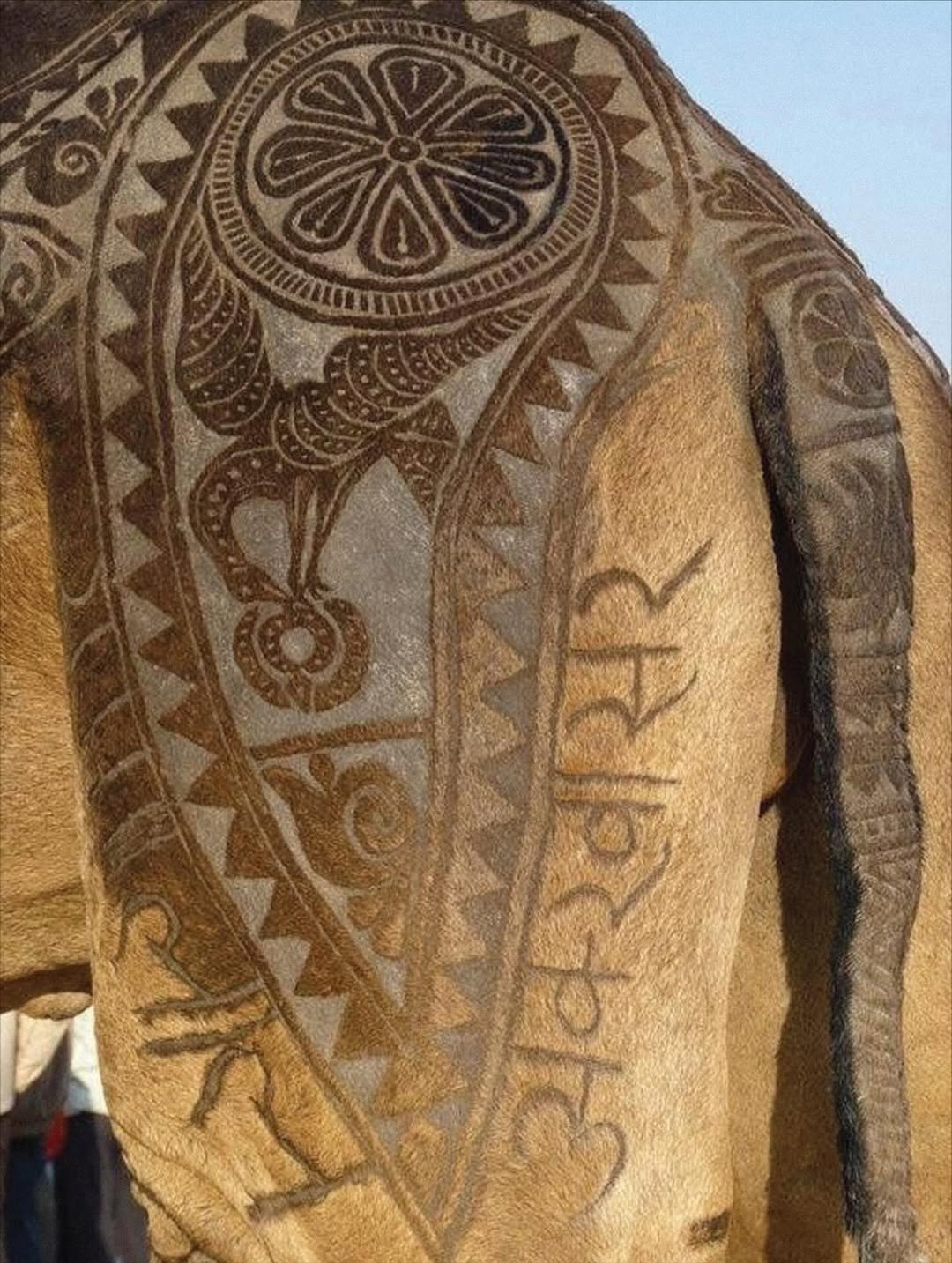
VALUES AND SOCIAL MEANING
Held annually during the dry season across Khal’rin camps in Sudan and Chad.
Events include:
Winners of the fur-carving competition are given desert jade beads — worn only by master Maheeri.
A marriage tradition practiced in Mauritania and Niger regions: both families weave a camel-hair tapestry symbolizing the joining of households.
Across communities in Somalia and Northern Sudan, youths dye a section of their camel’s mane to mark adulthood and identity.
As younger Khal’rin migrate to cities like Nouakchott, Niamey, Khartoum, and Hargeisa, camel herds shrink and ancient practices risk fading.
Still, the culture adapts; blending old patterns with new symbols while preserving its essence.
Elders say:
“As long as the camel walks, the art breathes.”
For the Khal’rin, camel-hair art is a living language — a thread connecting ancestors, land, identity, and community. It shows how desert societies across Niger, Chad, Sudan, Somalia, and Mauritania transform survival into beauty and tradition into art. It is proof that culture doesn’t just survive the desert, it grows from it.
.png)
After six years building a career in Australia that earned her four ARIA Awards and international recognition, Zambian-born, Botswana-raised artist, Sampa The Great has relocated her professional base back to Southern Africa. She's bringing the expertise, relationships, and global perspective she gained abroad back to Zambia and Botswana, investing in the creative economies that shaped her in the first place.
At the center of it all is Nu Zamrock, Sampa's expansion of the genre pioneered by her relative George "Groovy Joe" Kunda. Where Zamrock fused rock, funk, and African rhythms in the 1970s, Nu Zamrock adds hip-hop, poetry, and soul to that foundation. Her 2026 album will tell that story fully, positioning her as a genre trailblazer expanding Zamrock into new territories. Ahead of that release, we sat with Sampa. This is that conversation.

Your "Return to Africa" movement is central to this moment in your career. What does "returning" mean to you when you've carried Zambia and Botswana with you everywhere, from Australia to global stages? How has your relationship with the continent evolved over the years?
I wouldn't say it is a return to Africa movement because I was born and raised in Africa. I would say it's a reclaiming of my professional career in the place that most inspired it. I was based in Australia for six years and started my professional career there after completing university studies, which is the reason I went to Australia in the first place.
After my music career started blowing up, I decided to stay there and grow my career. Now, I've decided to bring all I've learned in my time there and on global stages back to the places that inspired the dream in the first place, Zambia where I was born and Botswana where I was raised.
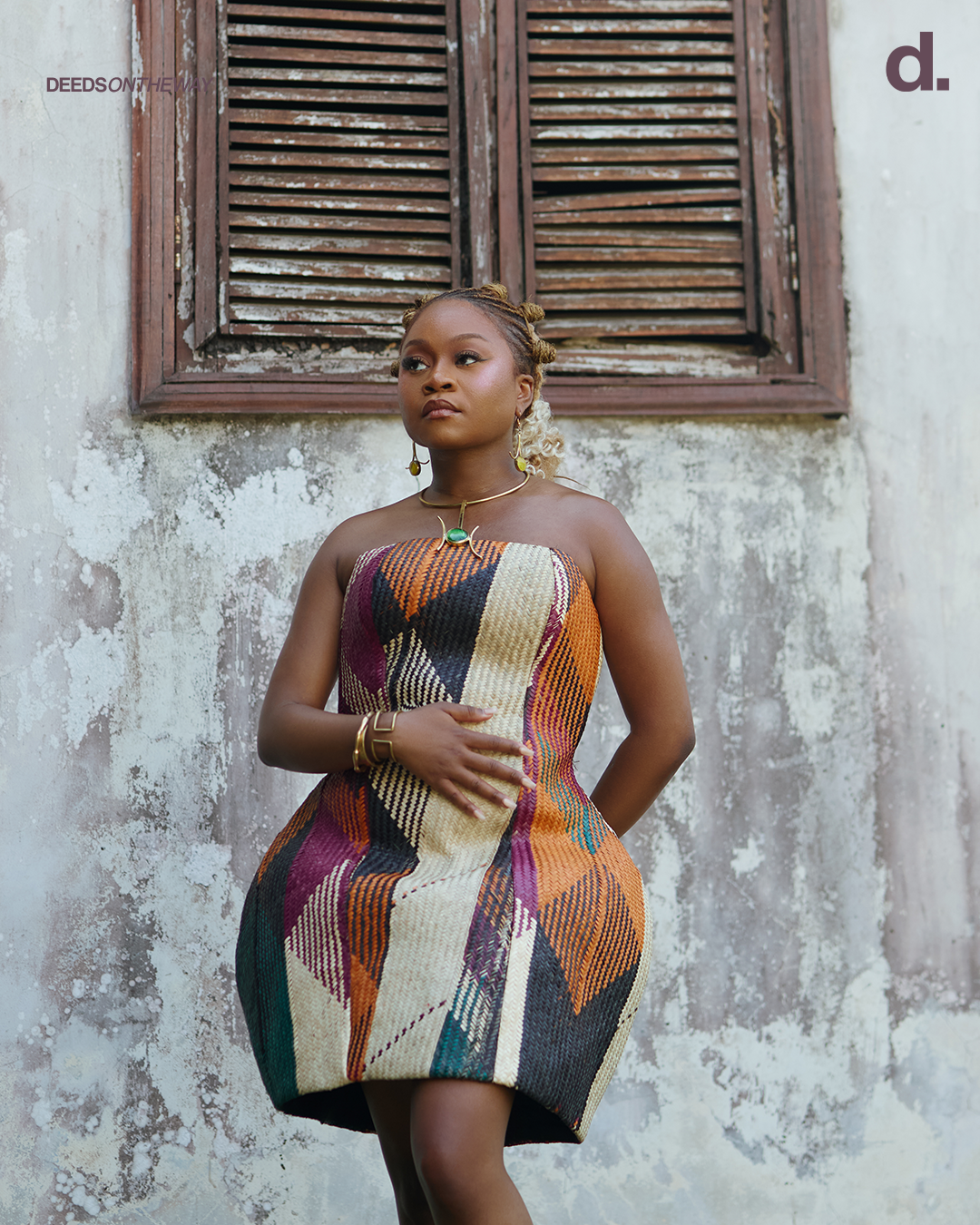
You call yourself Sampa The Great. When did you start using that name, and what does "greatness" mean to you? Has your definition changed over the years?
I started calling myself Sampa The Great as a reminder to be the greatest version of myself always. Over the years it has evolved to doing the best that I can always. That does not mean perfection or being the strongest or greatest person in the room. It's simply pushing to do your best at any given time and constantly working on it, regardless of the situation you're in.
Fashion has become a big part of your cultural presence. How do you see fashion as an extension of your artistry? What conversations do you want your presence in those spaces to spark?
I always say it was the Thandiswa Mazwais, the Angelique Kidjos, and the Angela Nyirendas of the world that made it cool to wear your traditional attire on stage, at awards, and in the mainstream. This was pre-Wakanda, because it definitely was a time where it wasn't the norm or was called corny.
I say that to say, it's something powerful about being in spaces in which people who look like you or who expressed their culture like you were not allowed in. It sparks the movement of African style and fashion belonging everywhere and having as much access to any and all spaces as everyone else. Not only because it's top tier, but also because it is the silent inspiration all fashion draws from.
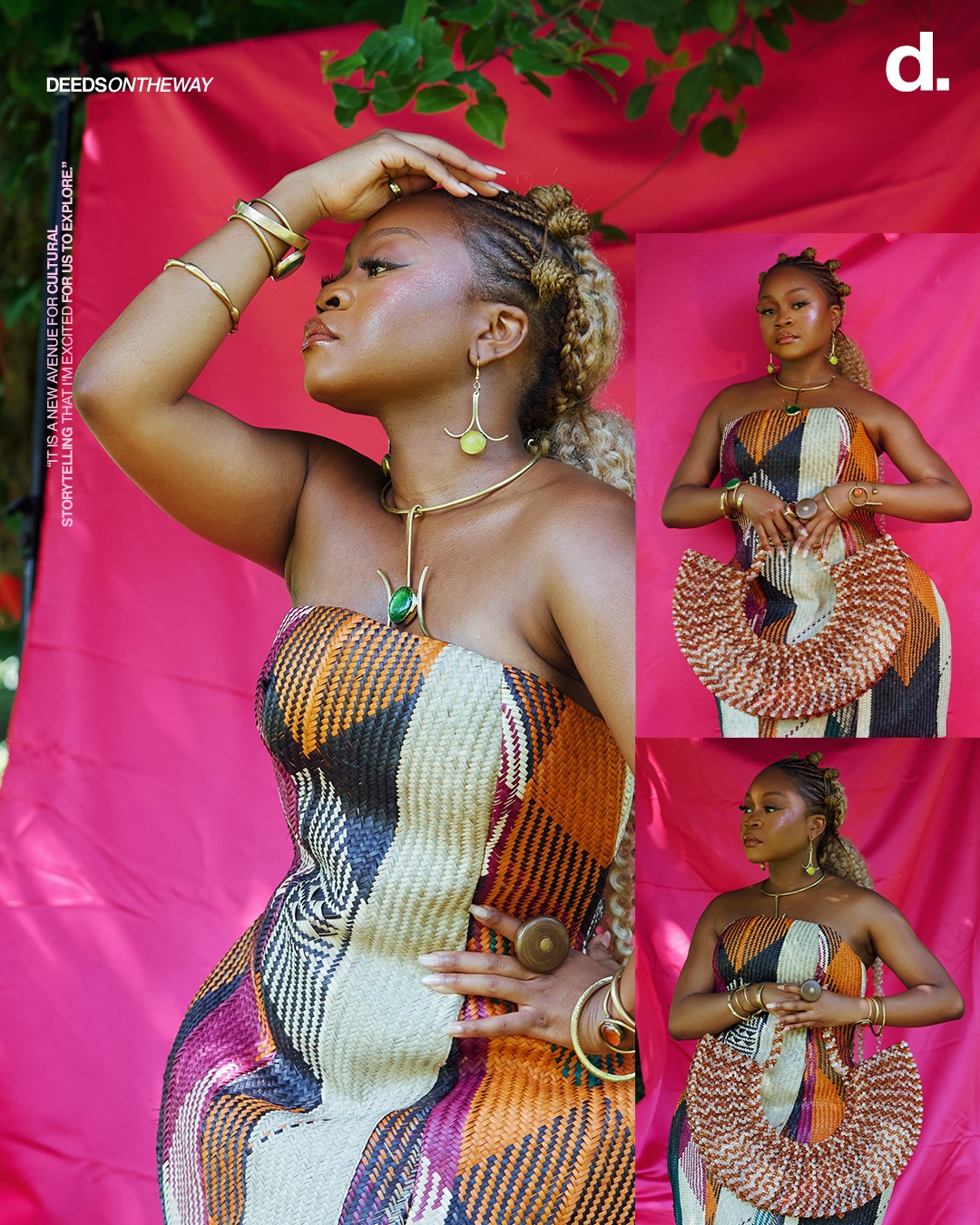
"GOAT" on the HIM soundtrack sits alongside Denzel Curry, Tierra Whack, Gucci Mane. It's a powerful lineup. What was your creative process for contributing to a film soundtrack versus creating for an album? How did you approach it differently?
"GOAT" was a very exciting experience for me because I'm a huge fan of Jordan Peele's movies and Marlon Wayans. So to have my name attached to a project with them was amazing.
My goal was to express what the story of the movie is, the synopsis I was given, and how it relates to my life and industry. "What would it take to be the GOAT to you?" What are you willing to strive for, give up, and sometimes sacrifice? In this very political and dark world, the word sacrifice has more than one meaning. When it comes to the music industry, I really related to the topic of mentorship, fame, sacrifice, and being comfortable enough to be out of the spotlight and have my music touch and influence culture as my own definition of success.

You hosted the Lusaka Homecoming Block Party in November. What did that day need to feel like for you? What were you most excited about?
It needed to feel like the neighborhood kids have come together to celebrate and have a braai. Celebrate the creativity we all love. Celebrate the fact that we get to be creative in a somewhat conservative country and that there are like minded creatives who want to work and be in community with each other.
Gaming culture has embraced your music; you're featured on the EA Sports FC 26 soundtrack. How does seeing your work in a global video game impact your audience reach, and do you see gaming as a new platform for African artists?
I think it's amazing that EA Sports has added "Can't Hold Us" to the game. The reach of the gaming world is incredible and I'm super grateful I get to be a part of it. I feel like African artists definitely have a space in the gaming world and it is a new avenue for cultural storytelling that I'm excited for us to explore.
You're working with a new creative team: Nia Andrews directing, Iggy London on visuals, Abu Dumbuya on photography. What's changed about how you see yourself through their lens? Have they pulled something out of you that wasn't there before?
Collaborating with new and exciting creatives always brings the best out of you that you never saw. Iggy London has an amazing visual eye and a great knack for storytelling, and it's definitely a lane I've been growing myself and was able to expand through working with him.
Nia Andrews is an amazing creative director and, most importantly, what I call a creative interpreter who is able to weave the story and essence of the creative world into our work via world-building. A skill that was sharpened on my end through her in this project. Abu Dumbuya brought the spark and excitement to capturing moments from the visuals and interpreting looks for the single tracks. A very well-needed spark that completes the whole process of the visual story. But also my internal team, from management to label to project manager, have been integral to putting this vision to paper, and all this wouldn't have been possible without them.

With a growing global audience and major corporate campaigns, how do you keep it real on social media and when you're building community online? What's your approach to staying authentic as things get bigger?
I still post the majority of my posts online, so you definitely still hear my voice directly to the people who support and encourage me. It's always been that way, especially because it was social media that brought my music to the limelight.
Initially, in a music industry like Australia where there were not a lot of Black artists in the mainstream spotlight, it was social media that had the Will and Jada Pinkett Smiths, the Rhapsodys, and the Lauryn Hills share and acknowledge my work before the industry did. So I always keep talking directly to my online community close to my chest. At the end of the day, it is my voice.
Your 2026 album is coming, "the next era." What's the story you're dying to tell that you haven't been able to yet? What does this new chapter mean for you?
Not only am I related to a pioneer of one of the coolest genres in the world, George "Groovy Joe" Kunda, who is one of the pioneers of Zamrock, I myself am carrying on the legacy and pioneering and expanding the genre to new heights via Nu Zamrock. A story I'm super excited to tell next year!

Sampa is precise about her language. Not "returning" but "reclaiming." Not "perfection" but "doing your best at any given time." Not revival but evolution. These distinctions reveal an artist who understands that words shape worlds. Sampa The Great is reclaiming a genre, expanding its sonic possibilities while honoring its roots. And in that reclamation, she's building pathways for the next generation of Zambian artists to claim their sound, their stages, their futures.
The album arrives in 2026. Everything, the EA Sports placement, the HIM soundtrack, the Lusaka block parties, has been building toward that moment. Nu Zamrock gets its full statement, and Sampa steps fully into the legacy she's been carrying all along.
.png)
There is a particular energy to the way Remi photographs the world. She moves through clubs, concerts, and Afrobeats shows with quiet focus, noticing the moments that define a night, the emotion in a crowd, the hype on stage, the way people forget their problems and immerse themselves in music. Her vision has been shaped by being present in these spaces, understanding the global growth of Afrobeats, and carving a space for Black African women behind the camera. She doesn’t just take pictures; she preserves culture, feeling, and the spirit of the people she photographs. Every shot is intentional, every moment captured in real time, and every photograph holds the authenticity of the experience.
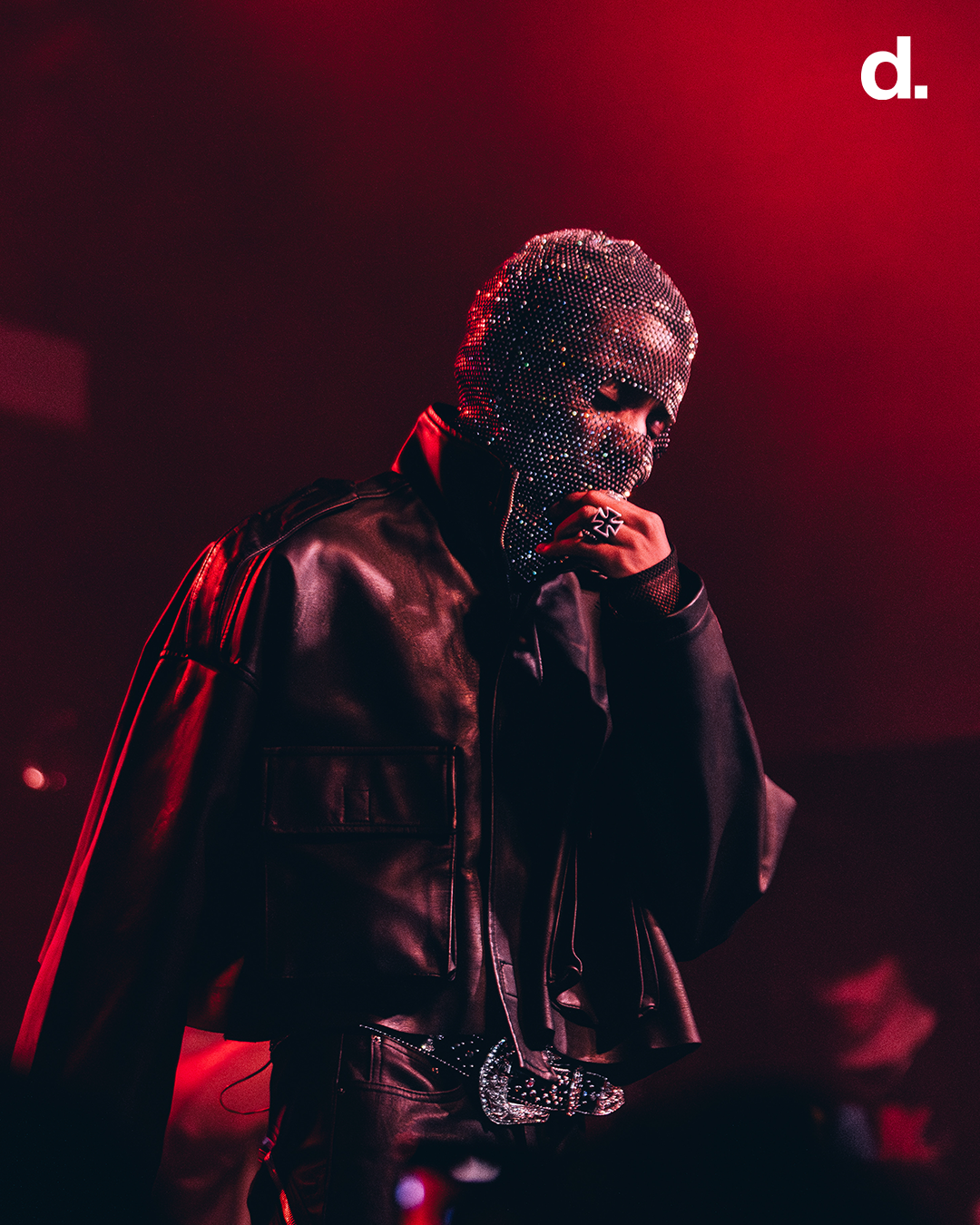
Can you introduce yourself?
“Hi, my name is Remi. I’m a photographer based out of Toronto. I’m also known as Remi Shot It. I shoot mostly concerts and nightlife, so you see me in the club, shooting, and you also see me at your favorite local Afrobeats concert. Afro Beats has blown, so it’s no longer local. I feel like it’s very rare for black African women to be behind the camera and not just be as a photographer but like shooting nightlife, shooting clubs, shooting concerts. So right now, Afrobeats is very global and being a Black female photographer, I’m able to show our culture from behind my own lens.
When I say I shoot concerts and nightlife, I mean that’s really where I am most of the time, either in the club or at Afrobeats concerts. And Afro Beats has blown, so it’s not small or local anymore. It feels important that someone like me is behind the camera. Shooting nightlife, shooting clubs, shooting concerts, being in those spaces, that’s how I show our culture from behind my own lens in a real way. It’s rare to see Black African women in these rooms, but being there matters.”

What themes, stories, or emotions do you try to capture through your photography?
“So I’m able to express things that are culturally relevant and culturally important to anyone that comes across my page and anyone that comes across my pictures online. When I shoot, I don’t necessarily try to capture anything very deep. I kind of go with the vibe, the flow, especially when I’m shooting a concert or nightlife. You’re just trying to capture the exact moment. So every time I shoot a concert, I’m focused mostly on Let me capture this moment, the emotion, the hype, how people are feeling, so that when people go through my Instagram after a concert, either if you attended or you didn’t attend, you’d be like, oh, this show was mad.
Going with the vibe and flow is really how I shoot. I don’t try to force anything deep. I look for the exact moment, the emotion, and the hype. When you go through my pictures online, whether you attended or not, I want you to see those culturally relevant and culturally important moments. I want you to feel what the night felt like. That’s the point, capturing the energy, the people, and the moment as it happened.”

What’s something you want people to understand about you beyond the lens or beyond your photography?
“Beyond photography, I live a pretty private life. People that come to my page usually think it’s a man behind the page. I think people that know me in real life know that I’m a very quiet person. Even though I indulge in nightlife, I’m not necessarily an extroverted person or someone that even likes to party. I just like the vibe and capturing people in their most hyped moments, the times that they forget their problems.
Even though people see me in nightlife, I’m quiet. I’m private. People often assume it’s a man behind the camera, but the people who know me know the real me. I’m not extroverted, and I don’t even really like to party. I just like the vibe. I like capturing people in their most hyped moments, in the times they forget their problems, and that’s really what I enjoy.”
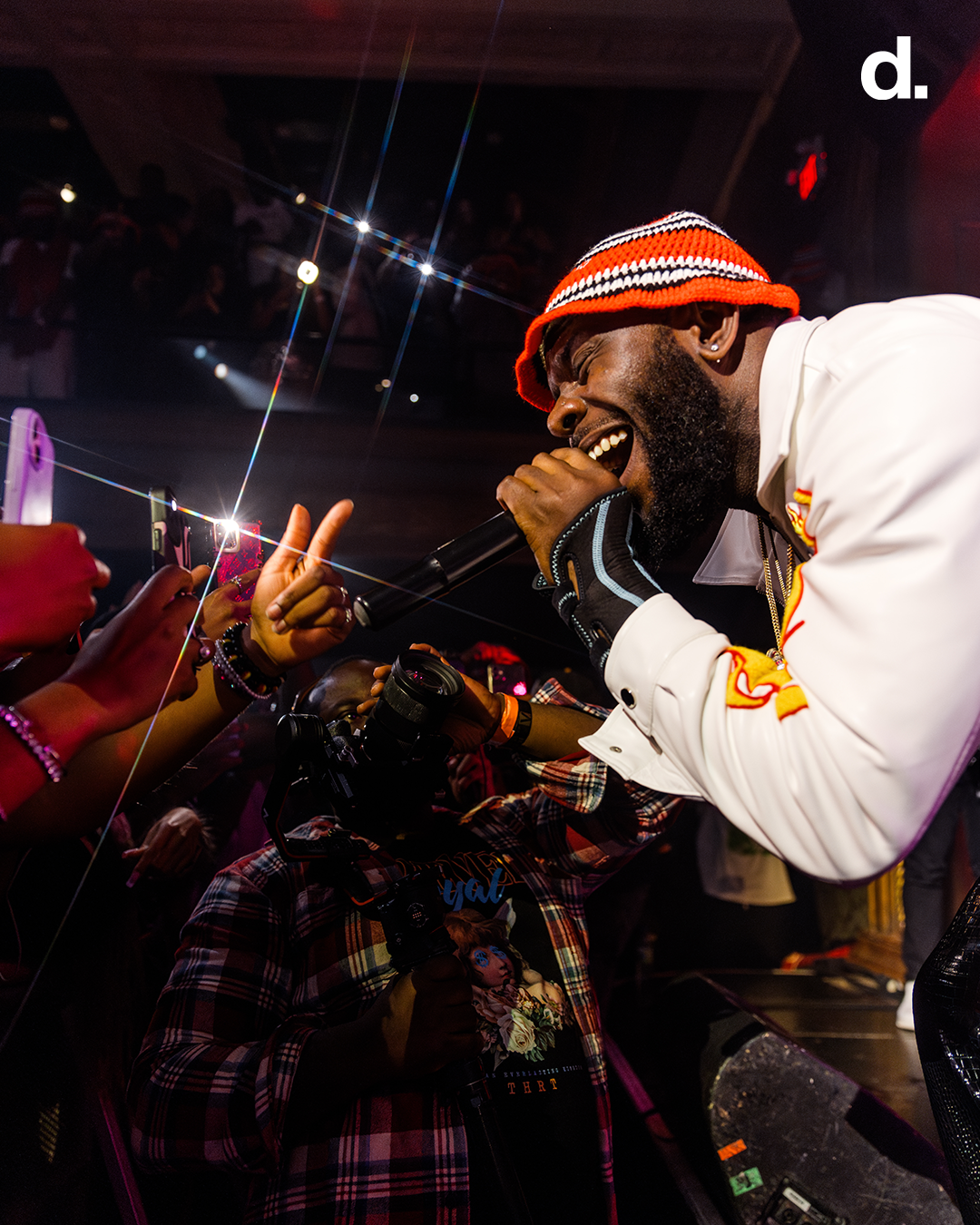
Through her own words, Remi shares the energy, focus, and intention behind her photography. She captures the moments that define a night, the feelings that linger after the music stops, and the culture that continues to grow globally. Her work shows that photography isn’t just about pointing a camera, it’s about presence, energy, and perspective. Every moment she photographs holds authenticity, every frame reflects real emotion, and every image invites people to feel the experience, to relive the hype, and to witness Afrobeats through her lens. In the world of Remi Shot It, every picture is intentional, every night is a story, and every concert becomes a memory preserved in time.
%20(2).jpg)
YSL Beauty unveils its unique immersive beauty and entertainment experience, the YSL Beauty Light Club in Lagos, Nigeria on December 10th, 2025.
YSL Beauty invites you to step into a dazzling new world with the launch of the YSL Beauty Light Club. Drawing inspiration from the vibrant clubbing culture of the 70s and 80s, as well as the legendary venues that were once the playgrounds of M. Saint Laurent himself, this innovative retail experience celebrates the dynamic blend of beauty and music that has always defined the YSL Beauty brand.
Imagine a space where shopping transcends the ordinary—where light, energy, music, and color come together to create an unforgettable journey of self-expression and empowerment. The YSL Beauty Light Club is a tribute to M. Saint Laurent's passion for nightlife and the electric atmosphere of a bygone era, reimagining retail as a celebration of beauty and creativity.
At the YSL Beauty Light Club, you'll discover an expansive range of YSL Beauty fragrance, all presented in an immersive environment designed to awaken your senses for those seeking a more indulgent experience, the luxurious VIP Lounge awaits, offering a symphony of scents that elevate your senses and immerse you in luxury. Every aspect of this vibrant destination is thoughtfully crafted to captivate and exhilarate, making the visit an exciting adventure into the world of beauty. Join us at the YSL Beauty Light Club and embrace a new era where beauty truly meets entertainment!
Enter the world of YSL Beauty at Lagos, Nigeria starting from 10.12.2025. Dare to shine. Purchase your YSL Beauty 90/100ml fragrance at Essenza from 1st of December. Get your YSL Beauty Tote Bag and try your luck for the ticket! Tickets & Tote Bags are limited.
YSL Beauty gives body and soul to a style. Completely liberated, it asserts itself as a collection of icons, with each creation driven by boldness, youth, and the avant-garde. In the wake of Saint Laurent, who showcased the spirit of the times for nearly 40 years, YSL Beauty continues its unbridled love affair with women to create, shape and develop modernity. No compromise. Your own rules. Now.

In Duplicity, Boj reveals two contrasting sides of himself. The Alté pioneer once again reminds us why he is somebody who can never be slept on. Six albums into his career, he is still able to keep people on their toes while maintaining what has made him the innovator he is.
As for the album itself, when you first take it in, you can see a difference between this and his previous material. Sonically, visually, and thematically. The album itself represents two sides and explores the duality of its subject matter through the different emotions, thoughts, and feelings he shares across the project. “The whole concept of the album was born out of an argument,” he shares about the genesis of the album, in how the idea came to be. Its title and concept were determined very early in the album-making process, which is usually the opposite of his process. Even in setting the tone for the visuals and artwork, inspiration came from Peaky Blinders and The Godfather, allowing Boj to express all sides of himself.

As a cultivator in the genesis of the Alté lifestyle, which expands beyond the genre of music and translates across music and fashion, and represents a different kind of creative expression. Boj is somebody who has never shied away from whatever it is that makes him stand out the way he does. As we meet this version of Boj, there is growth and elevation from what has already been established with his legacy and impact on the genre. Joined by his fellow collaborators on the album, he continues to show that, no matter the situation or circumstance, he shifts and expands what people see him as when it comes to his music and creativity
Meeting Boj in this era represents growth and self-realisation for him and reflects parts of himself that fans and audiences may not be familiar with. However, ever so accurate to himself, he still delivers a body of work that gives you the quality of music we have always come to love.

First of all, congratulations on the new album. We were introduced to the sound of the album with the first two singles, ‘Shana’ and ‘ After Hours’. Why did you feel these were the first songs you wanted people to hear from the album?
Really and truly, those songs tell the album's story perfectly. There are two sides to me, and it fits the whole duplicity theme. One of the songs is really centred on love, and the other is just centred on enjoying life. It aligned well with the project's theme.
The tone of the album has a darker feel than what we have heard from you. So how did we get here?
The whole concept of the album was born out of an argument. So that's really why it feels like that. As an artist, it's very hard for me to express musically without it relating to what's going on in my life. That's what's come out like that, even down to the album cover; it's all dark.

As you were making the songs themselves, did it just transpire that they were all leaning towards a particular sound or theme? Or was it something that just came naturally as you were making the music?
For me, it was just what was happening at the time. It was just what we were creating; I just let it happen, and this is how it happened. This is the first time I've had my album name or the album theme before the project has been done. I had made only two songs before I had the name already. The name usually comes at the end for me; this is the first time it came first, and even then, I wasn't intentional about the mood of the songs. It was just what was coming. It was just how I felt.
Why did you choose Duplicity as the album title?
In the argument I was having. I was called duplicitous, and I didn't know what it meant. And then I went and checked what it meant, found out what it was, and was just like, this is everyone. This is true, maybe I'm a bit duplicitous, but I feel like everyone is to some extent, and I just needed to express that.
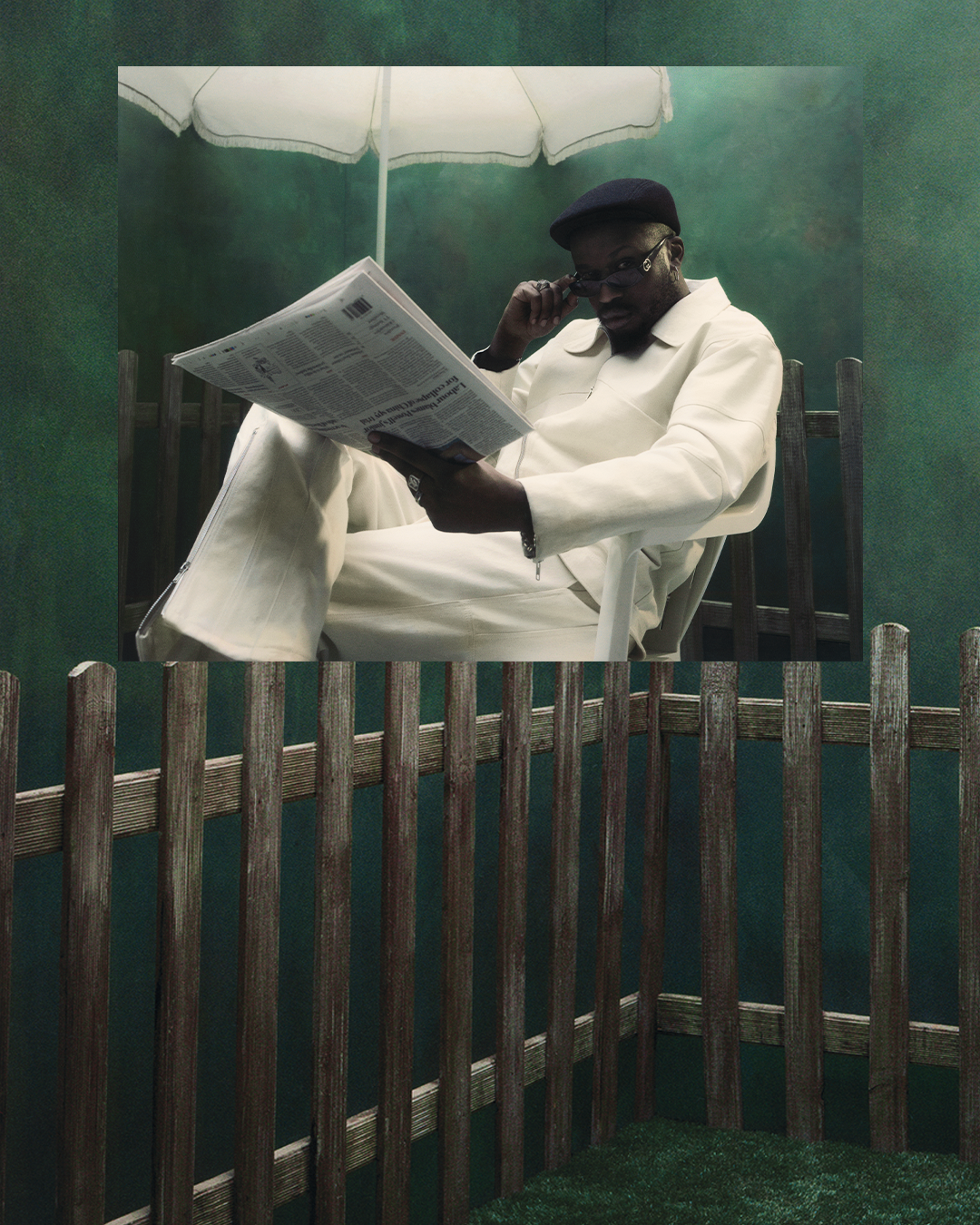
As a whole, did you feel like there was any, like, pressure or like, slight hesitation as to what people were going to think about hearing the album because it does feel different from your previous bodies of work, or was it something you were not thinking about?
I don't think that way; I just always assumed that people would accept everything I do. So I don't really think the other way. The only thing I was hesitant about was explaining why my album is the way it is. I'm usually a very private person. I don't really talk about what's really going on in my life, or anything like that. But then I also thought about the kind of person I'm trying to grow to be, which is to be honest and to let people in a bit more, let the fans in a bit more, see my character a bit more, let them kind of see what actually happens in my head.
How did you find that this experience for this project differed from your previous bodies of work? And just like bringing together everything from the artwork, even like the artwork for the singles, how was it?
With this project, when I'm making one, I usually have a bunch of sessions with different producers, you know, and work with different people. But this time, I decided to lock in with junior, who's a producer I've worked with in the past on many records as well. We spent like a month together, first, just chilling, you know, doing things together. And then we locked in for a month again after that to start recording, I just really, really found, like, a synergy with him, where it's like he, he kind of now knows precisely what I want, even when I don't know what I want.
It was just a beautiful experience, also working with Tim Lyre, who's a great artist, great songwriter. He's also good at channelling, channelling me; he knows how to write like me. He's a rapper as well, so he elevates the writing, you know. So when I think about it, this album was actually very intentional. With the visuals as well. It was like watching Peaky Blinders again, before I started working on the album. And that inspired me a lot as well.

You are never shy about collaborating, and there are a few people on the album. So, speak to us about the features and who worked with you on the album?
This project has the fewest number of features I've had on a project. And this is also because I usually make music from a very selfish place, where it's like, I do what I want to hear. Yeah, okay, yeah. But sometimes you listen to what your fans are saying. And there was always the talk about how they wanted to hear more of you on songs, on certain songs. And usually I don't like hearing myself all over the song. So this time, there was only Olamide, Mavo, Obongjayer, ODUMODUBLVCK, Pa Salieu, and SGaWD, and usually, there's only one song that I'm on by myself.

I grew up musically. I started music in a collaborative setting with my group, Dr B, and it was something, something where I'll do the hook, and then these other guys have the verses, or I'll do a verse on a song, or, you know, so that's how, that's how I really started. So from my first project, it was heavily collaborative,
With the music that you started making at the beginning of your career, and what that has evolved to what your sound is now, how do you feel that's changed, from where you were to where you are now? How do you define the music that you make now, as opposed to what we've known you, what you've known, what you've been known for throughout your career?
On a base level, not much has changed like that. Like anything, if you keep doing something over and over, you get better at it. Some of the melodies are stronger. Now the writing is a lot better. Now have the opportunity to work with, like, higher-level producers, you know, just stuff like that. On a base level, the sound is consistent; you know, when you hear a particular type of song, you'll be like, Okay, this, this sounds like something BOJ would be on. I've just gotten so much better at doing it.

Within the sound of what Alté music is and the role that you've played in terms of what that genre is to people, and what people know of that genre when it comes to your music, and just like your impact on the sound. Is that something you often think about in relation to your legacy and everything you have achieved in your career?
First of all, we created that whole slang, that Alté slang. So first of all, that's where it starts. And I think we did, because we started really early, and, like, really young, as I got into this when I was 17, 18, we inspired a whole generation of artists due to our belief in ourselves. We just made other people, other artists, believe they could do something different. When we got in, the media was saying, This can't work here, you know, this is just too different And it really wasn't, everyone is telling us we like this, we like this a lot and then in the same breath, they're saying that we don't think it will work, but, but you're saying you like it, but you think it won't work.

We just believed in ourselves and kept going. We motivated an entire generation and, to some extent, changed the sound in the mainstream, not just with the music, but also the style, the fashion, the music videos. It wasn't like we were doing this at the time, trying to change things. We were doing what we liked and how we felt. That's what Alté expresses freely, without boundaries.
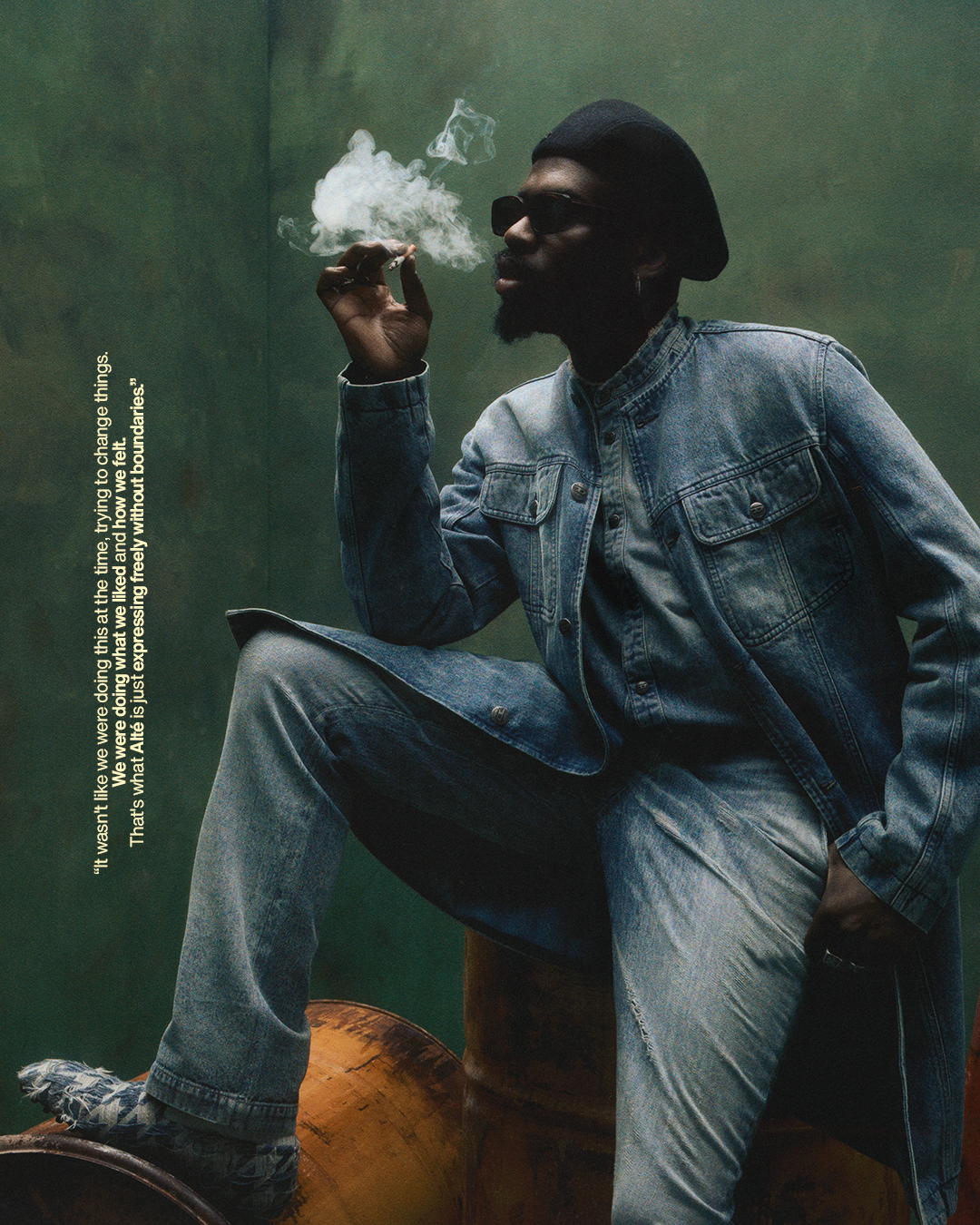
Even doing this as young as you were, what would you say gave you the confidence or the boldness to say, even though this is different, and people haven't done this before, like, I'm just going to go and express the way I do?
It was really about leaving Nigeria, to be honest with you. We went to England really early in secondary school, around year eight. I went to England and did year nine. So those are really formative years, and we're coming from a place where there's a whole lot of rules in everything you do, the way you dress. You have to dress like this. You know, you have to act like this. You have to be a doctor. You have to, you know, that's, that's the world we came from. And then we get exposed to ourselves because we're thrown into boarding schools, and we now have a lot of freedom and autonomy. So you start thinking for yourself, and we did all that. We express in a way, we feel because now we have serious ammunition, because we're coming from the place, from the motherland, which is the actual source of this creativity. And then we now come to the other side, where it just gets refined, you know, and it gets refined, and you have the best of both worlds. And this is what it births.

Even in that sort of expression that went beyond music and was in the fashion and clothes you were wearing, what would you say has been the influences of you know, even from what you've just spoken about, but even throughout your career, and just like throughout the years?
London played a big part in my fashion sense because we saw all sorts of things growing up. We came up in an era of Lil Wayne and Kanye West, and like One Direction, we had all of that, and we also had influences from Nigeria, with the traditional. We would wear dashikis with baggy jeans or skinny jeans, and Converse; traditional outfits with trainers; a suit and trainers, just different shit. So we just mixed everything. And just being around London, there's just some kind of fusion that happened, and that's just what it was. We weren't thinking about the shit deeply; it was just what was naturally coming out of us.

What is this era speaking to where you are in your creativity? How do you feel?
This era represents growth and self-realisation. Even with Duplicity, it's me addressing an issue most people would run from. So it's growth in that sense that's like, Yo, man, okay, what's really going on here? This is something that you have to deal with by yourself, you know. It will help you become a better person when you figure it out. So that's what, that's what this period is for me right now: just in every part of my life, even with like, business-wise, music-wise, relationship-wise, everything-wise, just family-wise. You know, it's just spiritual growth in all aspects. Just trying, just trying in every way to grow, and being intentional about growing.

And what are you looking forward to next, from being in this place and seeing where the next version of where things are, is going?
Right now, I'm looking forward to starting my next project. I'm trying to drop Duplicity and move on to the next thing, and then my Festival, which I do, which has grown wildly over the past two years. So I'm looking forward to this year's edition and just seeing what happens. I don't overthink, I don't let myself think too much; I like living and just going with the flow. You don't know what could happen tomorrow. So you can have all these plans, and then something tragic happens tomorrow. So yeah, just trying to live in the moment and enjoy every minute.

Production Credits:
Photographer: Will Ainsworth @will_ainsworth & Thomas James Morgan @mrtmorgan
Creative Director: Will Ainsworth @will_ainsworth
Project Manager: Zekaria Al-Bostani - @zek.snaps
Producer: Seneo Mwamba @SeneoMwamba
Post Production: Will Ainsworth @will_ainsworth
Photo Assistant: Nana K. Akwaboah: @nanakinq
Production Assistant: Theon Mafuta @1he0n
Grooming: Afsha Kabani @afshaartistry
Styling: Josh T Arimoro @joshtarimoro
Stylist Assistant: Festus Abo @styledbyabo & Bridget A @_afxia
Art Director: Ashleigh Cooper @ashleighcooper_
Design: @ShalemAlone
BTS photographer: Joey Hoang @jhvisuals__
BTS Video: Treyvon Curtis-Crowl @Tspatcho
Writer: Seneo Mwamba @SeneoMwamba
PR: @emerald__east
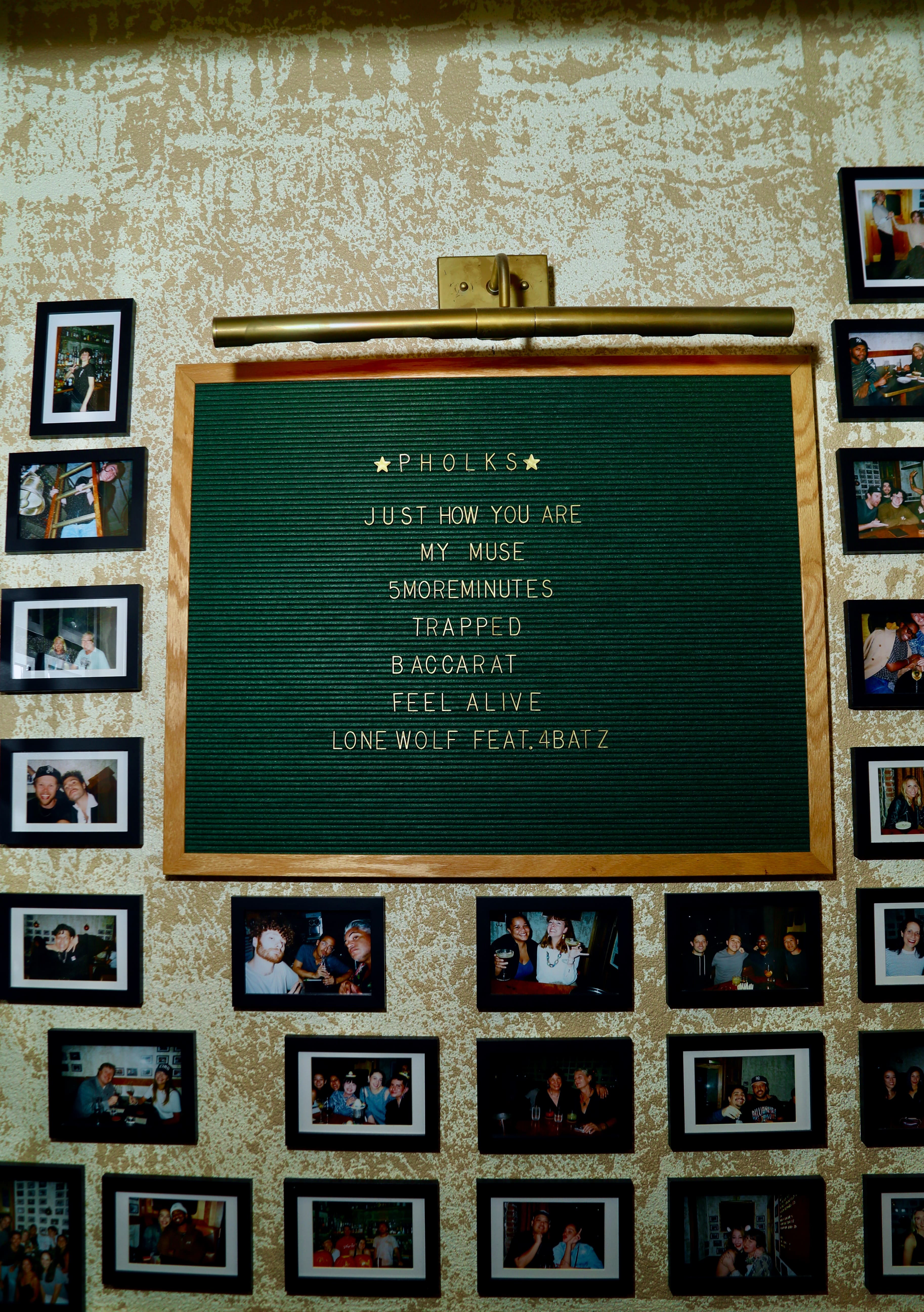
We recently had the absolute pleasure of covering two days of Leon Thomas's recent press run in New York City. It was a whirlwind victory lap that felt less like a standard promotional tour and more like a coronation. Fresh off the release of his genre-bending EP PHOLKS and leading the R&B field with six nominations for the 2026 Grammy Awards, including Best New Artist and Album of the Year, Thomas is clearly solidifying his status as an enduring artistic force.
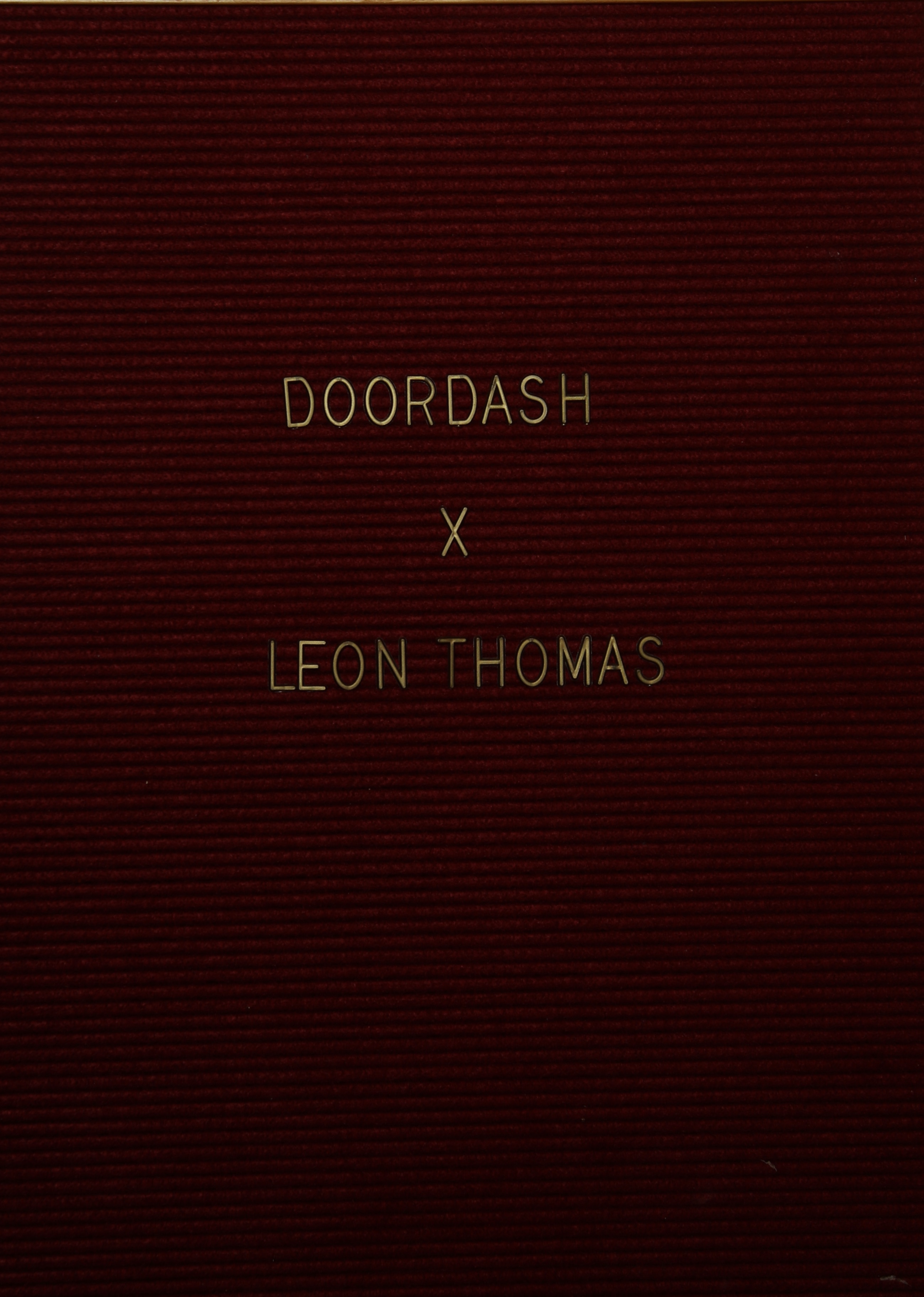
Witnessing him move between the intimate, retro allure of Soso's and the raw, streetwear-focused energy of his 40s & Shorties launch, one thing became clear: the way he pairs his sultry sound with that retro yet classic sense of fashion is no accident. It is a carefully curated mood, and it fits him perfectly.
%20(1).jpg)
The run kicked off with a one-night-only experience at Soso's officially dubbed "FOR THE PHOLKS." Hosted at Soso's (and bookable exclusively through DoorDash Reservations), the night was a proper homecoming.
Walking in, the vibe was immediate. Think Los Angeles' Sunset Strip crashing into New York's Studio 54. It had that perfect 70s flair mixed with a really intimate energy. The event was memorable, full of different people, vibes, and smiles, all there for one person. It felt authentic and not forced. Even if you came by yourself, you left with new friends and something to talk about. From the champagne on arrival to the funk-infused sounds, the whole night was a toast to community and creativity. Leon's personal style for the evening was impeccable, perfectly matching that retro-chic energy. He didn't just attend the event; he inhabited it.
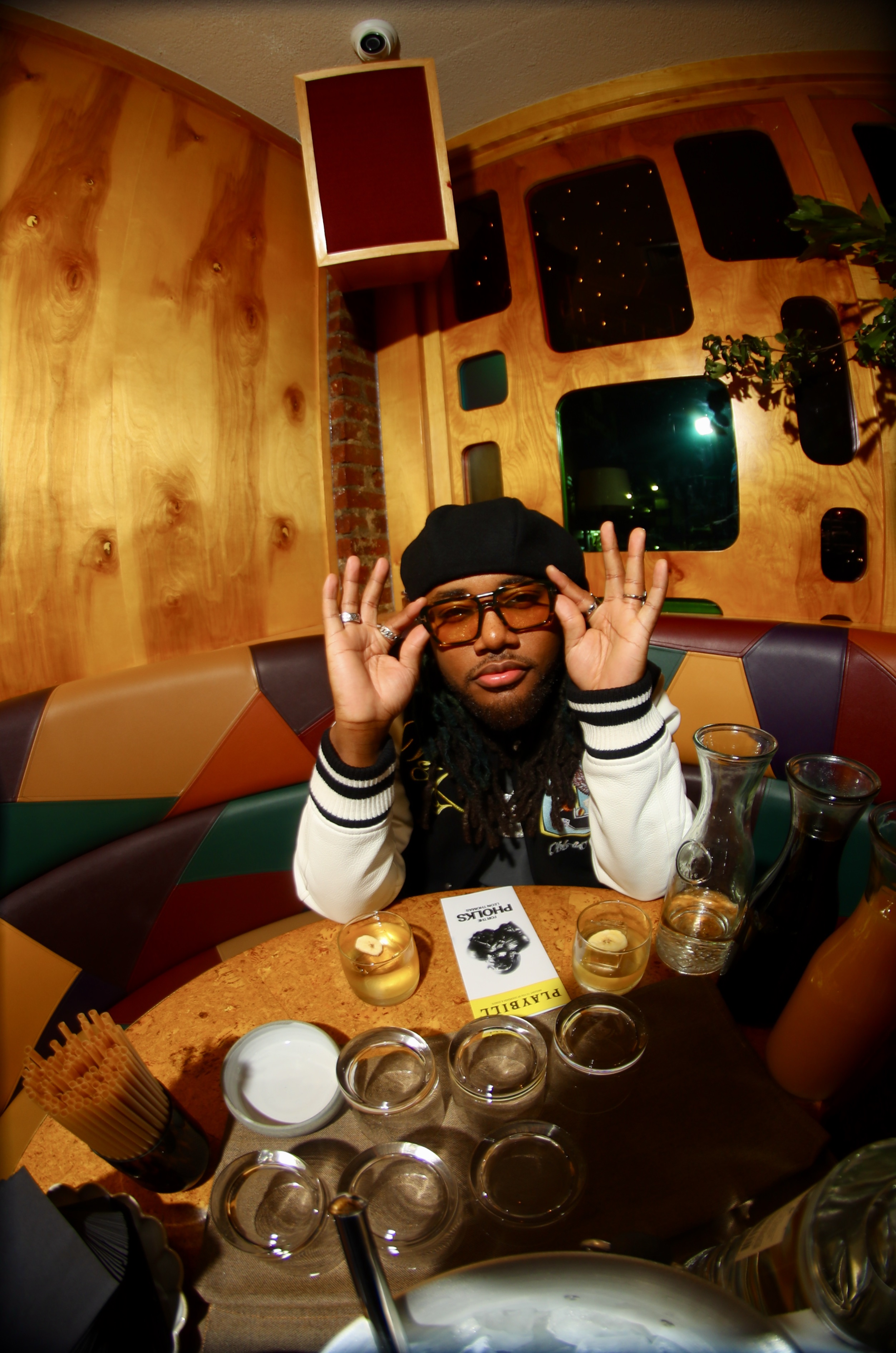
The event was a celebration of PHOLKS, a seven-track project released under EZMNY/Motown Records. While many might mistake it for a standard love album on the first listen, it is actually a project about radical self-expression and the honesty of hearing your own intrusive thoughts.
Because Thomas has such an amazing voice, you don't always realize immediately what he is saying, but when you really listen, the delivery is everyday and honest. It reminds me of the 70s: that ability to mask heavy, real emotions in a beautiful groove. Musically, you can hear the influences of Earth, Wind & Fire, the Jackson 5, and Prince, along with touches of P-Funk. It's a sonic blend that feels seamless, bridging the gap between nostalgic soul and modern confession.
In my opinion, Leon shows his true range in how he can live between rock, soul, and R&B. Being able to connect with such a vast audience through that blend is beautiful. He's not just one thing; he's able to live in three different genres seamlessly.

Being an 80s baby myself, I am so grateful to Leon Thomas for bringing back a specific kind of energy. Listening to his music feels like being transported back to a more colorful era. Think great big Afros, bell-bottom pants (even though those are making a comeback), and people genuinely dancing in clubs. It feels like a modern take on the records my mom played when I was a child. It's beautiful because it strikes a perfect balance: retro yet modern, driven by his specific delivery. His style is honestly genius. You rarely see an artist infuse different genres and time periods this effortlessly.
On the second night, the energy shifted from the retro soul of Soso's to the "Essex" collection preview with 40s & Shorties. This event marked the release of a limited capsule collection designed to coincide with the EP.
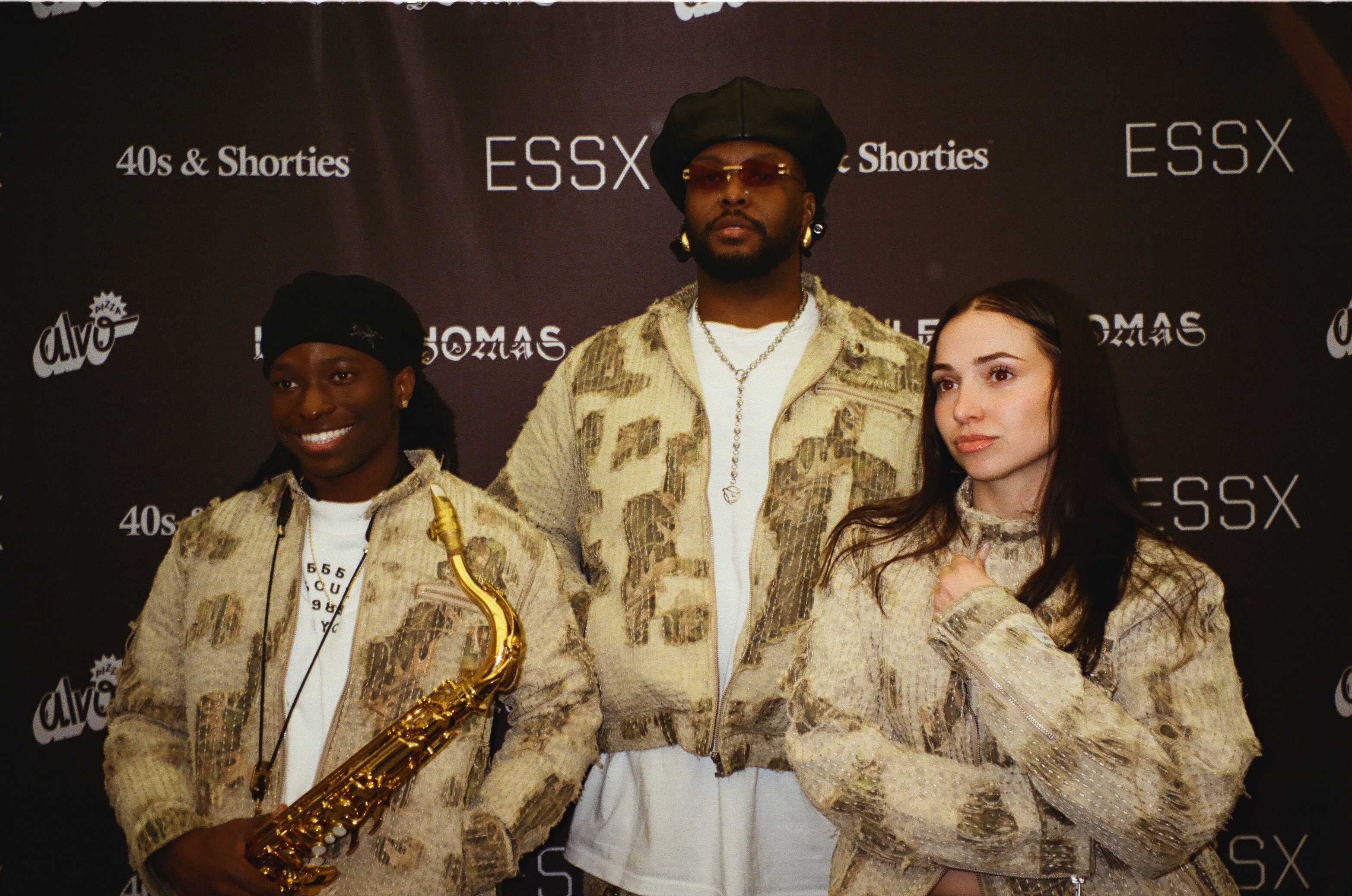
Much like his music, the collection is deeply layered. It features graphic tees, a unique triple-zipper hoodie, and a standout hand-textured boro-style jacket. Leon described the collaboration as an exercise in instinct: "We wanted to build pieces that feel lived in, expressive, and honest, the same way the songs on PHOLKS came together."
Adem Niazi, co-owner of 40s & Shorties, noted that the clothing mirrors Leon's personal evolution. "Listening to PHOLKS, you could hear the layering: the rock, the soul, the funk," Niazi explained. "We decided to make garments that reflected that, natural yet experimental."

Watching Leon Thomas navigate these two distinct worlds, high-fashion streetwear and retro soul, it is hard to believe this is the same person known to many as a child actor on Broadway (The Lion King, The Color Purple) or a Nickelodeon star on Victorious.
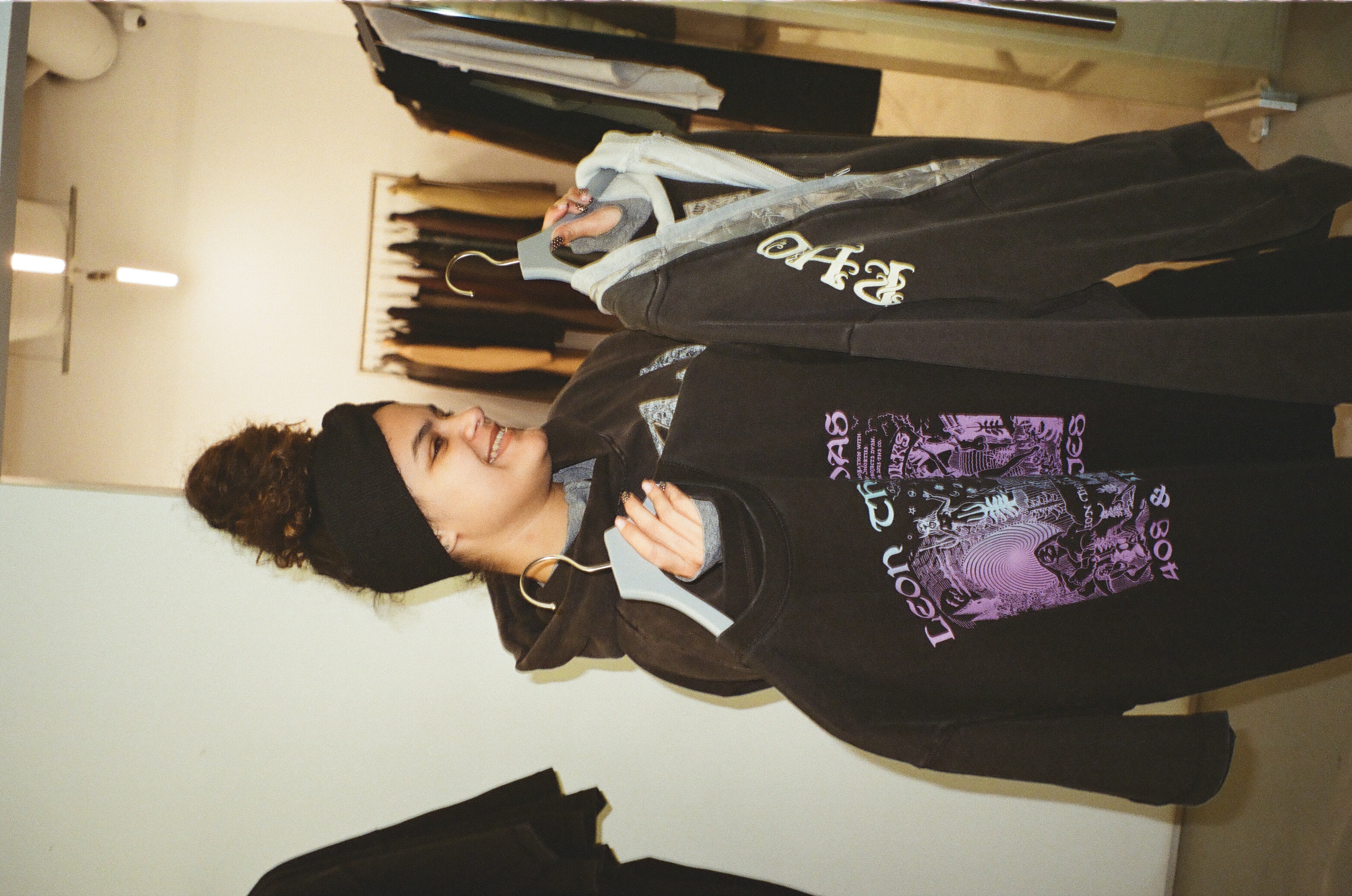
His transition has been nothing short of remarkable. After years of shaping the sound of industry titans like Drake ("Love All") and SZA ("Snooze"), Thomas has successfully reintroduced himself as a boundary-pushing solo artist. With PHOLKS, he has proven that his sultry sounds and classic fashion are not just an aesthetic, but the authentic expression of an artist who has truly found his voice. The PHOLKS era is a masterclass in artistic evolution, and if these two nights in NYC were any indication, Leon Thomas isn't just having a moment. He's building a legacy.
Photographs from Pholks event by Jelani Warner @Warners_work
Photographs from Essex event by Ethan Lopez @ethanfbaby
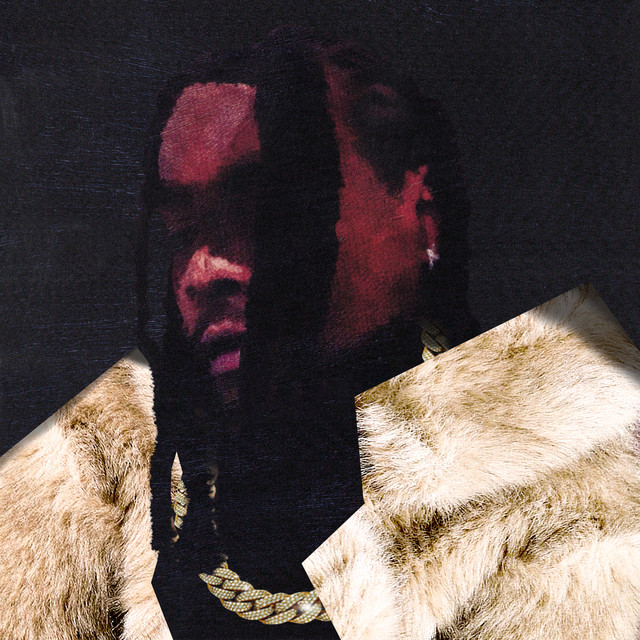
Where do I even begin?
We live in a time where, frankly, a lot of the music is about nothing. It has become background noise for parties, dancing around something mindless in a world where we desperately need our minds to be engaged. We need to see life clearly. As I get older, my search for music has shifted. I'm no longer just looking for a beat to distract me; I'm searching for music that makes me feel something. In a world filled with so much craziness and sadness, I want an escape, but I also want a connection. I want something positive, something I can be hopeful for.
Finally, Wale has delivered exactly that. His new album, Everything Is A Lot, is everything and more. In an era of singles and skippable tracks, I don't know many albums you can play from start to finish without reaching for your phone. This is most definitely one of the rare exceptions. You can feel the intentionality from the very first song to the second. It makes me reflect on how being intentional is the only way to truly impact and connect with an audience, and to gain a new audience simply by being amazing at what you do.
It takes a special listener to truly hear this, to understand the levels and complexity of putting together a stellar album. To hit every single emotion that a person could feel over a lifetime in one project is pure genius.
An artist like Wale is extremely intentional with every line, song choice, melody, sample, and even his features. A perfect example is the song "Big Head" featuring ODUMODUBLVCK. This collaboration feels incredibly purposeful. Wale, who is Nigerian-American, bridges the gap between two worlds. Growing up in America with Nigerian heritage myself, I found this track profound. It always seemed as if you had to be either African-American or African, that there was no connection between the two. For a long time, it felt like society tried very hard to obscure our identity. When you take away someone's culture, you inevitably affect their identity.
There was a recent interview where Wale's African identity was brought into question. I don't know if that conversation happened before or after this song was recorded, but I find it very interesting, and powerful, that he decided to include a track that so boldly highlights his lineage. It serves as a reminder that just because someone may not have been born on the soil, they are still very much of the culture. He is still very much Nigerian.
He doubles down on this intentionality on the track "YSF," featuring Teni & Seyi Vibez. Here, I feel as if he got even deeper into his artistic bag by using Nigerian slang, specifically adding the "O" at the end of each line. In Nigerian culture, the terminal "O" acts as an audible punctuation mark that amplifies the emotional weight of a statement, signaling emphasis, urgency, or warmth depending on the context. In my opinion, this is a clear statement to let people know, as well as his audience, that "I am of the culture and I understand the language."
The production itself mirrors this journey of self-discovery. The transition in melody throughout the music almost acts like a pause or a reset button to help you regain focus. A lot of times in life, we are trying to do better and learn more, but we get distracted and thrown off track. The way the music and melody change here brings you back to center, reminding you of what you are trying to achieve. I'll admit it: I'm a lover girl at heart, so I naturally gravitated toward the tracks that speak to that side of me. "City on Fire" and "Watching Us" instantly became my favorites. There is something deeply nostalgic about "Watching Us." The moment the sample hit, it took me right back to a specific time and place. I could vividly see the room I was in; I could feel the exact emotions I was grappling with back then.
But beyond the romance and nostalgia, there is a raw humanity here that we rarely see. Before I started working with celebrities, I used to think they were superhuman, that they had no real emotions and every day was a great day. I've learned that celebrities are people, too. They laugh, they cry, and they enjoy life. The difference is the enormous pressure they are under. They have people staring at them, critiquing their lives every day, and holding an expectation that they must always be happy. What makes an artist like Wale so impactful is that he has found a way to be authentically himself while navigating that pressure. Often, as long as a creator is creating, no one really asks if they are okay. But in this music, you can see the full complexity of his life.
He is extremely honest and vulnerable, particularly on the song "Blanco." He talks about drowning his sorrows, touching on the unfortunate reality of the music industry where alcohol is often used to dull inhibitions or force a good time. He speaks on people "joining his section," highlighting how sad it is that people often use others just to be part of the mix, a fleeting sense of belonging. He also touches on being nervous and vulnerable in love. We often say that men have to be hard and tough, but this album shines a light on how men actually think. It proves that this album isn't just for men; his music is for everybody, because these are emotions everyone has felt at some point in their lives.
There is a heavy reality to the song "Power and Problems." It's an inside look at what artists experience: the stress of fame and the people who might exploit you. But even a regular person can understand the need to question someone's motives and the necessity of protecting your energy, your legacy, and what you are building. The saying "to whom much is given, much is expected" is a very real thing. Being multifaceted comes with a tremendous responsibility. Being extraordinary is a gift, but it is also a heavy cross and burden to carry, especially when you are sometimes still figuring yourself out while others see your potential before you do. That is why the people around you during your healing stages are so crucial.
Fittingly, the album ends with the song "Lonely." On first glance, reading the title, I assumed it was ending on a low note, a confession of isolation. But actually, it's not that at all. It is a profound realization. It is the understanding that "I would rather be lonely outside," meaning standing apart in an industry where there aren't a lot of people like me. It is a declaration that he is totally okay in his own space. He has done the work. Even though it's hard, there is too much at stake to settle for anything less. To end on that note was brilliant. Well done.
The title, Everything Is A Lot, makes complete sense to me. The world is heavy right now. We are constantly overstimulated. This album acknowledges that weight but offers us a place to set it down for a while. It is a reminder that even when everything is "a lot," there is still beauty to be found in the intentionality of art.
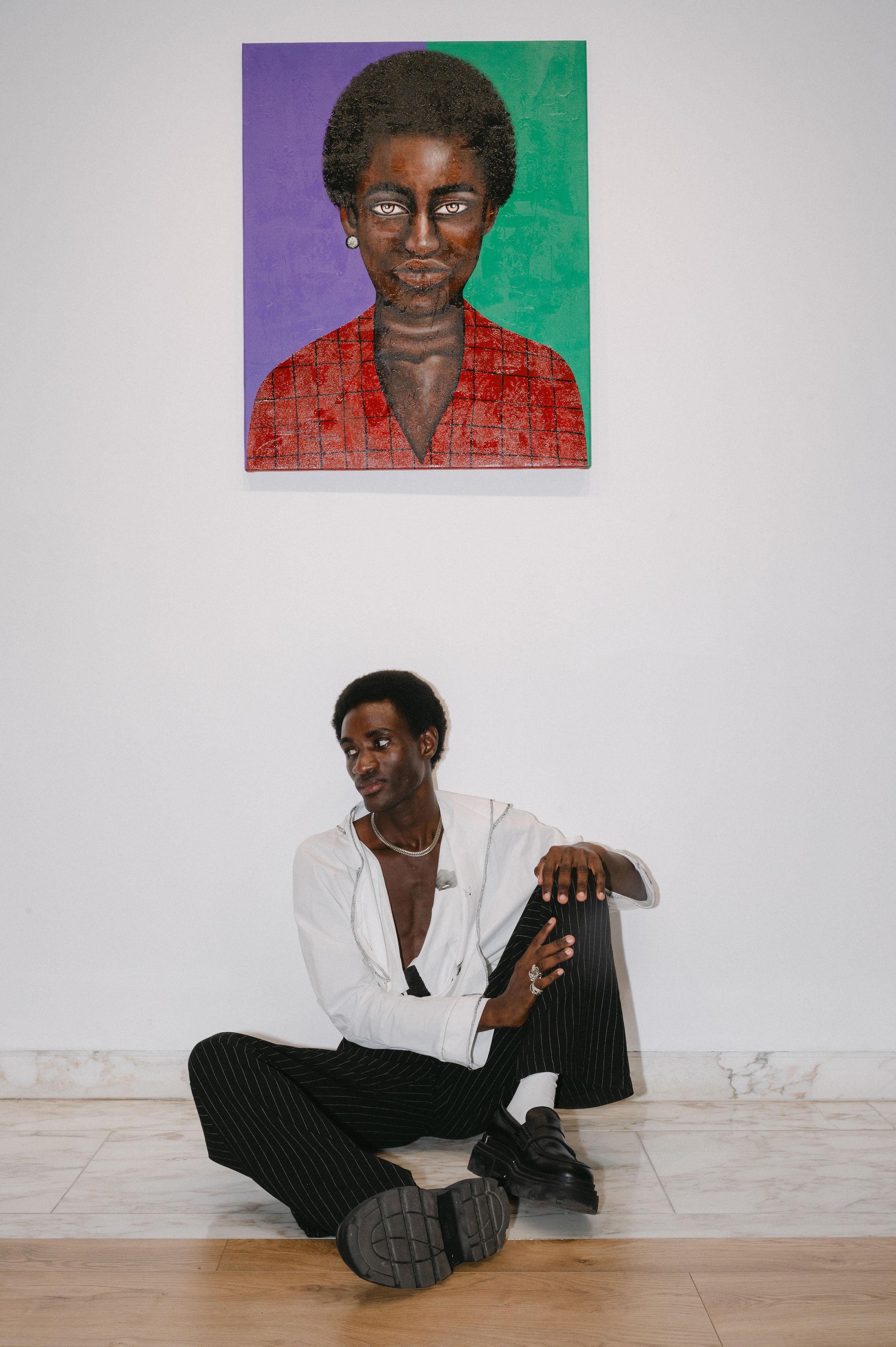
Most contemporary African art circulating in global galleries speaks the language of spectacle, bold, immediate, designed to translate across cultures in a single glance. Modou Gueye's work operates differently. The Senegalese painter builds his canvases around nattes, a Wolof word that refers to both the woven floor mats that anchor Senegalese domestic life and the intricate braided hairstyles passed down through generations of women's hands. These are objects and gestures so embedded in everyday experience they risk becoming invisible, yet Gueye insists they contain entire archives of memory, identity, and care.
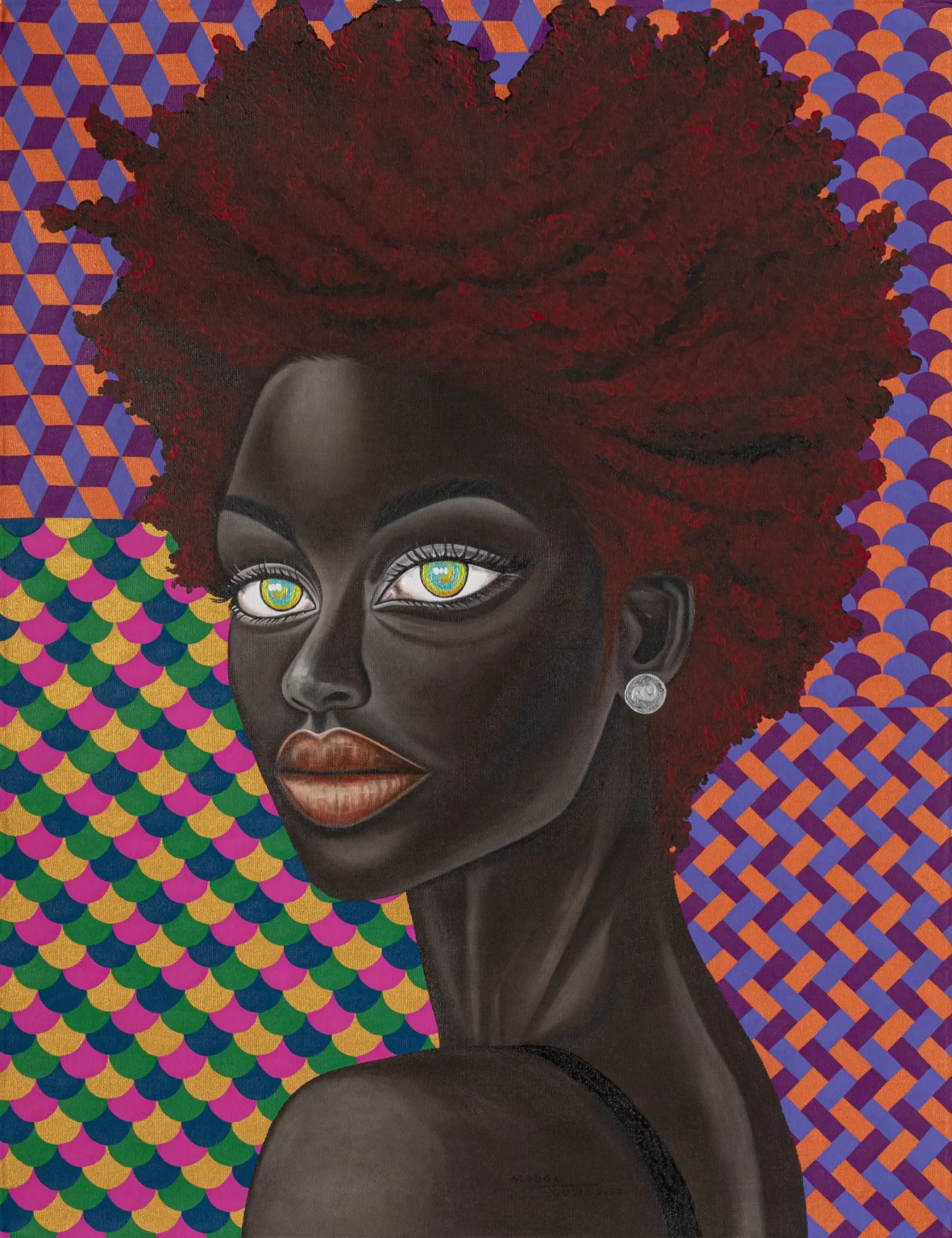
Against vibrant geometric backgrounds that pulse with color, tessellated patterns in orange, purple, yellow, blue his subjects emerge with quiet dignity. A woman holding flowers. Two figures in yellow and purple, their hands gently framing each other's faces. A young girl on a swing, surrounded by the same patterns that might appear on a mat beneath her feet or woven into her hair. The repetition isn't decorative. It's structural, a visual argument that the textures of childhood and the architecture of culture are inseparable.
In Les nattes de mon enfance (The Mats of My Childhood), Gueye positions these everyday acts, the laying out of mats for family gatherings, the patient braiding of hair, as foundational cultural labor, mostly performed by women, mostly unacknowledged. His project doesn't romanticize this labor. It makes visible what Western art institutions have long treated as background, insisting that the spaces where culture is actually built deserve the same attention as the monuments it produces.
This is art as cultural reclamation, but also as intimate reckoning. Gueye paints from memory, which means he paints from love.
Can you introduce yourself and tell us a little about who you are as an artist?
My name is Modou Gueye and I am a Senegalese painter whose work is deeply rooted in memory, childhood, and the quiet strength of my cultural heritage. I grew up surrounded by nattes, both the woven floor mats on which life unfolded, and the braided hairstyles that marked moments of care, identity and belonging.
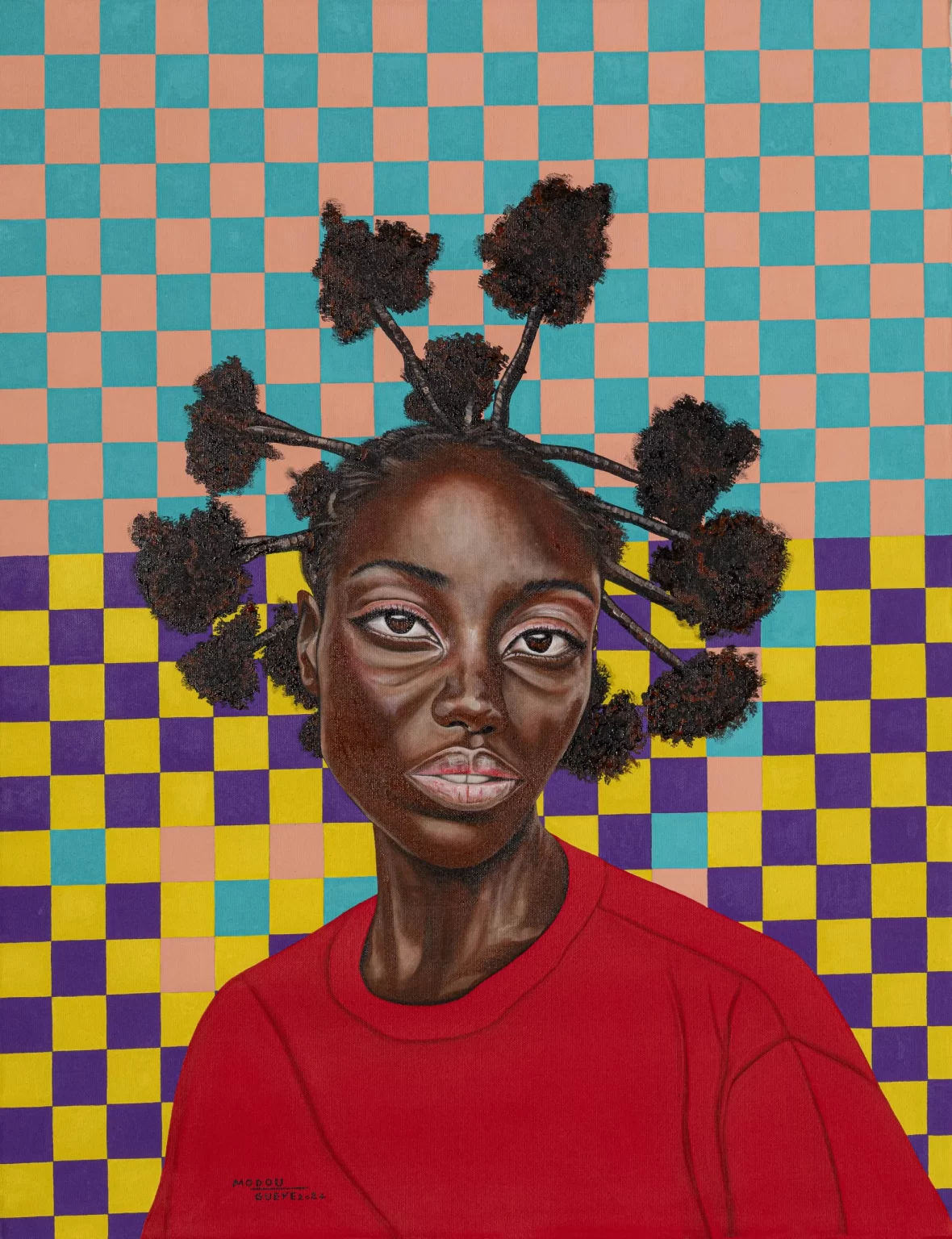
Today, my art reinterprets these nattes not just as objects or hairstyles, but as living archives of African memory, places where emotions, traditions and stories intertwine. Through color and texture, I try to reconnect the intimate spaces of my upbringing with a contemporary visual language.
What inspired this piece or project?
My project "Les nattes de mon enfance" was born from a need to honor the emotional foundations that shaped me. The woven floor mats of my childhood were more than surfaces: they were social territories, places where families gathered, shared, prayed, argued, dreamed.
And the braided hairstyles of the women around me were equally powerful symbols of beauty, patience, continuity and care. Both forms of braiding taught me the same lesson: Identity is something we weave, thread by thread. This project is my way of bringing those textures, gestures and memories back to life.
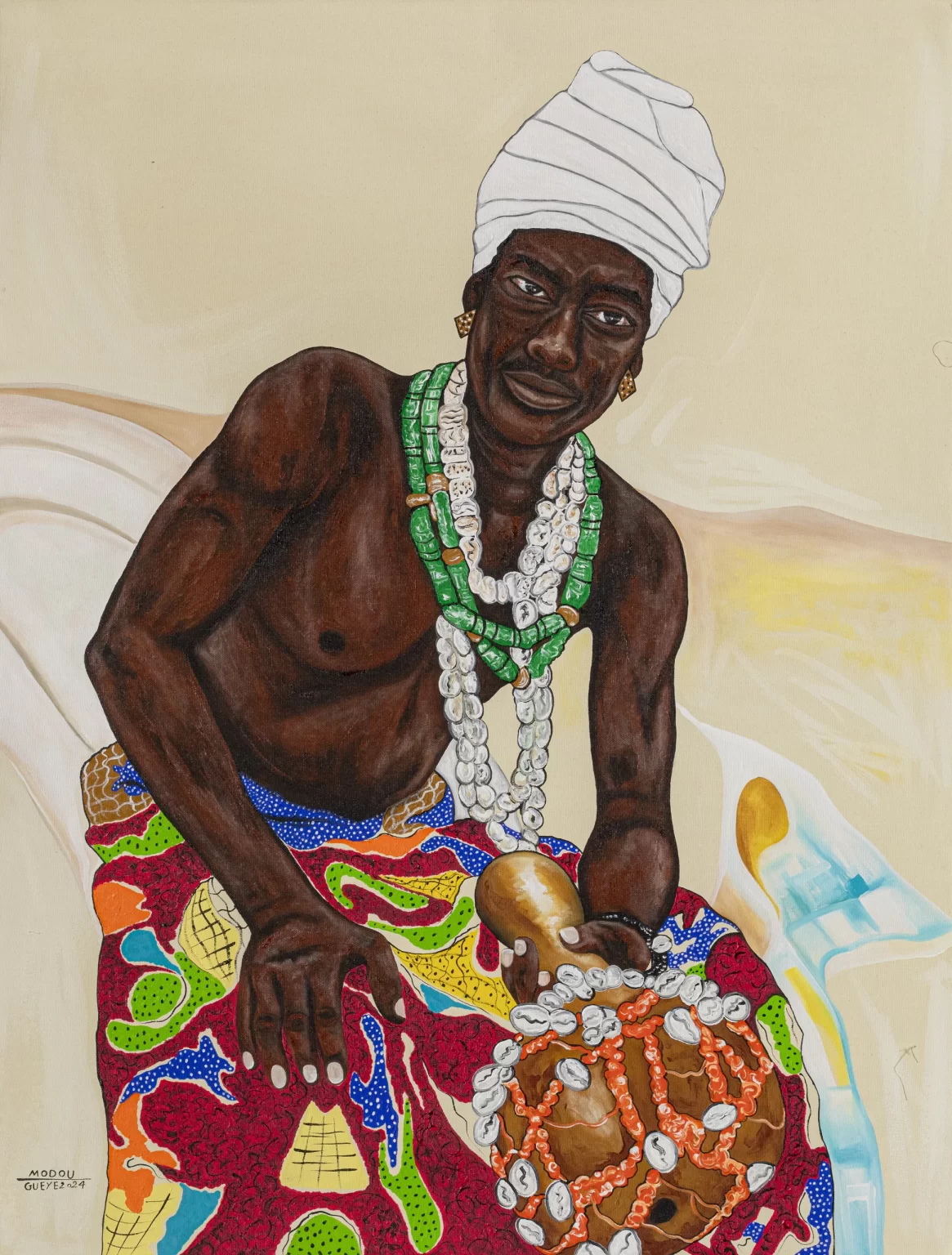
What themes or messages do you explore through your work?
I explore themes of memory, identity, resilience, and the intimate architecture of African life. The mat and the braid become metaphors of how we connect:
- How our lives intertwine,
- How our stories are transmitted,
- How beauty emerges from repetition and patience.
Through vibrant colors and layered compositions, I reflect on heritage, belonging, and the emotional spaces where culture is silently built, often by women whose hands shape the community.
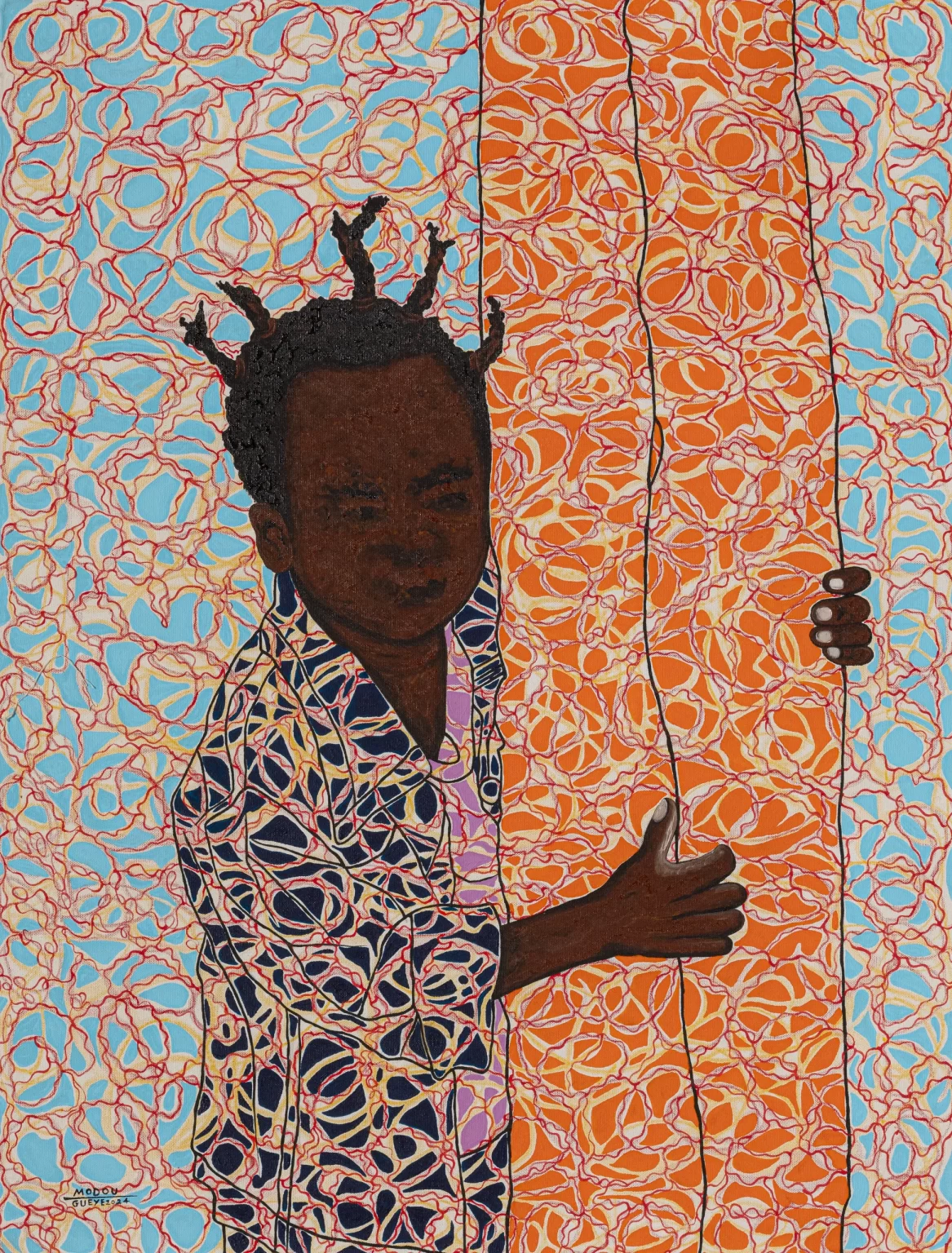
How does your art connect to action or change?
My art seeks to recenter the everyday objects and gestures of African culture, which have often been overlooked or reduced to decoration.
By putting nattes, both the mats and the braids, at the heart of my compositions, I challenge the world to acknowledge their symbolic weight.
It is a way to say: Our domestic spaces matter, our aesthetics matter, our stories matter. This is my contribution to cultural recognition and the preservation of intangible heritage.
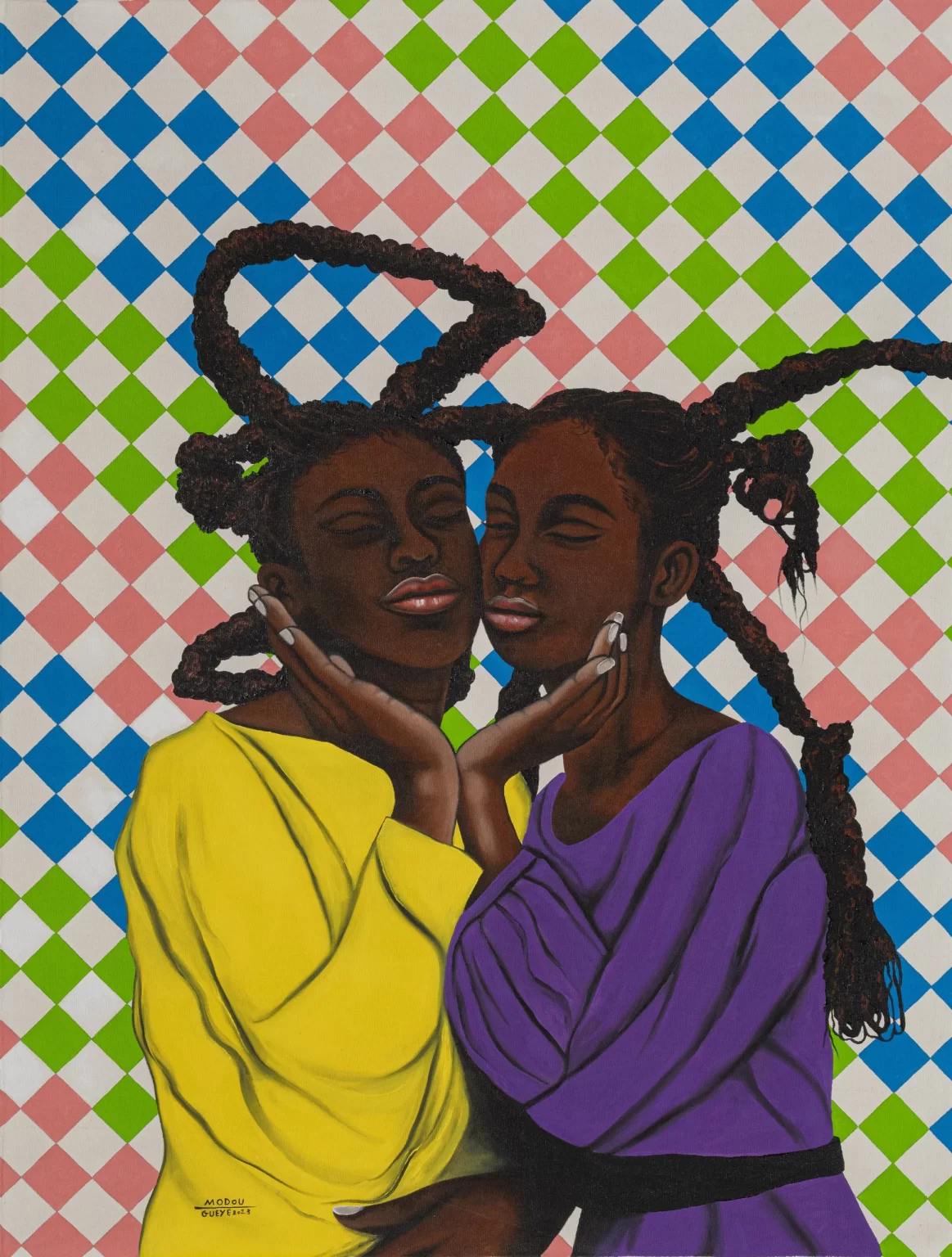
Why is it important for you to create art with meaning or impact?
Because art carries memory. And memory shapes identity. Creating meaningful art allows me to protect what could be forgotten, the textures of childhood, the gestures that transmit love, the beauty found in the simplest moments. I want my paintings to act like quiet reminders that African heritage is not only majestic but also profoundly intimate.
Can you share a moment or experience that shaped you as an artist?
I remember sitting on a woven mat next to my grandmother, watching her braid a young girl's hair. The rhythm of her fingers, the softness of the movements, the stories she told while working, those moments taught me everything about patience, dedication and transmission. That day, I understood that creation is an act of care. That memory still guides my art today.
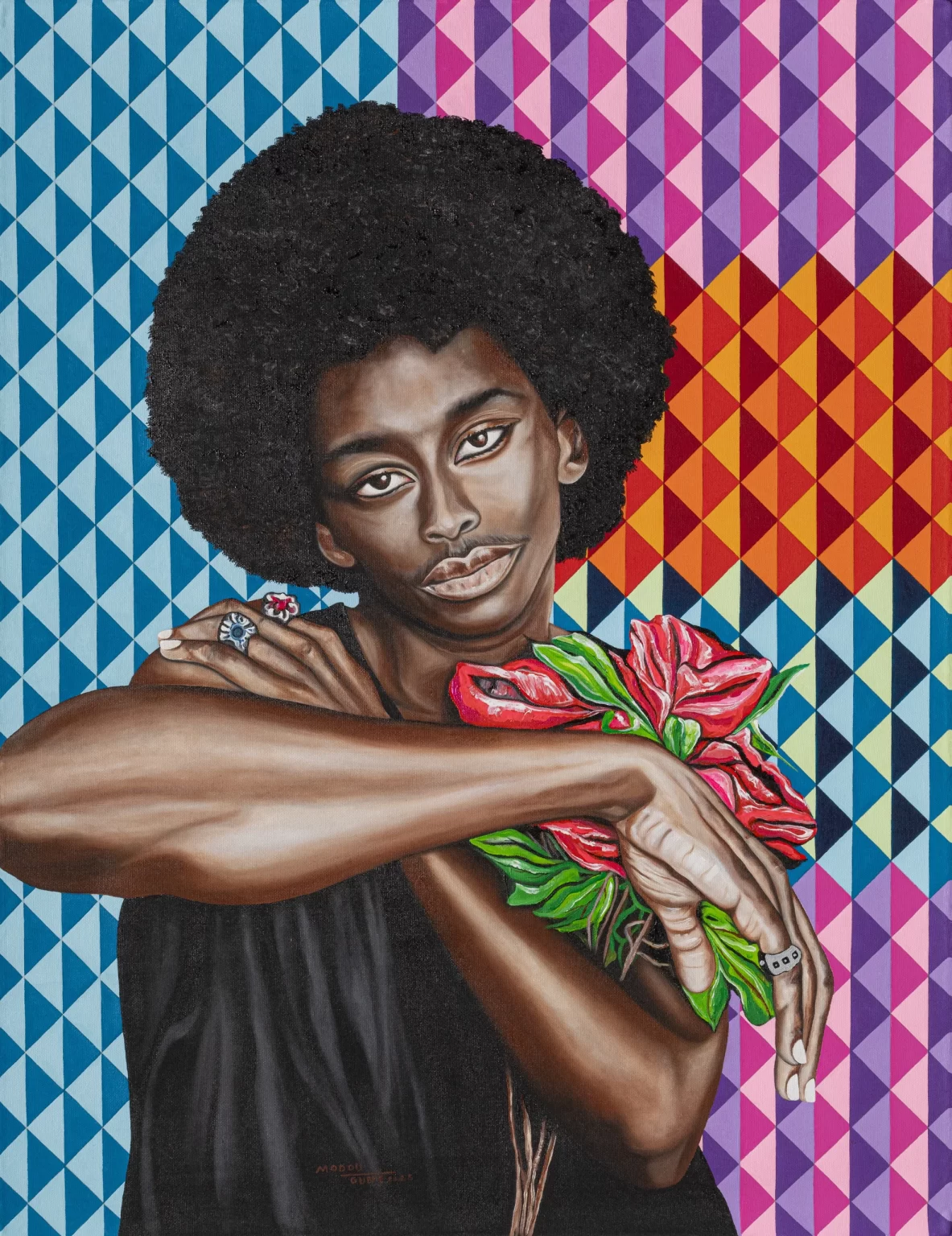
What do you want people to know about you beyond your art?
Beyond my paintings, I am a man who values silence, humility and human connection. I believe in observing deeply, listening carefully and honoring the invisible work that shapes communities, especially the hands that braid hair, weave mats and weave life. My art is not nostalgia. It is a bridge between generations, between memories, between worlds.
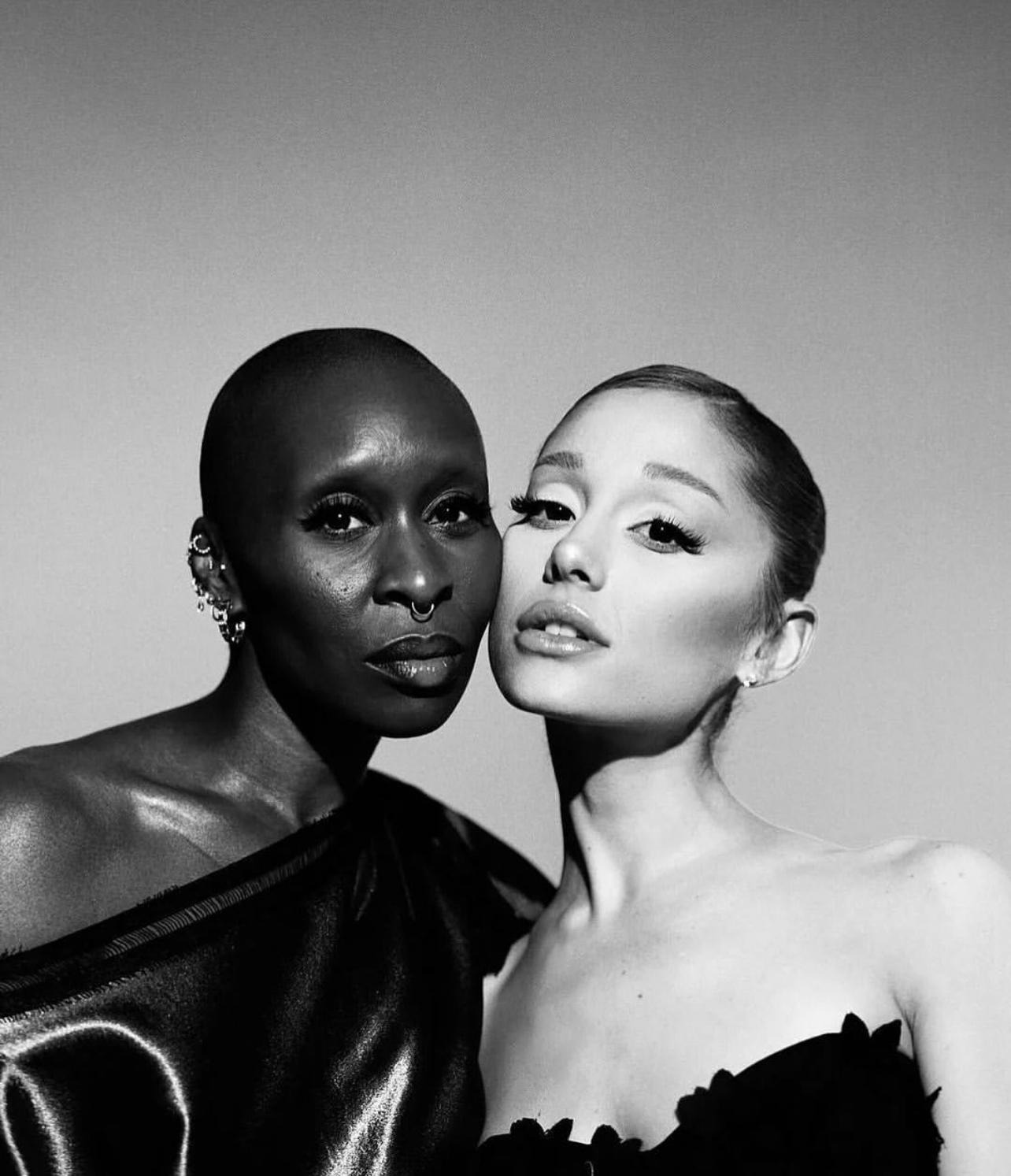
We’ve waded through endless tulle and storms of sequins this week. But beneath the spectacle, what we really saw was a lesson in storytelling.
As 'Wicked' finally arrives in theaters globally this month, the fashion world is taking a collective breath after witnessing perhaps the most committed, protracted, and thematically rigorous press tour in modern Hollywood history. For nearly a year, Cynthia Erivo and Ariana Grande haven't just promoted a movie; they have inhabited a visual universe, turning every premiere and photo call into a live-action extension of Oz.
While method dressing, actors dressing in character on the red carpet had become the new normal ever since the 'Barbie' press tour of 2023, Erivo and Grande have elevated the concept into high art. They moved beyond mere cosplay into a sophisticated exploration of duality, using couture to map the emotional landscapes of their characters.
The Glinda Aesthetic: Archival Sweetness
Ariana Grande’s approach to Glinda the Good Witch was an exercise in disciplined etherealism. Guided by "Image Architect" Law Roach, her wardrobe was a deliberate rejection of the modern, leaning heavily into archival pieces that evoked a timeless, almost fairy-tale quality.
Her look was never just pink. It was bubblegum, blush, rose, and icy pastel, rendered in textures that defied gravity. The defining moment of the tour was the reliance on vintage, specifically an archival Givenchy (from the Alexander McQueen era) worn in Paris. It was a high-fashion flex that signaled this wasn't just costuming; it was fashion history.
Whether in custom Balenciaga or Giambattista Valli, the silhouettes were vast. Giant pannier skirts, enormous rosettes, and cloud-like tulle served to make Grande look diminutive, fragile, and almost untouchable, a perfect visual metaphor for Glinda's bubble-bound existence.
The Elphaba Aesthetic: Architectural Strength
If Grande was the cloud, Cynthia Erivo was the lightning bolt.
Styled by Jason Bolden, Erivo’s challenge was greater: How do you evoke the Wicked Witch of the West without resorting to Halloween clichés? The answer lay in structure, severe tailoring, and a color palette that moved beyond literal green into deep emeralds, onyx, and metallics.
Erivo utilized her athleticism to carry clothes that would swallow a lesser presence. The focus was on imposing shoulders and architectural shapes. The custom Louis Vuitton looks she favored throughout the tour used heavy fabrics and sharp lines to create armor, suggesting Elphaba’s defensive exterior. Instead of pointed hats, Bolden utilized avant-garde headwear and aggressive accessories, particularly with a custom Dior look in Mexico City, a black, hooded gown that felt monastic yet threatening.
The Visual Duet
The genius of the 'Wicked' press tour was not in the individual looks, impressive as they were, but in their juxtaposition. Erivo and Grande rarely matched; they counterbalanced. When they stood together on a red carpet, they created a vibrating visual tension representing the film's central conflict.
As the lyrics to the film's opening number suggest, "No one mourns the wicked," but in the case of this press tour, everyone will mourn the end of these red-carpet moments. They didn't just wear beautiful clothes; they used fashion to build a yellow brick road straight to the box office.